How to Give Assignments to Team Members
Table of Contents
The project has been divided into milestones, goals and objectives broken into tasks, and now it’s time to assign them. But as you open the project management platform, you’re faced with the unflattering process of wording the tasks, and choosing whom to assign them to.
Well, in this article, we offer advice on how to make that jumbled first moment a little clearer. There are actionable tips, learning the difference between allocating and delegating tasks, and suggested criteria on how to choose the best person for the job.
For a more precise overview, here’s a table of contents:

How do you assign employees tasks?
We normally think that assigning tasks is a time-consuming process that focuses on clearing out task lists to keep the project going. However, task assignment should actually be a more employee-oriented process that requires additional dedication and effort, which yields incredible results. But what do we mean by that?
Properly assigned tasks push your employees, projects, and the overall company forward. Here’s how.
- They strengthen accountability and trust between managers and employees;
- They help teach new skills and perfect old ones;
- They allow employees to get familiar with other teams and avenues of work;
- It becomes easier to make project estimates;
- Makes for great bases for performance reviews, etc.
The list could go on, but we’ll stop there for now.
Of course, such long-term benefits don’t come without some proverbial blood and sweat in the planning stage. Let’s take a look at the general ideas on assigning employee tasks, and specific steps you can take.
Motivation comes from knowing the bigger picture
When we talk about the bigger picture in project management, we talk about each team member’s task affecting their peer’s down the line. Since all tasks are usually small pieces of the puzzle, it helps to remind employees how their work contributes. For example:
- A high-quality draft can make a great foundation for the final version, and it can be completed more quickly.
- A well-prepared presentation can shave time off unnecessary questions and additional email inquiries.
It comes as no surprise that people work better and are more productive, when they know that their work has an impact on the company level.
And so, when you assign tasks, try to emphasize how they fit in the bigger picture. Simply saying: “ You doing X will help with Y and Z ” and how it reflects on the project as a whole will let an employee know that the task they were assigned is important.
Get your employees excited to commit
Telling people about the bigger picture and showing them what’s possible can only get them so far. It’s enough to ignite the initial spark, but for them to fully commit to the task, you need to define what that task entails.
They should be able to picture how to go about the work, what skills to use, and how to reach the desired result. The clearer the instructions, the more motivated they will be to work.
Simply put, give directions on how the task should be done, and make sure they understand. You can’t read each other’s minds, so it’s important everyone is on the same page.
Ask for task transparency
One of the best practices a company can employ is transparency among coworkers.
This is achieved by having everyone input their tasks for the day in a timesheet. The purpose of timesheets is to get an accurate idea of what everyone is working on at any given time.
When people know who works on what tasks, it’s easier for them to know if a person is available or busy, how far along they are with a task, etc.
So, when you give assignments to employees, label them with deadlines. Alternatively, you can ask for employees’ assessments on how long the work would take them, and use those timeframes.

Source: Clockify team timesheet
Timesheets are a great way to keep an eye on tasks and the people doing them. You get to:
- see who struggles with what (helps assess people’s skill sets);
- who burns through their workload and is available for additional tasks;
- whether your time estimates need correction;
- identify any wasted time.
💡 If your employees are insecure about keeping public records of their tasks, here are a few resources that can help:
- How to create order in your daily work tasks
- How to be more efficient with your tasks
Keep a crystal clear timeframe
While we’re discussing timesheets and deadline transparency, it’s important to mention that the times you set for task completions need to be clear-cut.
As we’ve mentioned, the safest way to assign deadlines is to consult the employees. They are better at assessing how long it will take them due to the tasks’ difficulty, overall deadlines, the standards that need to be met, and the skill required to complete it.
When they get a say in how long they should be doing an assignment, people tend to feel more accountable for the whole process. They will do their best to finish in time, since they actively participated in setting the deadline.
Set very clear expectations
Assigning a task should always include your (the supervisor’s) expectations pointed out. For example:
- Does a logo pitch need as many drafts as possible, or just a few finished pieces?
If you ask a designer to make some drafts for a logo pitch, you must specify the kind of quality you’re looking for. Explain whether you are looking for some sketches and drafts for a brainstorming meeting, or if you want clean, presentable pieces to show.
Additionally:
- How many pieces should the designer do?
- Is there a specific color palette they need to follow?
- How important is the task? Is this the day they finally decide on a logo, or is it still in the brainstorming stage? (decides on the quality of the work itself)
Assigning the task using the above questions, you help the designer understand how much effort precisely they need to invest. They become more motivated with clear instructions, as they know what is expected of them. There’s no fear of having their work criticized for something that wasn’t communicated in the beginning. And on your end, it prevents breached deadlines or subpar results.
Avoid creating dependency by being less involved
It’s not unusual for employees to ask their supervisors for their opinion on a certain task, or their performance.
The problem arises when a supervisor makes themselves too involved with the process. When they feel like the project might fall apart if they don’t have their eyes on every moving part all of the time. And when you have, say, 20 people waiting for that person’s approval, advice, or consultation, the workflow runs into a gridlock.
And wait time is wasted time.
Plus, people lose motivation, patience, and grow frustrated, as they could be doing other things.
So, learn not to jump in every time people call for your aid. Assign reliable people who can address smaller issues, while you handle the big picture. Learn how to expend your own energy where it is needed more.
For example – making a pitch presentation for potential investors keeps getting put off because one person needs you to check a client email they want to send, another wants your signature on a form, and the third wants to ask something about employee feedback that’s coming up.
In order to not be stretched thin, and have your time wasted on menial tasks, here’s where you can start:
How to mitigate the risk of being over-involved when assigning
- Remember that you match tasks to people
Which means that, by matching the right people with the right tasks, your involvement will be minimal. Take time to carefully choose who gets to do what. What is the point of assigning tasks if they can’t be done without you?
- Have a 10-point scale to judge the importance of items
How important are certain aspects of your leadership role? Are you absolutely necessary in every meeting, or during every call? Which tasks need your approval, and which ones can be approved by someone under you?
Rank these items on a scale of 0 to 10, based on their importance to you and the project. Top priority tasks should get your undivided attention. And what can be delegated, should be.
- Analyze your schedule
Your energy and time are needed on a much broader scale. The best way to spot if you’re wasting time being too involved is to look at your schedule. Identify how much time you’ve spent on low-priority items, and assess which issues could’ve been solved without you.
- Take into account priorities and deadlines
Step in only when absolutely necessary. You are in charge of things getting done on time, by people most qualified for assigned tasks. Determine what your priorities are for each project, and concern yourself only with those issues, unless there is a risk of breaching a deadline.
- Formulate a list of dependable people
If you know your employees (or team members) well enough, then you should be able to single out those who are more dependable and ready to take on a little more responsibilities. Write out the reasons how they could help by getting involved on low-priority items instead of you. When the time comes, rally them and present them with the idea, keeping in mind that this solution helps push the project forward. When authority is delegated to several people, there’s fewer chances of a hold-up in the workflow.
This also falls into the realm of task delegation , which we’ll get into later.
How do you decide what tasks to assign to which employees?
1. assign based on priority.
Naturally, some tasks will be more important than others. When you break down a project into tasks , spend some time assessing their priority level.
High-priority tasks should be the first on your list to allocate. Whether it’s because they’re time-sensitive, or require more effort and dedication.
Low priority tasks can be allocated as fillers to the first available person.
2. Assign based on employee availability
Another factor to consider when assigning tasks is who is available at the moment.
As the project moves along, new tasks will be added. You will have to allocate new work, but odds are you won’t always be able to pick who you want. Especially if a deadline is approaching, the person with the smallest workload should be your first choice.
Overloading an already busy individual just because they’re more skilled or you have faith in them the most puts an unnecessary strain on them. It’s cause for frustration, poorer results, and decreased productivity.
And as we’ve mentioned, if you have a timesheet with an overview of all the tasks and employees working on them, it’ll be much easier to spot who is free and who isn’t.
3. Assign based on employee skill level
High-priority tasks should go to employees with more experience in a given field or skill. However, you should occasionally give such tasks to other employees as well, to help them grow and become just as dependable. Giving people challenging tasks that can boost their experience is essential to productivity and morale.
Not to mention you get to have multiple high-skilled employees.
Low-priority tasks can be assigned to anyone, despite their experience level. They’re a good opportunity to practice, pick up new skills, or get smaller tasks out of the way to make room for more important ones.
4. Assign based on preference
Last, but not the least, preference can also play a big part in how you assign tasks.
It’s a given that some employees will prefer certain tasks over others. So it could be good to assign tasks at a meeting with the team. As you discuss priorities, deadlines, and availability, ask them which tasks they would like to work on.
If someone shows interest in a specific type of work, they should (with some consideration), be allowed to take it. After all, people are more productive when they’re assigned to something they find new or exciting.
Note: Apply this rule with caution. Letting people do only the tasks they want can stunt their career growth. Getting out of our comfort zones and occasionally doing tasks that we don’t like is how we develop and learn. So, don’t forget to document assignments as you hand them out, to spot these potential issues early on.
Allocating vs delegating tasks
While semantically similar words, delegation and allocation in terms of tasks are two different things.
When you allocate tasks , you are assigning tasks without giving the employees much authority, challenge, or room to grow. It includes you keeping all of the responsibility – writing out the tasks, making deadlines, providing resources, tools, etc. These are usually recurring tasks that can become repetitive.
When you delegate tasks , you allow for some of that responsibility to fizzle out from your fingers. All you think about are the objectives, while letting the employees figure out the details and means to get there.
However, that doesn’t mean delegation is right and the allocation is wrong.
Task allocation has its own place. It is just as important, as a lot of tasks come down to repeated processes that are still vital to the project progress. Task delegation is just a good opportunity for employees to learn, challenge themselves, and assess their skills and performance.
When should you allocate tasks?
Management and BizDev consultant Artem Albul shared his concept on task assignment, which he dubbed an “algorithm”. He emphasized how these criteria are useful only and only when you wish that employees perform the tasks based on your guidelines and instructions (aka allocation).
Here is how Albul broke down the algorithm:
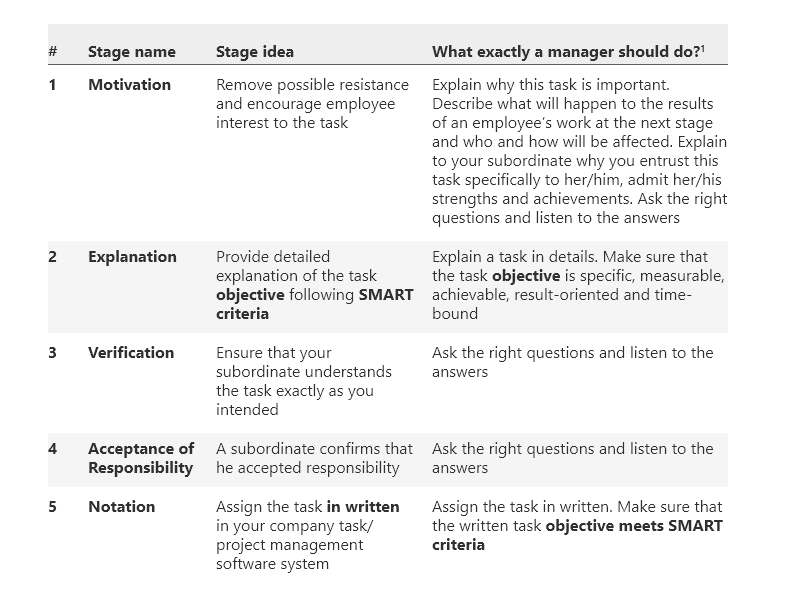
Source: Artem Albul, TWA Consulting
As we can see, task allocation, while the more “controlling” of the two, also gives in-depth instructions and asks for confirmation on task clarity. A lot of it comes down to everyone being on the same page, leaving little to no room for misinterpretation (but also creative freedom).
How should you allocate tasks?
With all that we’ve mentioned in the previous section, here’s how your task allotment could look like, step by step.
- Break down your project
Detail out the goals, objectives, and some individual tasks (not all, be careful not to start micromanaging). Place the most important deadlines.
- Prioritize tasks and sort them
It’s important to know what tasks need to be done faster/better, to properly allocate your resources and manpower from the start.
- Make a list of teams and team members
Assign team leaders (if you don’t have them), and alternatively, ask for their input on individual employees skills, for a more informed decision on who gets what.
- Schedule a meeting
Make a meeting with the team leads and go through the points above. Assign tasks according to each team’s availability, interest, and skill required to successfully push the project forward.
- As team leads – assign tasks further down the pipeline
- Track task completion and make necessary changes along the way
Whether it’s pushing deadlines, reassigning tasks, or shifting around resources. This is perfectly fine and expected, so long as it doesn’t happen on every task you’ve assigned. Then, it is an indicator of poor pre-planning.
- Offer feedback and write performances
Don’t forget to track the progress and make notes of important details that might help the next task allocation/delegation process. It’s also a useful piece of information for the employees on what they need to improve on.
Allocating tasks is somewhat more complicated than we want it to be. But, this kind of thorough research and preparation will make projects run more smoothly. Employees will also be more satisfied with their work, and there will be less hurdles as deadlines approach.
When should you delegate tasks?
Delegation is a great practice in trust for both the employer/supervisor and the employee. The employer learns how to give away some of their control over the process, while the employee learns how to take more accountability for their work.
This lets you focus on big-picture aspects of your job, since you deal less with assignments that are low-priority for you. You save time and energy, while helping others move up in their careers.
How do you effectively delegate tasks as a leader?
As we’ve mentioned, delegating includes more employee independence. There are some additional components which make this type of task assignment more appealing than allocation, with great opportunities for growth.
Focus on delegating objectives instead of actual tasks
When you delegate, you focus on the objective that needs to be done. You shouldn’t give employees a “color by numbers” instruction on how to complete a task.
Communicate clearly what the end result should be and what expectations you (or the higher-ups) have. Leave the means for reaching that end goal to the employees themselves. Because how you solve a task may be completely different to how they will. And that is perfectly fine, so long as the result is the one you are looking for.
Keep the objectives challenging
When the objectives you’re delegating are too easy, chances are the person will either procrastinate, or feel like you don’t trust them enough. And if they’re too difficult, they get frustrated, anxious, and begin to panic.
It’s a good idea to be aware of an employee’s skill level, so you can gauge how much challenge and responsibility they can take on. For them to be the most productive and achieve great results, they need to enter “the state of Flow”.

Source: Optimal Experience , M. Csikszentmihalyi
💡 We’ve discussed the state of Flow in more detail in an article on time organization.
Encourage discussion and feedback
Let employees voice their opinions on the topic.
They should ask anything about the task, the goals, or the overall impact their work will have on the later stages or others’ workflow. It means they are interested in the task, and getting involved.
And if they aren’t asking questions themselves, you can always nudge them into proactivity.
- Is there something you’d like me to clarify?
- Do you already have any ideas on how to go about the task?
- Is the time we agreed upon enough for you?
- Will you need other resources, tools, or support?
- Do you see any problems or risks?
Questions like these help them feel valued, their efforts acknowledged, and let them know you care about the task and how well they perform. Just be careful not to overdo it, or you’ll start to look like a micromanager.
Give employees free rein, but offer support
Speaking of micromanaging, delegation means you let people problem-solve their way out on their own. There should be no reason for a manager to step in and control or supervise any step of the process, unless absolutely necessary.
However, what you should do is let them know you’re available for any advice should they feel stuck. Just because employees get authority on a certain task, and are left to their own devices, doesn’t mean the project has to suffer until they pull themselves up.
From time to time, ask them if they need anything from you, and make sure they know you’re there for any kind of support, consultation, or mediation. ANother good practice is to also give them additional learning opportunities – such as training, conferences, courses, etc.
Delegate objectives that move people forward
Choose assignments that boost the skills and employ all of their experiences, instead of something that simply needs to be done. For example:
- Tasks that require they brush up on their team communication skills;
- Learning how to allocate smaller tasks;
- Supervising others’ work and doing quality control;
- Learning to work with a new tool;
- Holding a meeting (or more), etc.
Find out which skills your employees may want or need to develop, and then plan your delegations accordingly. You want them to complete the task while having learned something new at the same time.
How to choose who to delegate to
Paul Beesley, senior director and consultant at Beyond Theory proposed a nifty checklist for when you’re choosing an employee to delegate to. It’s meant to simplify and speed up the process.
To successfully complete the delegated task, your chosen employee needs:
S – the skill to perform and complete a task
T – the time to complete the task, and if needed, learn the required skill
A – the authority to handle everything concerning the task
R – the necessary level of responsibility
R – the recognition for successfully completing the task
This list is a set of important criteria that should be covered when you consider who to assign to a specific task. However, depending on your niche, type of service, company size and the project at hand, the criteria are likely to change. And it should accommodate your needs, not the other way around.
Common task delegation mistakes to avoid
With all being said, there are some common mistakes managers and employers make, sometimes without even realizing it.
- Being too vague concerning deadlines (using: as soon as possible, when you get to it, I need it by yesterday). It creates unnecessary pressure.
- Being unavailable for questions and concerns. While you shouldn’t micromanage, you should still be present for support if an employee feels stuck. Ignoring them or handing them over to someone else could cause distrust. However, if you are usually swamped with work, set consultation hours each day or week.
- Having unclear directions. Specifying the allotted time for task completion and expectations should be the bare minimum when delegating tasks.
- Not providing feedback. No feedback is worse than bad feedback. Employees need to be aware when they’re doing good work, as well. In one company I worked for, the mantra was: “If no one is complaining about your work, that means you’re doing good”. And while it sounds like sound logic, it actually caused a lot of frustration. We were left directionless, and simply “floating” from task to task, never knowing if any of them had a positive impact on our performance.
- Not listening to employees. Take into account how they feel about a task or the objective. Let them give you feedback and if there are potential problems from the get-go.
- Assigning other people to the same task. If you notice a person struggling, the first instinct should be to ask them how they’re faring, and if they need any help. Some managers tend to assign other employees to help them without consultation, which leaves a sore taste. The employee will feel even more incompetent and will be less likely to take on a similar task in the future.
- Assuming people will know what you mean. This is one of the biggest problems. When you’re formulating a task, be as clear as possible about the goals and expectations. Oftentimes managers think that these things are implied, but the truth is – no one is a mind reader. To avoid having information misconstrued or misunderstood, communicate clearly and directly.
There could be more mistakes, especially for every different field and industry. If at all possible, identify the most common ones, made either by you or your peers. Note down all the instances where certain tasks weren’t up to par, and see what you could have changed in your assignment process to fix it. Maybe there wasn’t enough time or resources, you were unclear, or the employee wasn’t ready for such responsibility. Use the same procedure in all future task delegations. It’s the only way to learn and make the process quicker.
Use Clockify to assign tasks with ease
Now you’re a master of task delegation — congrats!
But there’s more to it than meets the eye.
In fact, what if you used a digital tool like Clockify to increase the likelihood that each job would be completed on time and on point?
In Clockify, you can easily create highly descriptive assignments that contain information like:
- Start time,
- Billability status,
- Name of the employee,
- Period for getting the assignment done,
- Hours per day to spend on the assignment, and more.

That way, you can plan who works on what, how long, and when.
Similarly, Clockify allows you to create project milestones to achieve results faster.

With the Milestones option, you can select dates for deadlines, allowing you to pin down important events in your projects.
For example, if your client expects you to keep them in the loop about developments, you can inform them promptly on whether your team has reached the agreed-upon milestones.
Refocus on your company’s big picture with a project and time tracking tool.

Marijana Stojanovic is a writer and researcher who specializes in the topics of productivity and time management.
Where does the time go?
START TRACKING TIME
with Clockify
How Clockify Transformed Team Time Tracking Forever
Learn more about Clockify’s rising to the top and what sets it apart from other time trackers for teams.
How to create a PTO policy
Everything you need to know about creating a PTO policy — from the basics of PTO to choosing a PTO tracking system that suits your workflow.
Working Overtime Without Pay – Know Your Rights and Options
Discover the legal and financial aspects of working overtime without pay. Learn your rights and how to handle common concerns regarding off-clock work.
PTO vs. Vacation: What Is the Difference?
Learn the difference between PTO and vacation and find out the answers to the most frequently asked questions regarding paid leave!
Best Methods for Tracking Team Productivity
Find out the most useful methods of tracking team productivity, followed by actual examples of how different teams measure their effectiveness.
Difference Between a Freelancer, a Contractor, and an Employee
Learn which work category you fall into, to better protect your rights as a worker and avoid worker exploitation.
FREE FOREVER • UNLIMITED USERS
Free time tracker
Time tracking software used by millions. Clockify is a time tracker and timesheet app that lets you track work hours across projects.
How To Assign Tasks To Team Members Effectively? Our Full Guideline
How can I effectively assign tasks to people?
Why is it that despite assigning tasks, some groups reach peak productivity and project success, while others grapple with conflicts and burnout?
And how can I address and solve issues related to task assignment?
In this article, we’ll provide answers to all of these questions.
Ready to elevate your task assignment skills and boost your project success? Let’s dive right in!
I. Assigning Tasks: Quick Overview
1. What is task assigning?
Task assigning is the process of allocating specific duties to team members to achieve a common goal.
2. Why is assigning tasks to team members important?
Effective task assigning is crucial for achieving team goals and maintaining productivity because it improves:
- Fair workload distribution.
- Resource efficiency.
- Seamless team collaboration
- Simplifying project progress tracking.
There’s more.
As everyone knows their role, responsibilities, and how their work contributes to the bigger picture, they feel less confused and more accountable for their assigned task.
II. How to assign tasks effectively in a project?
Below are the best strategies, practices, and tips for assigning tasks to others effectively.
Stage 1: Before assigning tasks
- Understand the project & your team members
Ensure you get a clear understanding of:
- Project’s objectives, scope, desired outcomes, and any deadlines.
- Team members’ skills, strengths, weaknesses, and preferences.
This step allows you to match the right tasks with the right team member, which helps allocate tasks efficiently, increase productivity, and maximize project success.
- Break down the project into individual tasks
Follow these steps:
- Identify major components of the project based on its goals.
- Break components into smaller tasks.
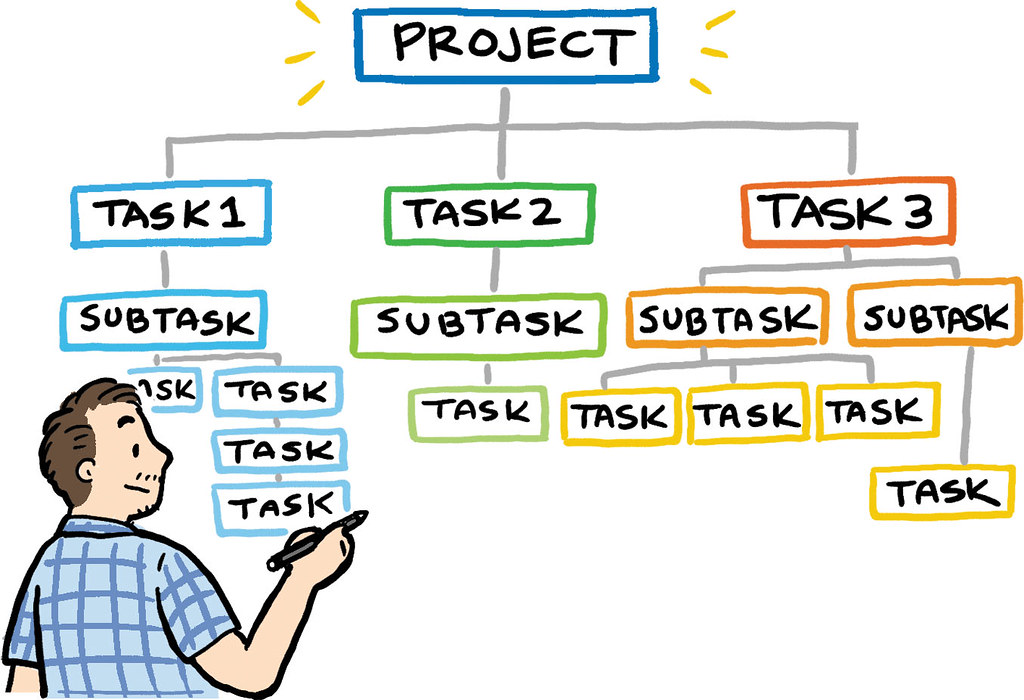
This makes it easier for managers to allocate responsibilities and track progress while helping team members better grasp the overall process.
- Prioritize tasks
Prioritize tasks based on 3 factors: 1) urgency, 2) importance, and 3) complexity. Here’s how:
- Identify time-sensitive tasks.
- Address tasks contribute to your long-term goals and should not be neglected.
- Categorize tasks based on difficulty levels, and time and resources required.
- Create a priority list of tasks based on the combination of all three criteria.
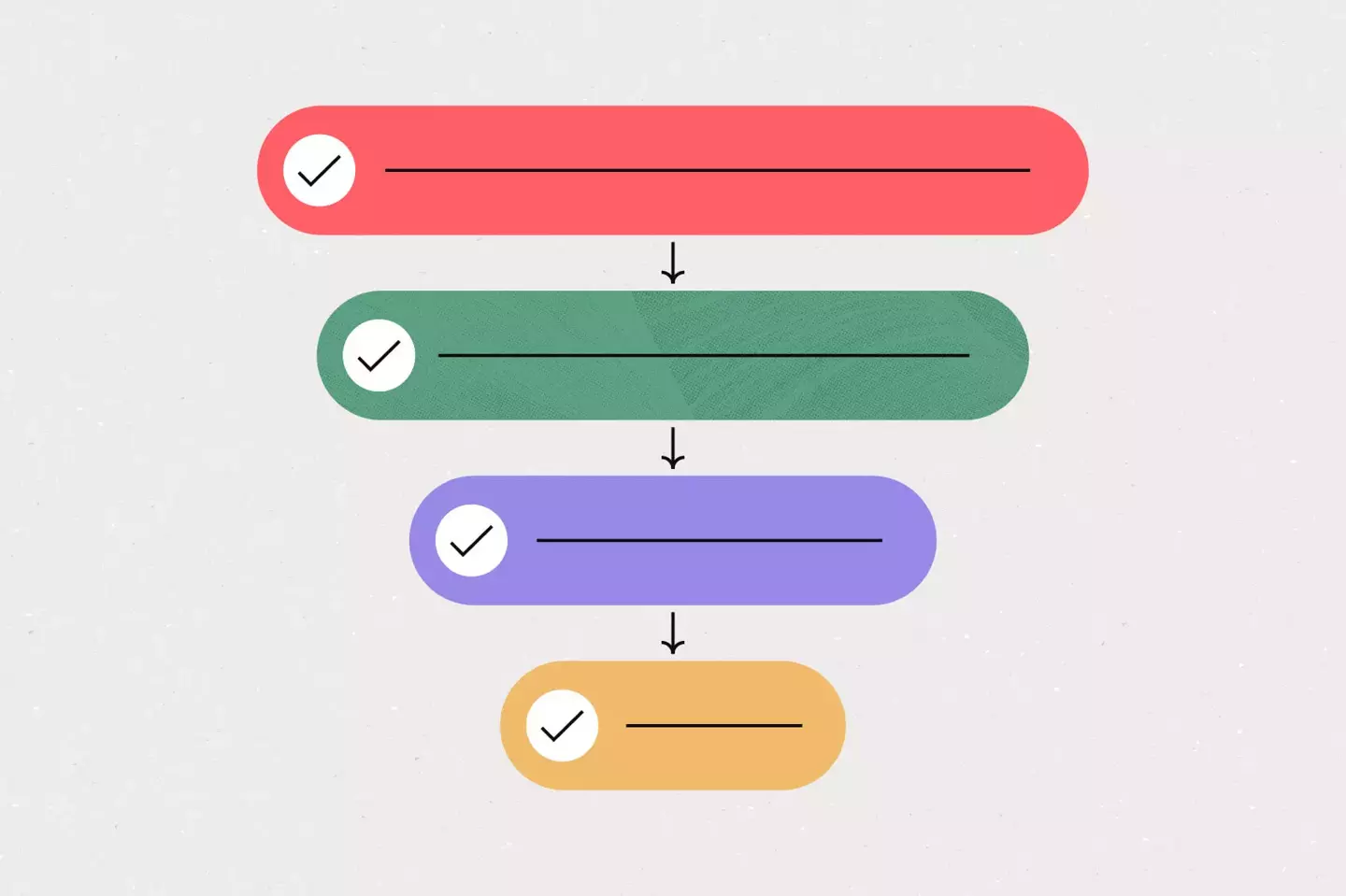
This valuable step helps managers make informed decisions on which tasks to tackle first and find the right people to work on each task.
Stage 2: While assigning employee tasks
- Match the right person to the right task
Assign tasks to the most qualified people.
Start by allocating high-priority tasks to the first available person with the matching expertise. Schedule low-priority tasks.
Straightforward tasks can be assigned to less experienced members, while complex tasks may be given to those with advanced skills.
- Be mindful of your team’s availability.
- Set realistic deadlines. Ensure to give members sufficient time to complete their assigned task.
- If someone shows interest in a particular task, consider assigning it to them.
If you know your employees well enough, then make a list of dependable people who are ready to take on a little more duties.
Give them low-priority yet important tasks with authority.
- Communication

To avoid disputes, constant clarification, or errors, it’s important to help your team members understand:
- Project’s goals, desired outcomes, and deadlines.
- Tasks’ requirements and priorities, plus how they contribute to the overall project’s success.
- Who is responsible for which task and what is expected of them.
Tips: Use clear and concise language when communicating. Encourage employees to ask questions and seek clarification on the project and their assigned tasks.
Stage 3: After assigning tasks
- Monitor Progress & Offer Help
Check-in with team members regularly to see how they are doing and if they need any help.
Encourage them to open up and transparently communicate their concerns and challenges.
On your side as a team leader or project manager, be available to offer assistance if they encounter challenges.
This helps resolve issues and improve the task assignment process.
- Provide Necessary Resources
Ensure that team members have the necessary resources, tools, and information for their task completion.
Stage 4: After the task/project is completed
- Reflect on Past Assignments
After each project or task, take time to reflect on what worked well, what didn’t, and where certain tasks weren’t up to par.
Address any issues and offer feedback on completed tasks. Use this feedback to refine your approach in future assignments.
Recognize and reward everyone’s efforts and contributions. This helps keep employees excited and motivated.
- Continuous Learning and Improvement
Invest in training and development opportunities for your team to enhance new skills and knowledge.
Extra tips for assigning tasks effectively:
- Use project management software to help you manage workload, make time estimates, performance reviews, etc.
- Be flexible. Things don’t always go according to plan, so be prepared to adjust your assignments as needed.
- Don’t be afraid to experiment. Try different approaches to see what works best for your team.
III. How to assign tasks in Upbase?
In this section, I’ll show you how a project management tool like Upbase helps simplify task assignments, improve morale, and increase outcomes.
Quick info:
- Upbase organizes and manages projects by lists.
- Members of a list can’t see and access other ones except those lists’ owners allow them to.
- Upbase offers unlimited free users, tasks, lists, and storage .
Sign up for a free Upbase account here , follow this guide, and take your task assignment process to the next level.
1. Break down projects into smaller tasks
Create a new list:
- Hover over “Lists” on the left sidebar to open the dropdown menu.
- Select “List”
- Edit the list’s icon, color, name, and description. Then, add your employees.
Add new tasks to the list:
- Navigate to the Tasks module.
- Create and edit sections.
- Add tasks to sections by clicking “+” or “Add task”.
Add new tasks via emails : Open the dropdown menu next to the list name, select “add tasks via emails”, and follow the instructions.
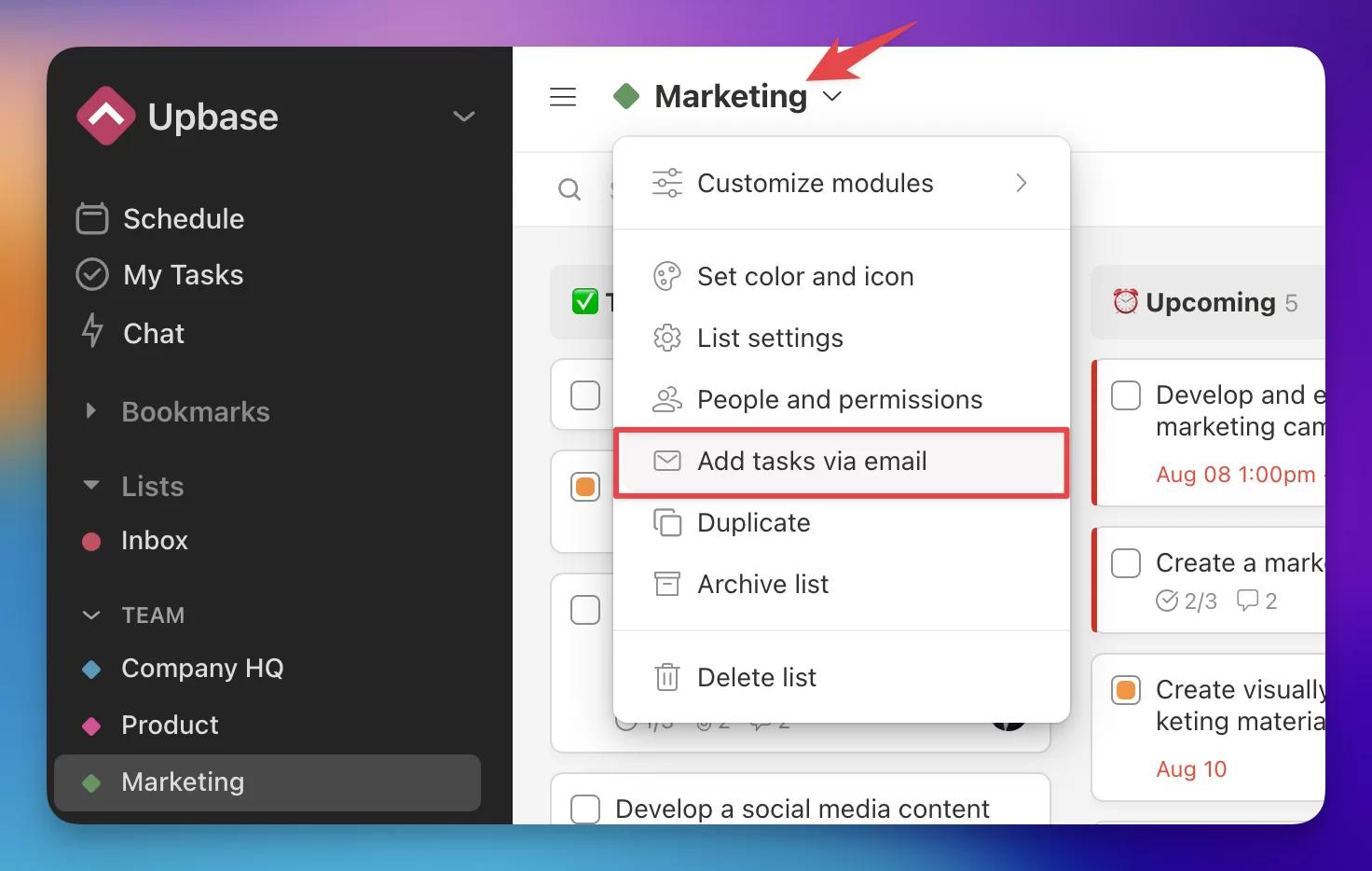
Add task details:
You can add specific instructions, priorities, deadlines, and other attributes to individual tasks and subtasks.
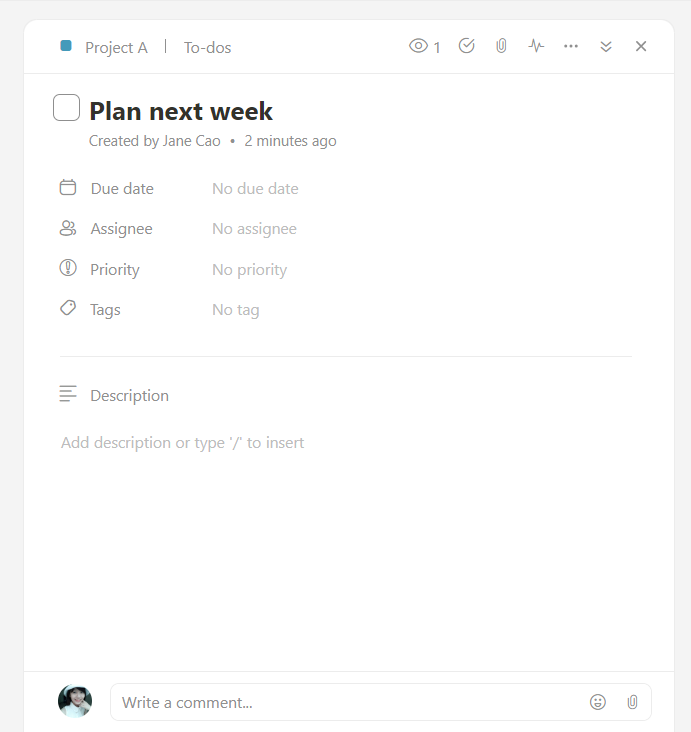
Keyboard shortcuts : Hover over a task card and press:
- “S” to set high priority
- “D” to open the Due date picker
- “C” to open the Tag picker
Upbase Tip : Use task tags to categorize tasks by urgency, importance, and complexity. This makes it easier to match the right tasks to people for later.
2. Assign tasks
Check your employee availability:
Go to the Members page, and click on the team member you’d to assess their workload.
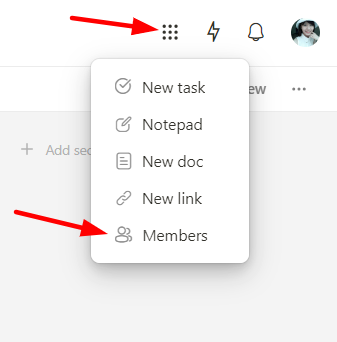
You’ll be driven to a separate page that shows that member’s assigned tasks, along with their due dates, priorities, etc. You can also filter tasks by one of these attributes.
Use this page to check each employee’s availability and identify who can complete additional tasks.
Assign tasks:
Open the desired task, click “Assignee”, and choose the right team member(s).

Keyboard shortcuts : Hover over the task and press “A” to open the Assignee picker. Press the space bar to assign yourself. This way makes assigning tasks easier and quicker!
If you want multiple people to work on a particular task, consider dividing it into subtasks, give time estimates for each, and then assign them to the right team member(s).
Communicate tasks:
Use the Messages and Chat modules to communicate with your team.
Messages is best suited to show the big picture, like project goals, desired outcomes, everyone’s duties, and how their work contributes to the whole.

Make use of the comment box to encourage everyone to ask questions and seek clarification about the project or their assigned tasks.
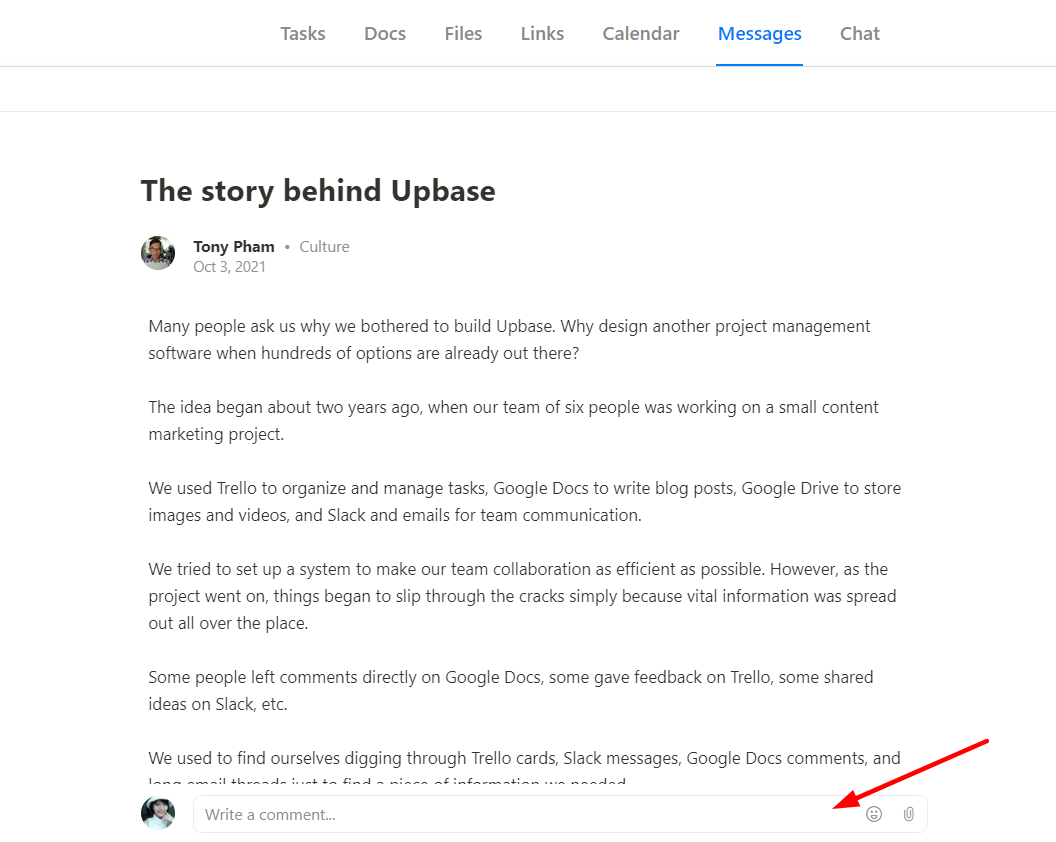
Chat supports both 1:1 chats and group chats. It’s perfect for quick discussions about issues, task deadlines, etc.
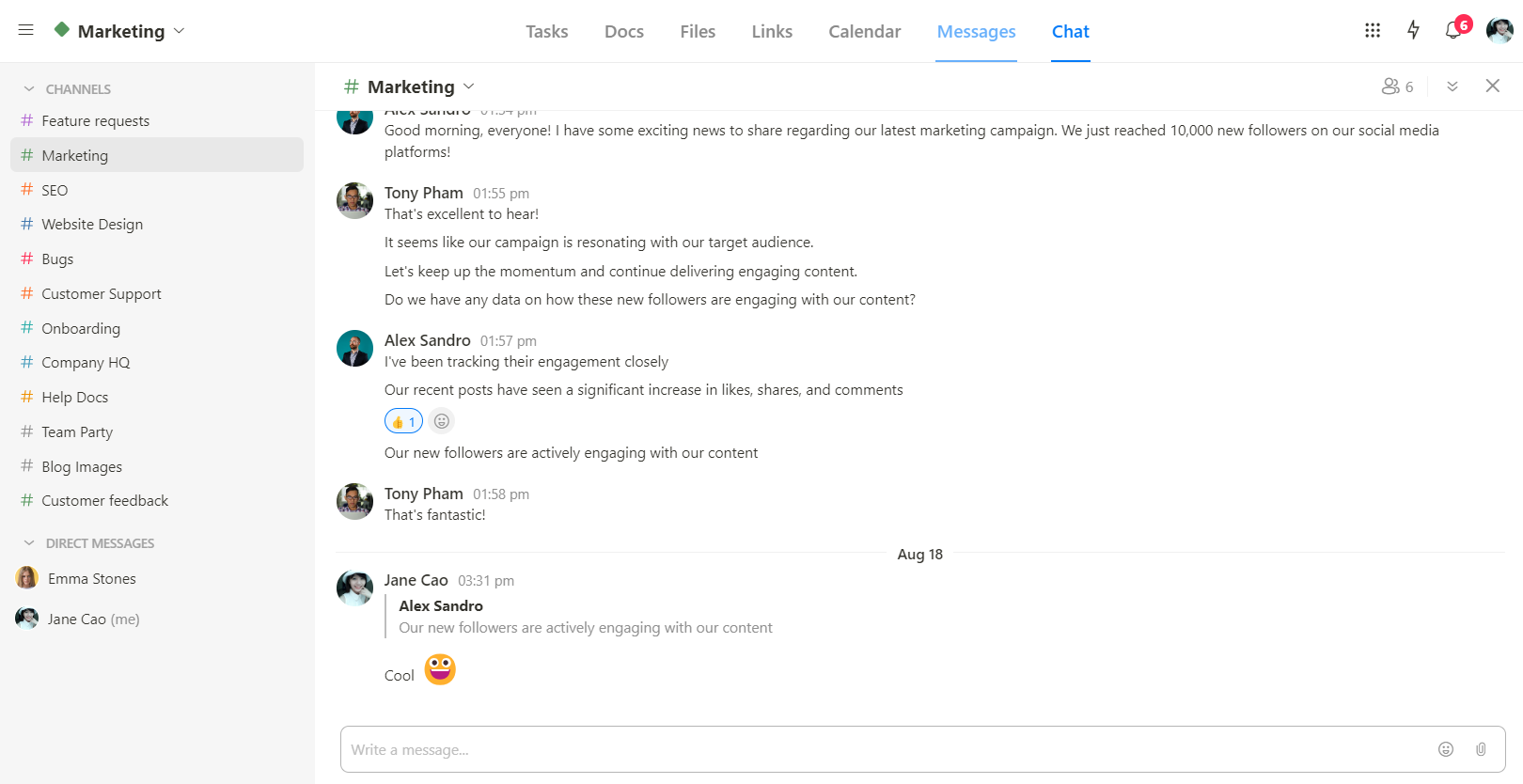
3. Track progress
Upbase offers an array of tools for project managers to track the workload of other employees.
To track a project’s progress:
From the Tasks module :
Here, you can view tasks in a List or Board format.
The List format provides an overview of tasks, deadlines, priorities, and employees working on them, while the Board visualizes the project’s progress.
Besides, you can group tasks by due date, priority, assignee, or section. View tasks filtered by one or multiple tags. Or create a custom filter.
From the Calendar module:
It shows all the scheduled tasks within a project by week or month. It also allows you to create a new task or reschedule overdue tasks.
To track the progress of all projects in a workspace :
Filters : In addition to filtering tasks within a project, you can create custom filters across multiple or all projects in a workspace.
Schedule : It functions similarly to the Calendar module. The two main differences are:
1) Schedule is to track the progress of tasks from all projects while Calendar is to track the progress of tasks within a project.
2) Schedule offers an additional view, named Daily Planner.
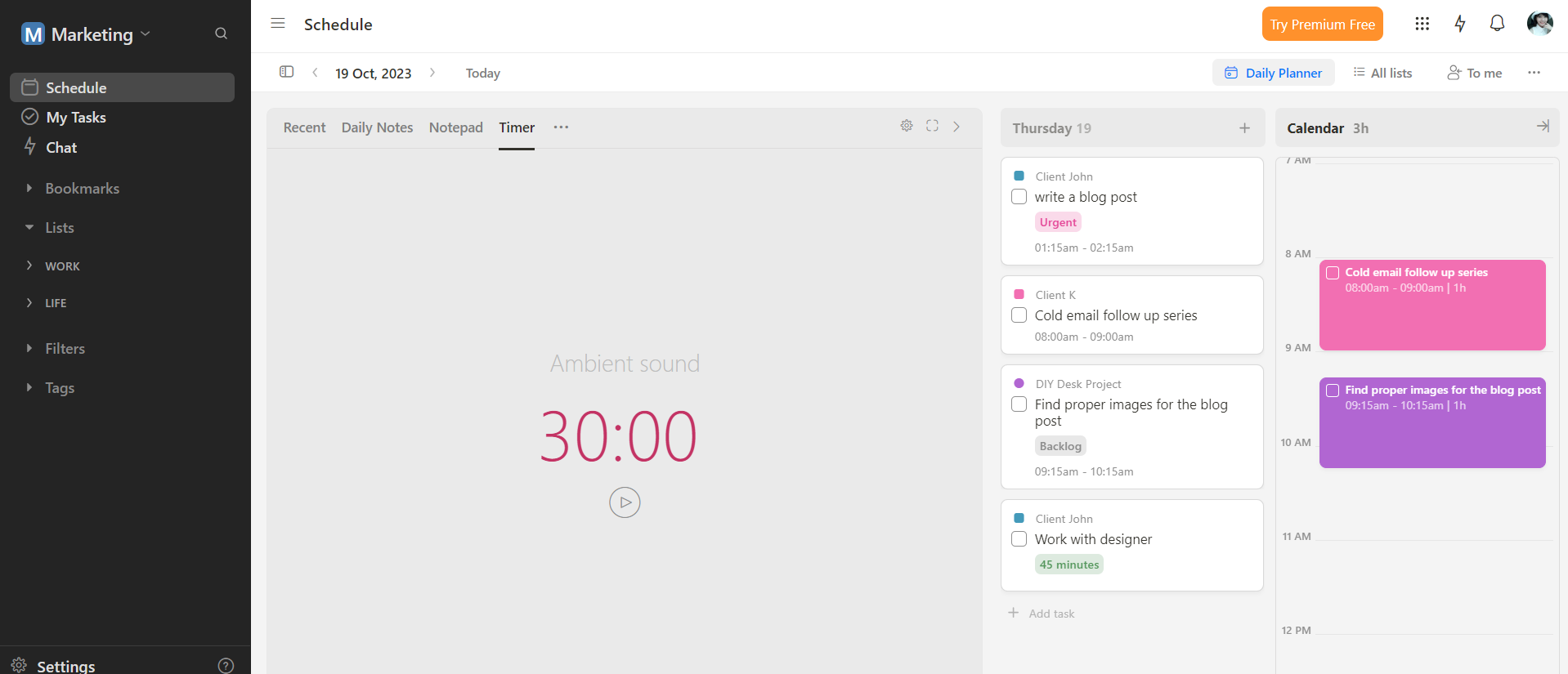
Other tools for progress tracking:
My Tasks : A private place where you can get an overview of all the tasks you create or tasks assigned to you.
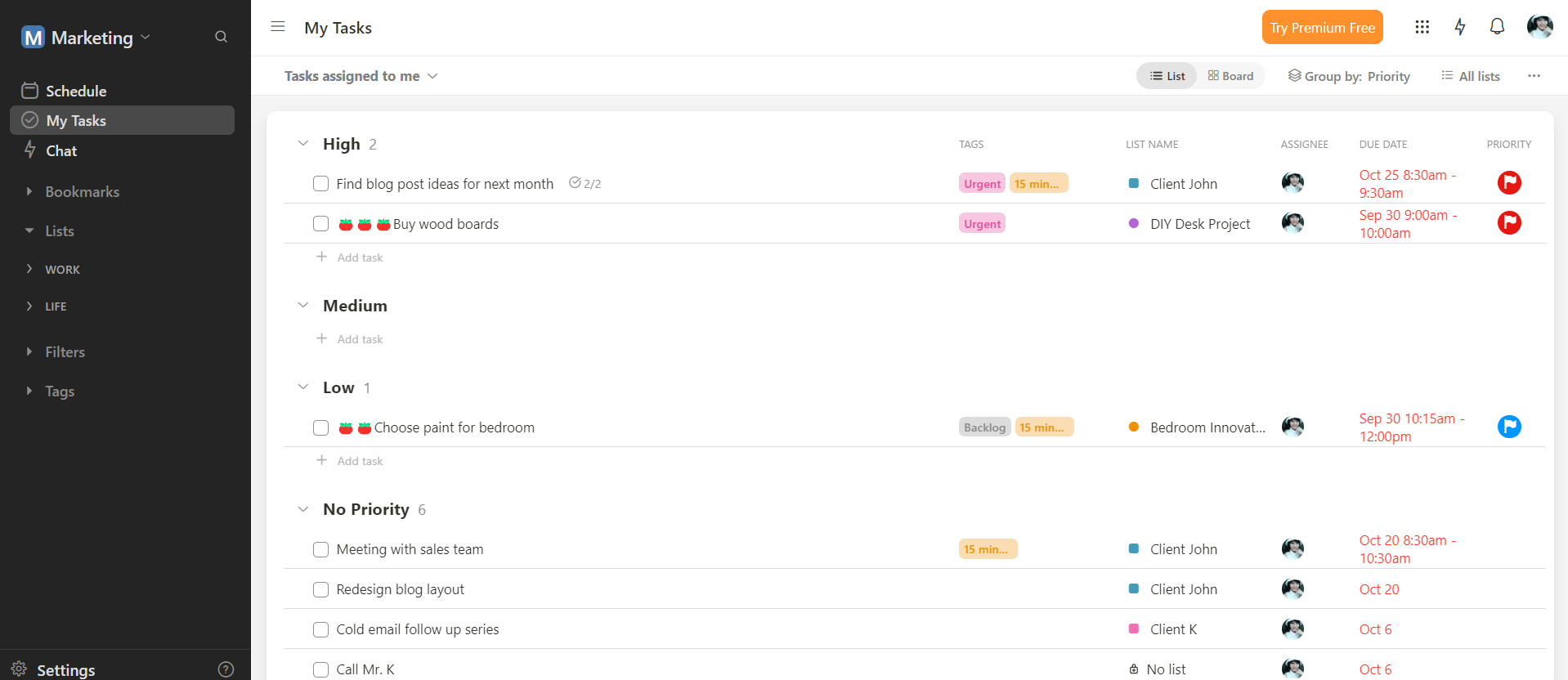
4. Encourage collaboration and provide support
Use Upbase’s Docs, Files, and Links to provide employees with resources, information, and tools they need to complete tasks.
These modules are available in each list, making it easy to manage project data separately. Plus, they all provide collaboration features like watchers and comment boxes.
- Docs : You can create native documents, share a doc’s public link, embed Google Docs, and organize documents by folders.
- Files : It allows you to upload/download files, manage file versions, embed Google Drive folders, and show files by Grid or Board view.
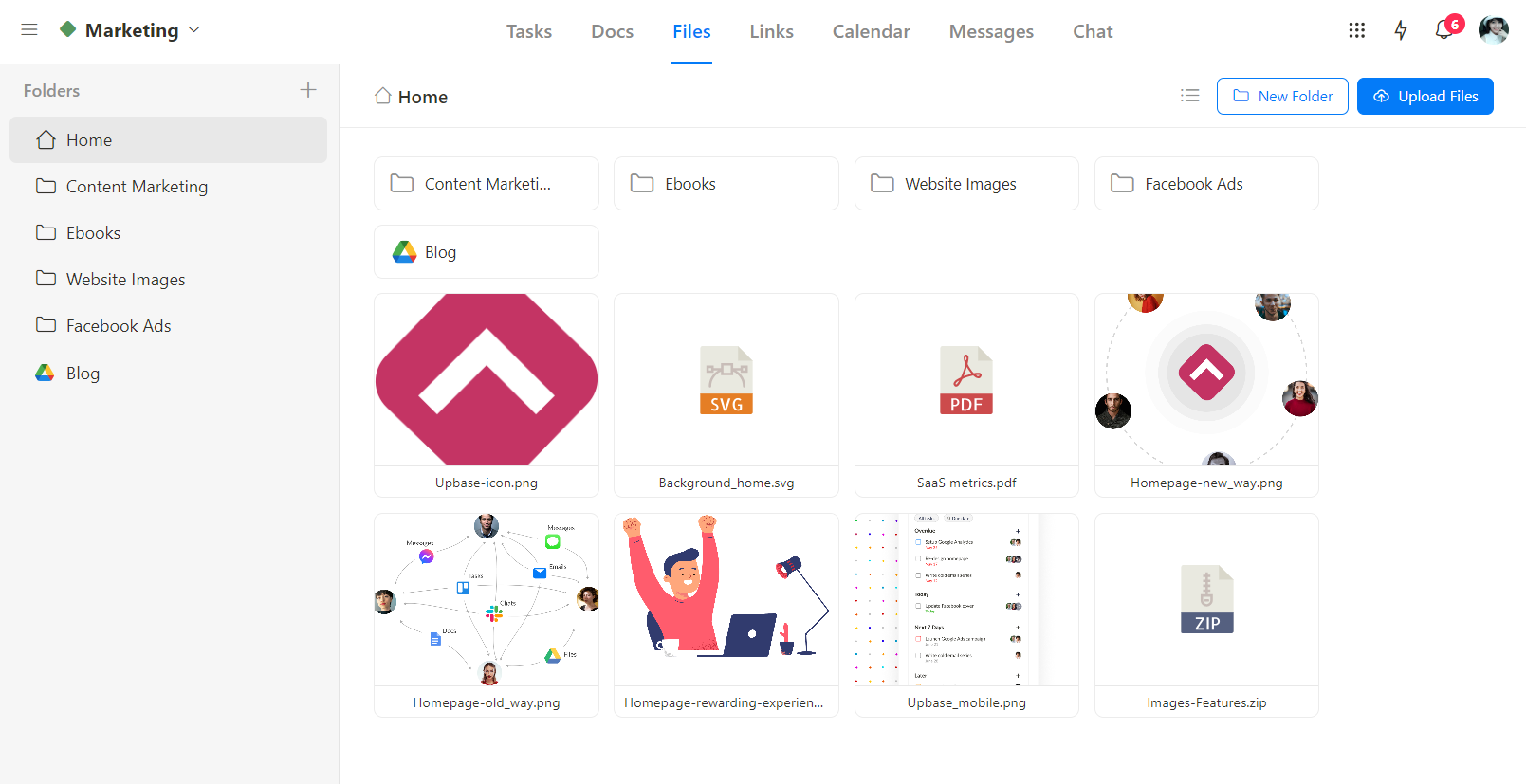
- Links : You can save URLs as cards, and then add descriptions, watchers, and comments.
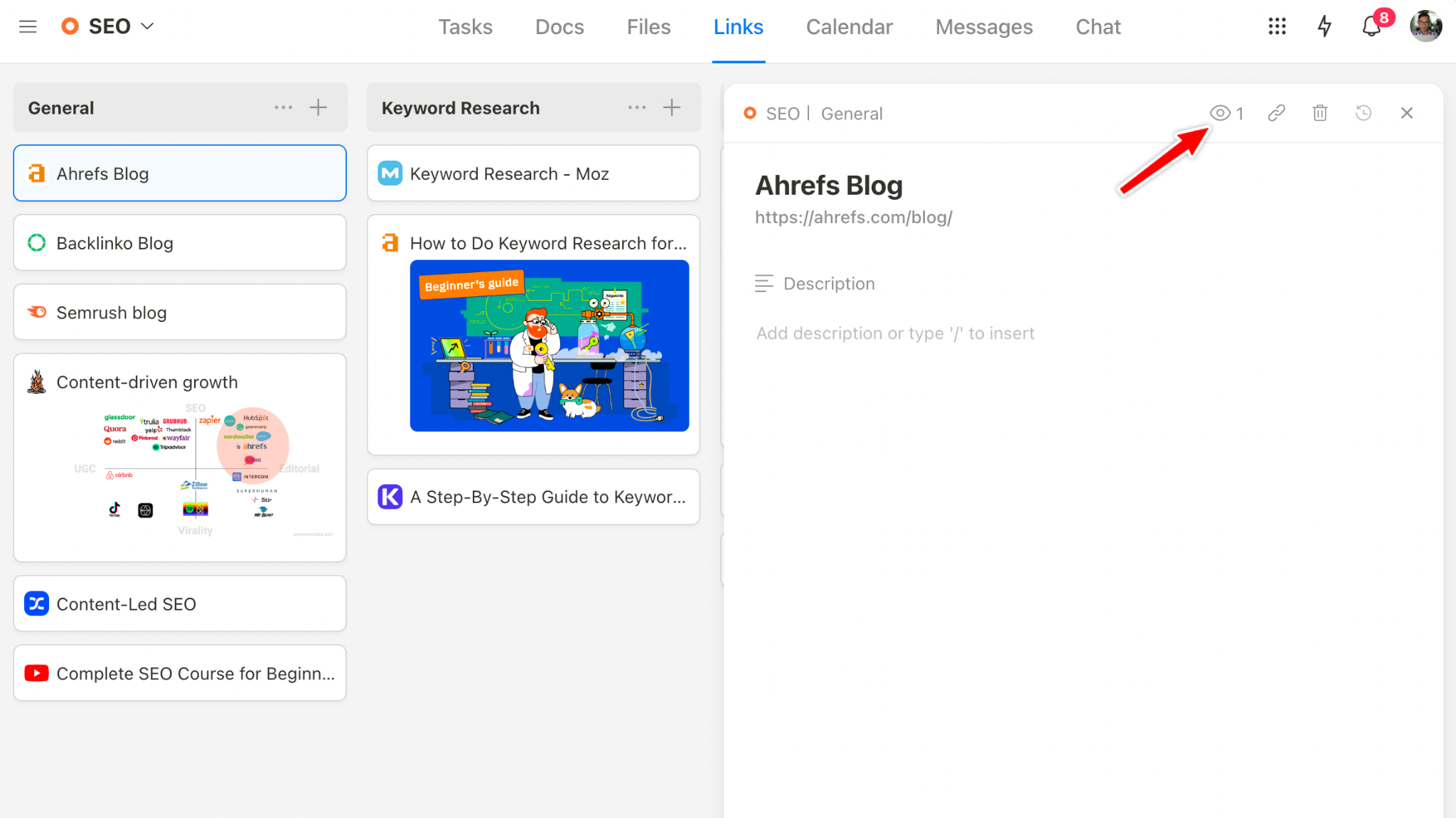
5. Providing feedback
On the Tasks module, you can create a section, named “Review”.
When a task is completed, the assignee will drag and drop it here. Then, you, as a project manager will leave feedback on it via the comment box.
So, why wait? Sign up for a free Upbase account now and experience it yourself.
IV. Common mistakes to avoid
For successful task assignment, remember to avoid these common mistakes:
1. Fear of Assigning Tasks
Some people, particularly new or inexperienced managers, may hesitate to allocate tasks to others due to concerns about:
- The quality of the work
- Fear of losing control
- Lack of trust in team members
This fear can hinder productivity and personal growth within a team or organization.
2. Lack of Clarity
This means that the instructions and details regarding a task are not transparent.
Team members may not have a clear understanding of what they are supposed to do, what the goals are, or what the expected outcomes should be.
This lack of clarity can lead to confusion and misunderstandings.
3. Poor Communication

Poor communication can contribute to misunderstandings and problems in task assignments, too.
However, it addresses different aspects of the overall process.
Poor communication means that there might be a lack of information sharing or ineffective communication methods. This could include:
- Not providing updates
- Failing to ask questions when something is unclear
- Not actively listening to others.
Even with clear instructions, if there’s poor communication, the information may not be conveyed effectively.
2. Overloading
Assigning too many tasks to a single person or team can overwhelm them and negatively impact the quality of their work. It’s crucial to distribute tasks evenly and consider each individual’s capacity.
3. Ignoring Skills and Strengths
Neglecting to match tasks with team members’ skills and strengths can result in subpar performance. Assign tasks based on individuals’ expertise and abilities to optimize results.
5. Micromanagement

Hovering over team members and scrutinizing every detail of their work can stifle creativity and motivation.
Trust your team to complete their tasks and provide support when needed.
6. Inflexibility
Being rigid in task assignments can prevent adaptation to changing circumstances or new information. It’s essential to remain open to adjustments and feedback.
8. Unrealistic Deadlines
Setting unattainable deadlines can put unnecessary pressure on your team and lead to a rushed and subpar outcome. Ensure that timelines are realistic and allow for unexpected delays.
10. Lack of Feedback
Forgetting to provide constructive feedback or failing to seek input from team members can hinder growth and improvement. Regularly discuss progress and provide guidance when necessary.
In summary:
Successful task assignment relies on clear communication, matching tasks to skills, flexibility, and a supportive, accountable, and feedback-driven environment.
Avoiding these common mistakes will help ensure that tasks are completed efficiently and effectively.
1. What’s the difference between assigning and delegating tasks?
Task delegation means you give someone the authority to make decisions and complete tasks independently without constant supervision.
Task allocation, on the other hand, means you assign specific duties to someone, often with clear instructions, while retaining overall control.
A delegated task gives the team member more freedom to make decisions and determine how to produce the desired results. An assigned task is more limited because it’s based on instructions and under supervision.
In short, delegating tasks typically involves a higher degree of trust and empowerment than allocating tasks.
2. What’s the difference between tasks and subtasks?
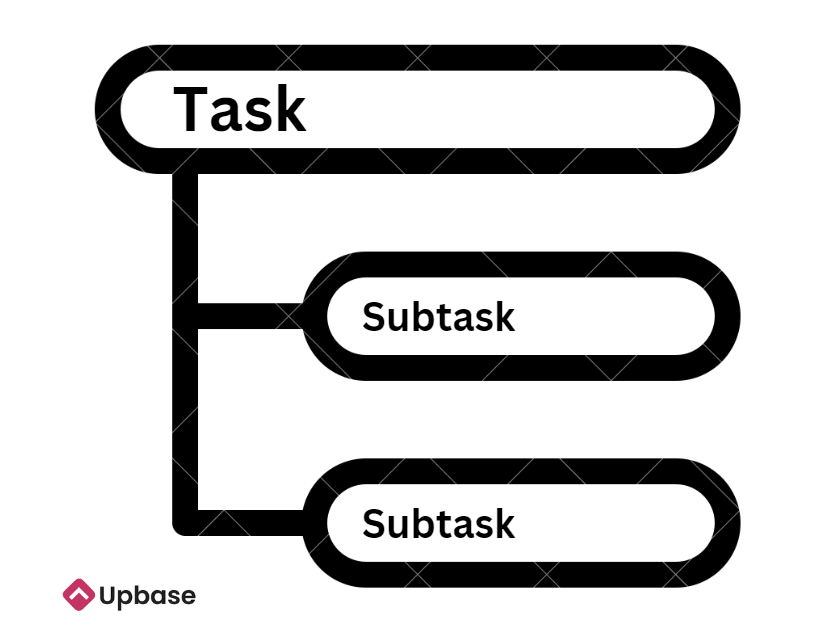
Tasks are generally larger, more significant activities that need to be completed, while subtasks are smaller, specific components or steps that contribute to the completion of a task.
Subtasks are often part of a broader task and help break it down into manageable pieces.
3. Who is the person assigned to a task?
The person assigned to a task is called an “assignee”. They’re responsible for completing that specific job or duty.
4. Who should you delegate a task to?
Delegate a task to the person best suited for it based on their skills, expertise, and availability.
Choose someone who can complete the task effectively and efficiently, taking into account their experience and workload.
5. What is the best way to assign tasks to team members?
The best way to assign tasks to others is by considering each member’s strengths, skills, and workload capacity, and aligning tasks with their expertise and availability.
6. Why is it important to assign tasks to your team members?
Assigning tasks to team members is crucial because it ensures clarity, accountability, and efficiency in achieving goals.
It helps prevent duplication of efforts, enables better time management, and allows team members to focus on their strengths, ultimately leading to successful project completion.
7. How do you politely assign a task?
To politely assign a task, you can follow these steps:
- Start with a friendly greeting.
- Clearly state the task and its importance.
- Ask if the person is available and willing to take on the task.
- Offer any necessary information or resources.
- Express appreciation for their help.
8. How do short-term goals differ from long-term goals?
Short-term goals are specific, achievable objectives that you aim to accomplish soon, typically within days, weeks, or months.
Long-term goals are broader, more substantial objectives that you work towards over an extended period, often spanning years.
Short-term goals are like stepping stones to reach long-term goals.
One place for all your work
Tasks, messages, docs, files, chats – all in one place.
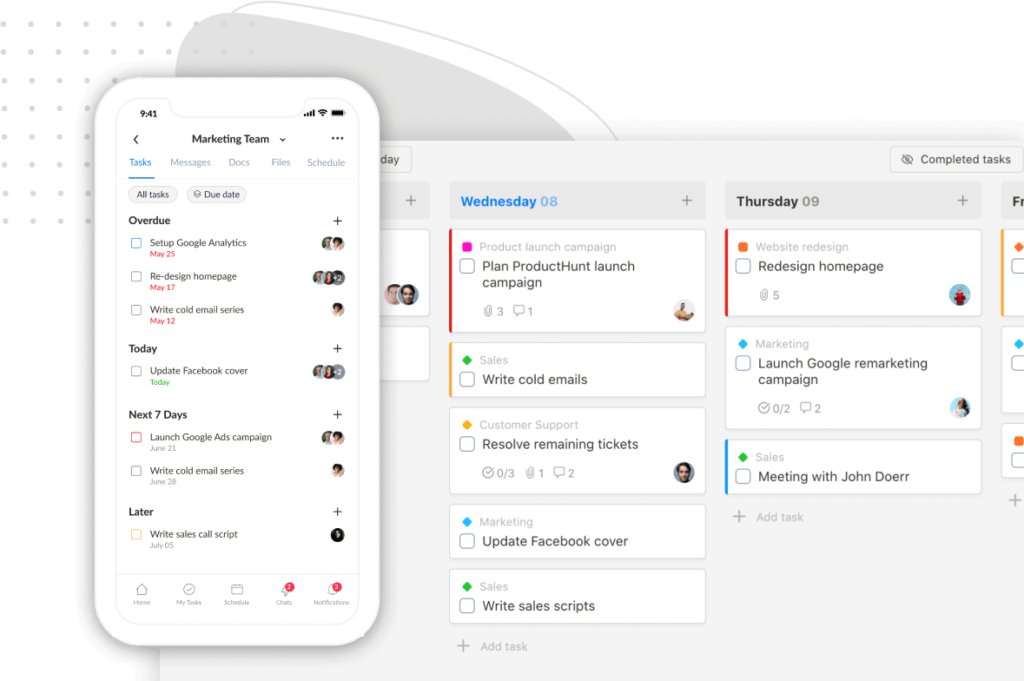
- Help center
- Terms of service
- Privacy policy
- iOS mobile app
- Android mobile app
Stack Exchange Network
Stack Exchange network consists of 183 Q&A communities including Stack Overflow , the largest, most trusted online community for developers to learn, share their knowledge, and build their careers.
Q&A for work
Connect and share knowledge within a single location that is structured and easy to search.
What is the difference between "task" and "assignment"? [duplicate]
Possible Duplicate: Task, project, assignment, job. Which one is correct in my case?
These words don't have exact matches in Portuguese, so sometimes I get confused about their usage. When is it more suitable to use task rather than assigment and vice versa?
- differences
Task is a piece of work to be done or undertaken.
Assignment is a task assigned as part of a job or course of study.
In short, assignment = task given to you.
Not the answer you're looking for? Browse other questions tagged differences nouns or ask your own question .
- Featured on Meta
- Preventing unauthorized automated access to the network
- User activation: Learnings and opportunities
- Join Stack Overflow’s CEO and me for the first Stack IRL Community Event in...
Hot Network Questions
- How can "chemical-free" surface cleaners work?
- Fear of getting injured in Judo
- Linux, How to stop or fix vlc messages in bash?
- SF story set in an isolated (intergalactic) star system
- Can there be a proper class of Dedekind-finite cardinals?
- How to react to a rejection based on a single one-line negative review?
- corresponding author not as the last author in physics or engineering
- My one-liner 'delete old files' command finds the right files but will not delete them
- Consequences of registering a PhD at german university?
- What happens when I declare multiple register variables in C on older compilers?
- Cheapest / Most efficient way for a human Wizard to not age?
- Baskervald Package Produces Slightly Different Italicized Textgreek
- A novella (?) about "experts" in the theory of time-travel and their "socratic" mentor
- Is an entirely sailing-ship based civilization feasible?
- Returning to the US for 2 weeks after a short stay around 6 months prior with an ESTA but a poor entry interview - worried about visiting again
- "First et al.", many authors with same surname, and IEEE citations
- Play the Final Fantasy Prelude
- Box tensor product in the correspondence category
- Does Tempestuous Magic allow you to avoid attacks of opportunity *after* they have already triggered?
- How to do smooth merging of two points using tikzpicture
- Is "Canada's nation's capital" a mistake?
- Calculate transition probabilities
- Why does constexpr prevent auto type deduction in this statement?
- How to interpret odds ratio for variables that range from 0 to 1
All Subjects
study guides for every class
That actually explain what's on your next test, task assignment, from class:, communication for leaders.
Task assignment refers to the process of designating specific responsibilities or duties to individuals or teams, ensuring that work is distributed effectively and efficiently. This practice is essential in communication strategies, as it clarifies roles and expectations, fosters accountability, and enhances collaboration among team members. Proper task assignment can significantly impact productivity and the overall success of a project.
congrats on reading the definition of task assignment . now let's actually learn it.
5 Must Know Facts For Your Next Test
- Effective task assignment helps prevent misunderstandings by clearly outlining who is responsible for what within a team.
- Utilizing tools like project management software can streamline the task assignment process, making it easier to track progress and deadlines.
- Task assignments should consider individual strengths and weaknesses to optimize team performance and efficiency.
- Regular check-ins on assigned tasks can promote accountability and allow for adjustments if needed, keeping projects on track.
- Clear communication during the task assignment process helps ensure that all team members understand their roles and the overall project goals.
Review Questions
- Effective task assignment enhances team collaboration by clarifying individual roles and responsibilities, which reduces confusion about who is doing what. When team members know their specific tasks, they can coordinate efforts more easily, share relevant information, and provide support where needed. This clarity fosters a more cohesive team environment, ultimately leading to better collaboration and successful project outcomes.
- Technology can greatly facilitate task assignment by providing tools such as project management software that allows teams to assign tasks, set deadlines, and monitor progress in real-time. These tools often include features like notifications and reminders, which help keep everyone accountable and informed. Additionally, digital platforms can enhance communication among team members, making it easier to discuss assignments and provide feedback as needed.
- Clear task assignments have a profound impact on project success as they establish defined roles that enhance accountability and ownership among team members. When individuals understand their responsibilities and how they contribute to the larger goal, it minimizes overlap and inefficiencies in work processes. Furthermore, this clarity fosters positive team dynamics by building trust and encouraging open communication, as members feel more empowered to collaborate effectively toward shared objectives.
Related terms
Delegation : The act of entrusting responsibility for specific tasks or decisions to another person or group, often to empower them and improve efficiency.
Accountability : The obligation of individuals or teams to take responsibility for their actions and outcomes, often linked to how tasks are assigned.
Collaboration : The process of working together with others to achieve a common goal, which can be enhanced through clear task assignments and communication.
" Task assignment " also found in:
Subjects ( 4 ).
- Advanced Cinematography
- Agile Project Management
- Business Process Automation
- Computer Aided Drafting and Design
© 2024 Fiveable Inc. All rights reserved.
Ap® and sat® are trademarks registered by the college board, which is not affiliated with, and does not endorse this website..

12 Best Practices for Successful Task Assignment and Tracking
.jpg)
Build with Retainr
Sell your products and services, manage clients, orders, payments, automate your client onboarding and management with your own branded web application.
1. What are the top 12 practices for successful task assignment and tracking?
Key practices for effective task assignment.
The assignment of tasks should always be done strategically to ensure successful completion. Here are six key practices for successful task assignment:
- Clear and concise instructions: Always provide clear steps on how to accomplish the task. Vague instructions may lead to misunderstandings and poor results.
- Assign tasks based on skills and experience: Certain tasks require special skills. Assign tasks to those who have the skills and experience needed to perform them efficiently.
- Establish realistic deadlines: Set achievable deadlines to prevent unnecessary pressure and poor quality of work.
- Communicate the task's importance: Explain why the task is necessary and how it contributes to the overall project.
- Availability check: Make sure that the person assigned to the task has the capacity to do it.
- Empower them: Give them the freedom to do the work in their own way, as long as they meet the project’s quality standards.
Efficient Task Tracking Methods
Task tracking not only ensures timely completion but also guarantees that the quality of work is not compromised. Here are six efficient task tracking methods:
- Use of tracking tools: Implementing task tracking tools like Trello or Asana can automate the tracking process.
- Regular follow-ups: Frequent check-ins allow early detection of issues and timely resolution.
- Setting Milestones: Break down the tasks into manageable chunks or stages with set deadlines.
- Encourage self-reporting: Ask team members to provide status updates on assigned tasks. This makes tracking easier and instills a sense of responsibility.
- Document progress: Keep a record of task progression to easily identify bottlenecks and delays.
- Feedback session: Constructive feedback sessions aimed at learning can be helpful for future tasks.
Comparison Table for Task Assignment and Task Tracking
| Task Assignment | Task Tracking |
|---|---|
| Assign tasks based on skills and experience | Use of tracking tools like Trello or Asana |
| Establish realistic deadlines | Regular follow-ups to detect issues early |
| Give clear and concise instructions | Encourage self-reporting for easier tracking |
2. How can I effectively use these best practices in my daily work management?
Utilizing best practices in daily work management.
Deploying the best practices in your daily work management is all about integration and consistency. Whether you are leading a small team or managing a large project, the successful task assignment and tracking methods will boost productivity and keep everyone on the same page. Here's how you can effectively use these practices:
- Clear Communication: Always communicate task details clearly. Specify the project description, important deadlines, and the expected deliverables. Make use of tools like Slack or Microsoft Teams for smooth communication.
- Team Collaboration: Encourage teamwork, brainstorming sessions and ensure everyone contributes their ideas. Collaborative tools like Google Workspace or Monday.com can assist in shared work.
- Prioritization & Scheduling: Prioritize tasks based on their urgency and importance. Use scheduling tools, like Asana or Trello, to arrange tasks for all team members, ensuring they are aware of their responsibilities.
Implementing Task Assignment Practices
Assigning tasks effectively involves understanding each team member's strengths and weaknesses. The following steps are recommended:
| Step | Action |
|---|---|
| 1 | Determine the task's requirements and who in your team can best complete them. |
| 2 | Clearly communicate the task details, deadlines, and expected outcomes to the assignee. |
| 3 | Offer the necessary support and check-in regularly to track progress. |
Successful Task Tracking
Tracking tasks helps in maintaining the project's accuracy ensuring that everything is running smoothly. Adopting effective tracking practices can lead to a drop in missed deadlines, an increase in productivity, and a more efficient workflow. Here are some tracking methods:
- Use a Project Management System that offers real-time tracking.
- Conduct regular progress meetings.
- Encourage team members to provide progress reports.
3. Can these best practices for task assignment and tracking be applied to any industry?
Applicability of best practices across industries.
The best practices for task assignment and tracking are versatile, adaptable and can be beneficial to most, if not all industries. This includes but is not limited to the IT, healthcare, construction, education, and manufacturing industries. The principles of clarity, efficiency, and productivity that underscore these best practices are universal needs across business operations.
List of Industries
- Information Technology
- Construction
- Manufacturing
Each of these industries can make use of the best practices in their own unique way. For instance, in the IT industry, these best practices can be utilized to assign and track different coding or debugging tasks. In healthcare, these practices can be used to efficiently assign patient care tasks to different members of a healthcare team. In education, teachers can assign tasks to students and track their progress more effectively. In short, these practices foster a culture of accountability and efficiency.
Tabular Representation of Application in Different Industries
| Industry | Application |
|---|---|
| Information Technology | Assigning and tracking coding or debugging tasks |
| Healthcare | Efficiently assigning patient care tasks to different members |
| Education | Assigning tasks to students and tracking their progress |
| Manufacturing | Tracking production process and quality control tasks |
In conclusion, these best practices provide a standard system that is convenient, effective and that can be customized to any industry’s specifics. The consistent theme across all industries is to enhance productivity and optimize resources.
4. What is the first step one should take to apply these practices effectively?
Understanding the task.
The first step towards effectively applying the practices for successful task assignment and tracking is gaining a thorough understanding of the task at hand. To successfully delegate assignments and oversee their completion, you must grasp the task's specifics, objectives, and requirements. The following goals can guide you:
- Determine the nature and scope of the task: Exactly what does this task entail? What are its dimensions and boundaries?
- Identify the expected outcome: What should the ideal result look like once the task is completed?
- Analyze potential problems: What kind of issues may arise during the execution of the task? How can they be addressed proactively?
Establishing Clear Objective and Goals
Once you've comprehended the task, the next step involves establishing clear objectives and goals. These goals should ideally be SMART (Specific, Measurable, Achievable, Relevant, Time-bound). A well-defined goal gives a clear direction to the entire task assignment process. Consider the following points when mapping out your goals:
| Goal Type | Description |
|---|---|
| Specific | Goals should clearly state what is to be achieved. |
| Measurable | Goals should have quantifiable outcomes that can be tracked. |
| Achievable | Goals should be within the team's capacity and resources. |
| Relevant | Goals should align with the overall objectives of the organization or team. |
| Time-bound | Goals should have a set deadline for achievement. |
Identifying the Right People for the Task
Once each task has been clearly defined and its goals set, the next step is to assign the right people to the task. This requires analyzing your team's strengths, weaknesses, preferences, and workload. Here are some factors to consider:
- Skills and capabilities: Does the person possess the necessary skills and abilities to perform the task effectively?
- Workload: Does the person have the necessary time and bandwidth to take on the task?
- Preference: Does the person show an interest in the task? Are they excited about the work they're assigned?
5. Are there specific tools that help facilitate these best practices for task assignment and tracking?
Top tools for task assignment and tracking.
There are numerous tools designed specifically to facilitate task assignment and tracking. They range from simple to-do list apps to complex project management systems. Here are a few popular options:
- Asana: This tool is designed for both individuals and teams. It allows for task assignment, due dates, priorities, comments, file attachments, and progress tracking.
- JIRA: Popular among software development teams, JIRA provides a detailed view of ongoing tasks, project timelines, and allows for personalized workflows.
- Trello: Trello operates on a board-and-card system, allowing for easy visualization of tasks and assignments. It also supports collaboration and progress tracking.
- Basecamp: This is a project management tool that integrates discussions, tasks, files, and timelines in one place. It offers a clear view of who’s working on what.
Choosing the Right Tool for Your Needs
To choose the right tool for task assignment and tracking, you need to consider the size of your team, the complexity of the tasks, and the specific features you need. Equally important is the user-friendliness and cost of the tool. Here's a simple comparison:
| Tool | Best For | Key Features |
|---|---|---|
| Asana | Smaller teams, simple projects | Task assignment, due dates, priorities |
| JIRA | Software development, complex projects | Custom workflows, detailed task tracking |
| Trello | Any team size, visual task management | Board-and-card system, easy collaboration |
| Basecamp | Large teams, complex projects | Integrates discussions, tasks, files, and timelines |
Consistent Use of Tools
Regardless of which tool you choose, consistent use is essential. All team members should be trained on how to use the tool effectively. Regular updates and reviews are also crucial to keep everyone aligned and ensure smooth progression of tasks. Remember, a tool is only as good as how you use it.
6. How does clear communication help in successful task assignment and tracking?
Benefits of clear communication.
Successfully assigning and tracking tasks in any business or organization often hinge on clear and effective communication. With effective communication, team members can understand their responsibilities, tasks can be properly tracked, and project deadlines can be met. There are several benefits that clear communication provides:
- Boosts Team Morale: When everyone understands their role in a project, they feel valued, which increases motivation and productivity.
- Prevents Confusion: Clear instructions prevent misunderstandings, ensuring tasks are done correctly the first time.
- Increases Efficiency: When goals and objectives are clear, teams can work more efficiently, saving time and resources.
How to Communicate Clearly
Implementing the right communication strategies can be crucial for successful task assignment and tracking. Here are a few methods to foster better communication:
| Methods | Description |
|---|---|
| Utilize Tools | Make use of task management tools or platforms that facilitate clear communication. |
| Maintain Open Channels | Ensure everyone on the team feels comfortable raising questions or concerns and that they are heard. |
| Regularly Update | Keep everyone updated on task progress and changes in plans or deadlines. |
Elements of Clear Communication
To ensure your communication is clear and effective, consider the following elements:
- Clarity: Ensure the message is simple, direct and that technical jargon is minimized where possible.
- Conciseness: Too much information can confuse. State only necessary details.
- Feedback: Encourage feedback - it helps affirm the message was understood correctly.
7. Why is it important to define expected outcomes when assigning tasks?
Importance of defining expected outcomes.
Defining expected outcomes is a vital step in task assignment and tracking because it sets the direction and provides a clear vision of what needs to be achieved. It helps in setting the standards, improving performance, and ensuring better accountability. The following points will further elucidate its significance:
- Clarity and direction: defining the expected outcome provides clear instructions to the task performer about what exactly needs to be achieved. It gives them a sense of direction and purpose.
- Performance measurement: With a defined outcome, it becomes easier to measure performance. The actual results can easily be compared against the expected results, simplifying performance appraisal.
- Increased Accountability: If expected outcomes are well-defined, it can help increase accountability. Task performers are more likely to take ownership and responsibility of their work, ensuring that they deliver the expected results.
Best Practices When Defining Expected Outcomes
While defining expected outcomes is important, it is equally crucial to ensure they are well drafted. Following are some best practices to consider when defining the expected outcomes:
| Best Practices |
|---|
| Be Specific: The outcome should be clear and precise. Avoid using vague terms and phrases. |
| Realistic Expectations: Set outcomes that are achievable with the given resources and within the specified time. |
| Measurable: Make sure the outcomes can be measured. Use quantifiable terms where possible. |
Defining expected outcomes when assigning tasks is a fundamental step to ensure smooth progress and successful task completion. It not only provides a clear vision of what needs to be achieved but also facilitates performance measurement, leading to improved productivity and increased accountability. Employing the best practices while defining these outcomes can greatly enhance their effectiveness.
8. How can these best practices improve overall team productivity?
Enhancing team productivity through best practices.
Implementing best practices in task assignment and tracking can significantly improve overall team productivity. Effective task assignment ensures that the right tasks are allocated to the right people based on their skills, capabilities, and availability. This eliminates confusion, reduces the chances of mistakes, and improves efficiency. When tasks are tracked effectively, it's easier to identify bottlenecks, improve workload distribution, and ensure timely completion of tasks.
Key benefits include:
- Better task distribution: When tasks are assigned judiciously taking into consideration individual skills and capabilities, it ensures a better distribution of workload. This leads to improved efficiency and higher productivity.
- Proactive problem-solving: Effective task tracking allows for early detection of problems or issues that might arise during the execution of tasks. This allows for proactive problem-solving, ensuring the smooth continuation of work.
- Effective communication: These practices foster better communication within the team as tasks and responsibilities are clear. This reduces chances of misunderstanding or confusion, promoting a more harmonious and productive work environment.
Illustrating Productivity Improvement Through a Table
Here's a simple table illustrating the difference in overall team productivity before and after implementing these best practices:
| Before Implementing Best Practices | After Implementing Best Practices | |
|---|---|---|
| Task Completion Rate | 70% | 95% |
| Average Task Duration | 5 hours | 4 hours |
| Number of Issues Arising | 20 | 5 |
9. What are some challenges one might face when implementing these best practices and how can they be overcome?
Challenges faced in implementing best practices.
When initiating the best practices for successful task assignment and tracking, several challenges might pop up which could hinder the effective execution of the process. Firstly, resistance to change is a common obstacle that organizations face. Employees might resist the new strategies brought about by these best practices, partly due to their unfamiliarity or because they feel comfortable with the old systems. Secondly, lack of adequate resources such as software and tools for task assignment and tracking can also pose a significant challenge. Lastly, the lack of appropriate training to equip the workforce with the necessary skills can impede the implementation of these practices.
Overcoming the Challenges
The good news is, these challenges aren't insurmountable. Here are a few solutions:
- Resistance to Change: This can be overcome by fostering a culture of open communication where the benefits of the new practices are clearly articulated. Regular feedback forums where employees' concerns can be addressed can also help ease the transition.
- Lack of Resources: For businesses facing this issue, it could be worth investing in project management software or tools which have proven to enhance task assignment and tracking. There are many budget-friendly options available.
- Inadequate Training: Conduct regular training sessions and workshops. Such initiatives would enhance employees' skills, thus boosting their confidence in using new systems.
Considerations for Successful Implementation
| Considerations | Description |
|---|---|
| Proactive Management | Encourage managers to take a proactive role in guiding employees during the transition period. |
| Employee Involvement | Enable employees to participate in decision-making processes related to task assignment and tracking, as this can increase their overall interest and acceptance. |
| Continuous Improvement | Adopt a mindset of continuous improvement, where the organization constantly seeks to enhance the efficiency and effectiveness of its operations. |
10. Can these practices be adjusted for small teams or individuals, or are they only relevant for large organizations?
Adapting practices for different team sizes.
The beauty of best practices for task assignment and tracking is that they can be adapted to suit any team size, from large organizations to small teams and even individuals. Indeed, achieving productivity and efficiency is not merely the preserve of the big players. A small team or self-employed individual can efficiently manage their tasks by adjusting these practices to their unique needs.
- Small teams: Best practices can be refined to a simpler format for smaller teams. For instance, daily huddles could replace full-blown weekly meetings for status updates. Task tracking might also involve a more shared responsibility, with every team member being able to monitor and update their progress. Prioritization is still key, but it takes on a more immediate, flexible form.
- Individuals: For solo entrepreneurs or self-employed professionals, these practices can be tailored to personal task management. Clear objectives and deadlines are just as crucial and can be self-imposed. Tools such as personal to-do lists, digital diaries, or task management software can replace team boards and project management platforms.
Best Practices Table
| Best Practices | Large Organizations | Small Teams | Individuals |
|---|---|---|---|
| Regular meetings for status updates | Weekly or Biweekly | Daily huddles | Scheduled self-review |
| Tracking progress | Team boards and project management platforms | Shared responsibility and use of simpler tools | Personal to-do lists, digital diaries, task management software, etc. |
| Prioritization of tasks | Use of project management tools for setting the priority of tasks | More immediate, flexible form based on changing needs | Self-imposed according to the individual’s critical tasks |
To sum up, while these best practices were developed with larger organizations in mind, they are certainly not restricted to them. With some adjustments, they can offer immense benefits to the efficiency and productivity of smaller teams and individuals too. Therefore, it is important to experiment with, and adapt these practices to fit the specific dynamics and requirements of your working arrangement.
Best Practices for Successful Task Assignment and Tracking
Successful task assignment and tracking is often the difference between successful and unsuccessful projects. The following are the 12 best practices that can streamline your working process and ensure successful task tracking:
- Clarity: Make certain that instructions are clear and comprehensible.
- Define Objectives: Clearly state the purpose and outcome of each task.
- Relevant Skills: Assign tasks based on individual competencies.
- Priority Tasks: Highlight priority tasks.
- Transparent Communication: Maintain an open communication line to deal with problems quickly.
- Empowerment: Empower your team members in task management.
- Use of Technology: Utilize technology to track and manage tasks efficiently.
- Time tracking: Employ a software to track time spent on each task.
- Regular Updates: Showcase constant updates to keep the team on track.
- Project progress visualization: Represent the progression of the project visually for better understanding.
- Deadlines: Set realistic and flexible deadlines.
- Feedback: Regularly give feedback to promote constant improvement.
In light of the above-mentioned practices, the role of technology in task assignment and tracking cannot be overstressed. Several softwares are available in the market to help you streamline your task assignment and tracking processes but none are more efficient and user-friendly than Retainr.io .
Improve Your Business Operations with Retainr.io
Retainr.io is a whitelabel software that unifies all your task management needs. It enables you to sell, manage clients, orders, & payments with your own branded app, ensuring that all information is kept in one place, thus, making accessibility and tracking easier.
With its vast array of features, it empowers your team members by making task assignment and tracking seamless and efficient. It simplifies project management and enhances transparency in communication. The software's use of visual aids for project progress ensures that all team members have a clear view of where the project stands and what needs to be done.
So, harness the power of Retainr.io to ensure a well-coordinated, proficient, and successful execution of your projects. Start your journey towards efficient task management with Retainr.io today.
Boost Your Agency Growth with Retainr Accelerator
Uncover secrets, strategies, and exclusive blueprints to supercharge your agency's growth - from marketing insights to effective presentations and working with technology..

SOPs, Cheatsheets & Blueprints
Leverage 50+ SOPs (valued over $10K) offering practical guides, scripts, tools, hacks, templates, and cheat sheets to fast-track your startup's growth.
Connect with fellow entrepreneurs, share experiences, and get expert insights within our exclusive Facebook community.
.jpg)
Join a thriving community of growth hackers. Network, collaborate, and learn from like-minded entrepreneurs on a lifelong journey to success.

Gain expertise with recorded Courses, Live Bootcamps and interactive Workshops on topics like growth hacking, copywriting, no-code funnel building, performance marketing and more, taught by seasoned coaches & industry experts.
Wall Of Love
See why thousands of digital agencies and freelancers love retainr.
"After fifteen years in the industry I thought the way I handled my clients was very efficient . And I did...That is until I ran into Retainr and improved my efficiency by 40%!"
.jpeg)
Business owner

Productize your creative work with AI & Automated Flows.
Sell More Creative Services with Retainr
From branded client portals to efficient project management, Retainr empowers your agency at every step.
Join Top Agencies: Grow Faster, Scale Easily and Work Smarter with Retainr
Related Blogs

10 Reasons How Niche Targeting Can Benefit Your Small Agency
15 examples of small agencies excelling in niche targeting, top 5 industry-specific services every freelancer needs, 6 key steps to penetrate niche markets successfully, 7 inspiring examples of freelancers with exceptional industry-focused brands, how to develop a unique selling proposition for your small agency, 9 steps to choose the right industry specialization as a freelancer, how do industry-specific services impact freelancers' success, 13 must-have tools for freelancers to boost industry expertise.
Synonyms of assignment
- as in lesson
- as in appointment
- More from M-W
- To save this word, you'll need to log in. Log In
Thesaurus Definition of assignment
Synonyms & Similar Words
- responsibility
- undertaking
- requirement
- designation
- appointment
- authorization
- installment
- installation
- destination
- emplacement
- investiture
- singling (out)
Antonyms & Near Antonyms
- dethronement
Synonym Chooser
How does the noun assignment contrast with its synonyms?
Some common synonyms of assignment are chore , duty , job , stint , and task . While all these words mean "a piece of work to be done," assignment implies a definite limited task assigned by one in authority.
When is it sensible to use chore instead of assignment ?
While the synonyms chore and assignment are close in meaning, chore implies a minor routine activity necessary for maintaining a household or farm.
When is duty a more appropriate choice than assignment ?
Although the words duty and assignment have much in common, duty implies an obligation to perform or responsibility for performance.
When might job be a better fit than assignment ?
The synonyms job and assignment are sometimes interchangeable, but job applies to a piece of work voluntarily performed; it may sometimes suggest difficulty or importance.
When could stint be used to replace assignment ?
In some situations, the words stint and assignment are roughly equivalent. However, stint implies a carefully allotted or measured quantity of assigned work or service.
When can task be used instead of assignment ?
The meanings of task and assignment largely overlap; however, task implies work imposed by a person in authority or an employer or by circumstance.
Examples of assignment in a Sentence
These examples are programmatically compiled from various online sources to illustrate current usage of the word 'assignment.' Any opinions expressed in the examples do not represent those of Merriam-Webster or its editors. Send us feedback about these examples.
Thesaurus Entries Near assignment
assignments
Cite this Entry
“Assignment.” Merriam-Webster.com Thesaurus , Merriam-Webster, https://www.merriam-webster.com/thesaurus/assignment. Accessed 19 Sep. 2024.
More from Merriam-Webster on assignment
Nglish: Translation of assignment for Spanish Speakers
Britannica English: Translation of assignment for Arabic Speakers
Subscribe to America's largest dictionary and get thousands more definitions and advanced search—ad free!

Can you solve 4 words at once?
Word of the day, approbation.
See Definitions and Examples »
Get Word of the Day daily email!
Popular in Grammar & Usage
Every letter is silent, sometimes: a-z list of examples, plural and possessive names: a guide, the difference between 'i.e.' and 'e.g.', more commonly misspelled words, absent letters that are heard anyway, popular in wordplay, weird words for autumn time, much ado about ‘folie à deux’, 10 words from taylor swift songs (merriam's version), 9 superb owl words, 15 words that used to mean something different, games & quizzes.

Get started
- Project management
- CRM and Sales
- Work management
- Product development life cycle
- Comparisons
- Construction management
- monday.com updates
What is a task? and how to get more of them done
While the word “task” might bring about feelings of despair related to chores or undesirable actions, this is usually related more so to the way you have to manage your time than the task itself.
In this article, we’ll do a deep dive into tasks, show you the best ways to break down larger projects into them, while covering efficient approaches to manage and distribute tasks.
Try monday.com
What is a task in a project?
In project management, a task is a work item or activity with a specific purpose related to the larger goal. It’s a necessary step on the road towards project completion.
For example, it could be something as complex as a mobile app bug fix.
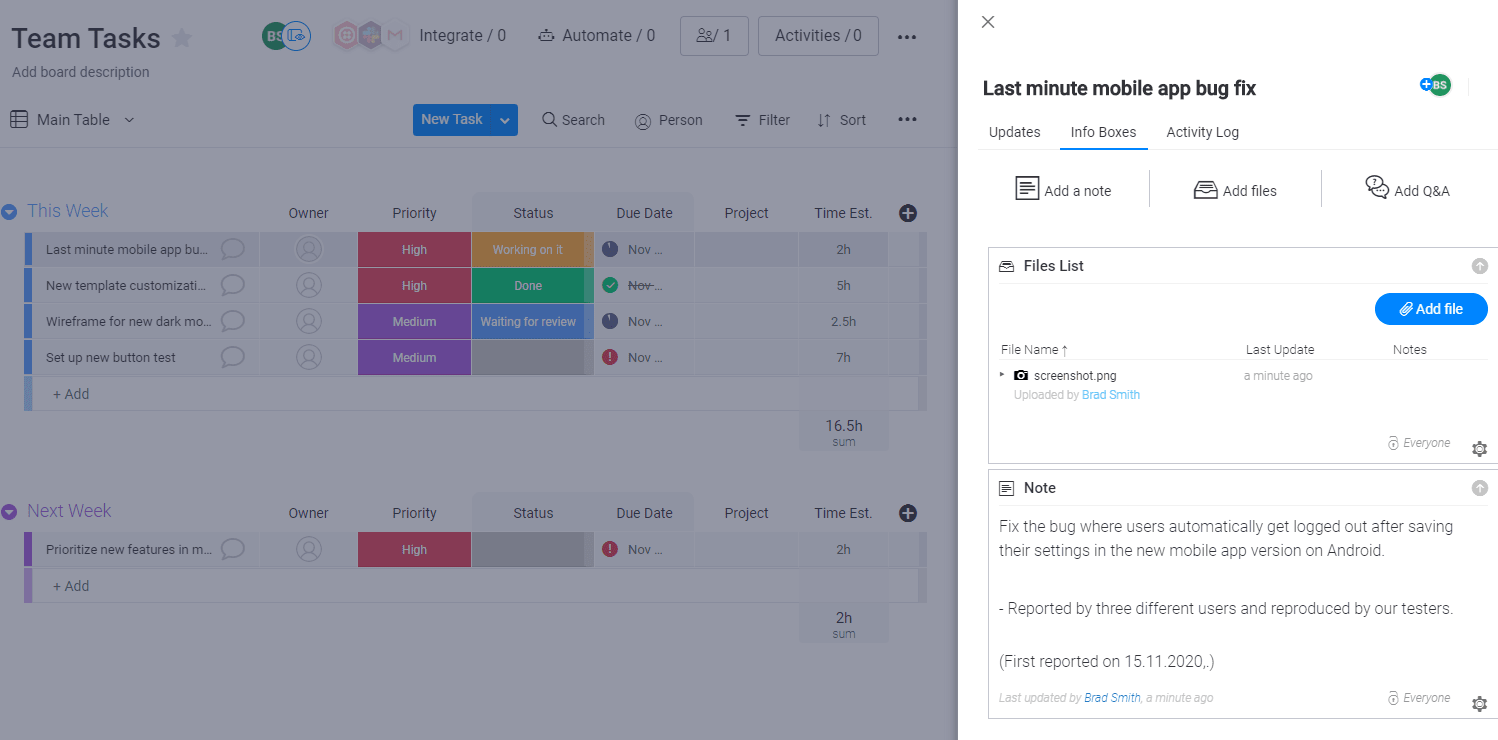
Or it could be something as simple as photocopying the latest brochure for distribution.
Single tasks are typically assigned to a single person or team, while the larger project could be a company-wide endeavor.
The task may or may not include a start and end date or a series of subtasks—this all depends on the complexity of the project at hand, which could be related to industry.
How do you break down a project into smaller tasks?
Even long term Scrum projects that last 11.6 weeks on average make use of task management to get their work done efficiently and effectively.
Part of task management includes creating manageable workloads, considering task dependencies, and of course, communicating across teams to avoid double work or roadblocks.
To avoid these issues, you need some way to break down the high-level project deliverables and goals into tangible tasks.
In the next section, we’ll show you two of the most popular methodologies, Waterfall, and Scrum.
Work Breakdown Structure
The work breakdown structure (WBS) is the official method of breaking down projects in the PMI Guidebook.
To figure out how to break the entire project into tasks, you first need to divide it into the actual deliverables required to hand over the final product or result to the client.
For example, if you’re planning to make a mountain bike, you can break that down into the frame, handlebars, pedals, wheels, chains, and so on.
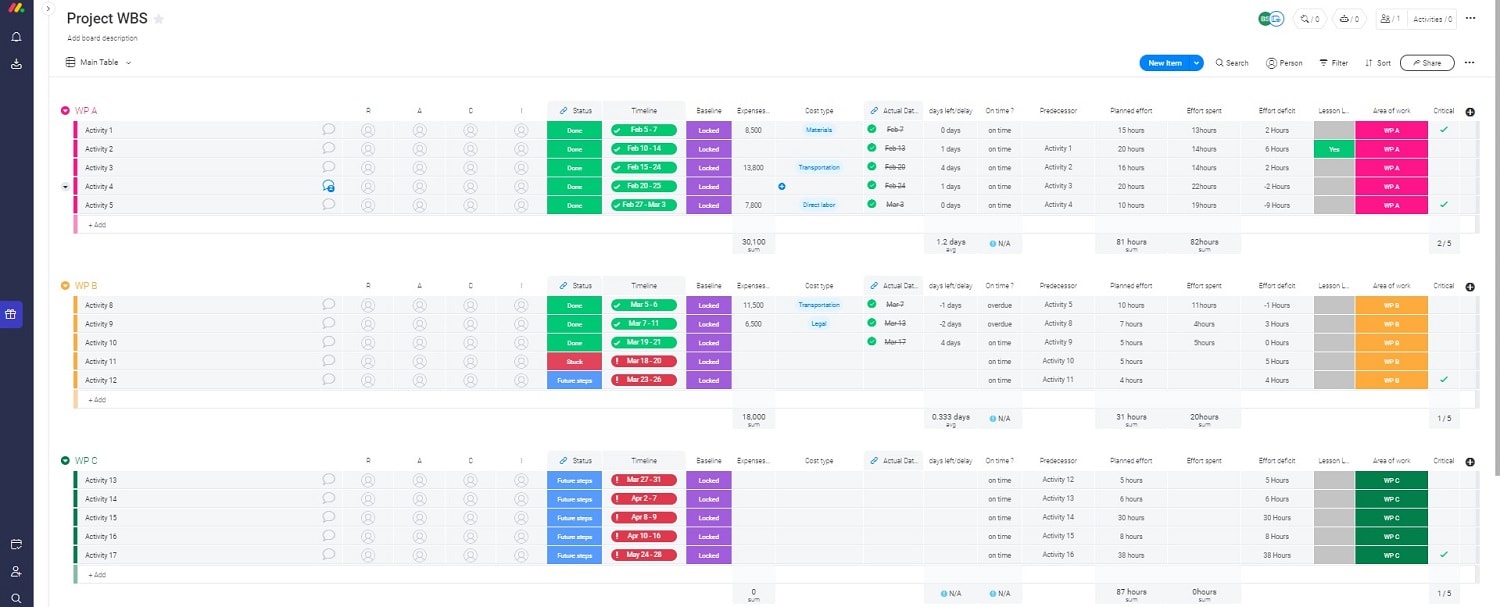
( Image Source )
You also need to work out the dependencies of the project (aka which deliverables require another one for completion).
If we were to simplify the WBS, the section on manufacturing the bike frame might look something like this.

Of course, each item contains multiple tasks such as sourcing vendors, reviewing designs, picking materials, and more.
But if you assign these tasks to teams who have the necessary skills to complete all of them, that’s what the top-level plan might look like.
If you use an Agile framework, like Scrum, you won’t bother breaking down the entire project into detailed tasks at an early stage. Avoiding this large-scale exercise in prediction is one of the primary principles of Agile.
Instead, you’ll focus on planning out a deliverable increment of your product in Scrum sprints . These are 2–4 week periods of focused work dedicated to delivering a working product version of the final deliverable.
The basis for planning out these iterations is a backlog of features or user stories (functionality from the user’s perspective). You may also have a product roadmap to outline the long-term product direction as well.
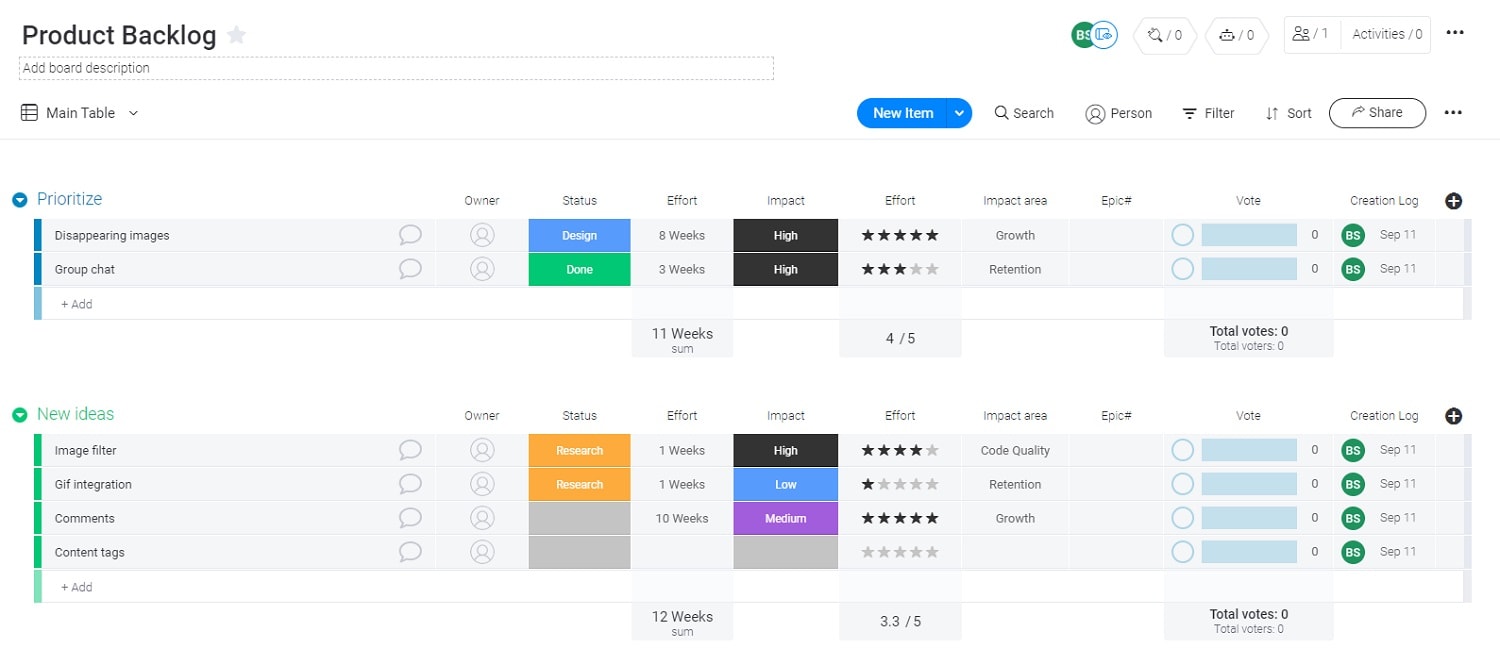
The product backlog is continually pruned and optimized before, during, and after sprints. Even if you’re not planning software projects, you can often single out elements that you can deliver in increments.
Before each Sprint, you meet with your team and stakeholders (invested parties) to discuss which user stories are the most important. You select a few items and create a dedicated sprint backlog .
Each user story is then further divided into tasks, and team members take ownership of the specific tasks they can handle.
It’s not ideal for all organizations or projects, but it’s an antidote against micromanagement in complex projects.
What size should a project task be?
So how granular should you get? What should the scope and length of the task in your project be?
It depends on the size of your project and your PM framework, but here are some rules of thumb.
The 8/80 rule for WBS
In traditional project management , a rule of thumb is that no task should be shorter than 8 hours or longer than 80 hours in the WBS.
That’s why the PMI recommends keeping tasks between 20–80 hours in the WBS.
Your individual teams can then have more granular task boards to manage their own to-do lists and/or break 2-week tasks down into daily sub-tasks.
Task length in Scrum
While user stories generally have no specified length, they’re often broken down into manageable chunks, usually one workday or less.
The official Scrum Guide doesn’t use the word tasks, but instead uses the term work unit:
“ Work planned for the first days of the Sprint by the Development Team is decomposed by the end of this meeting, often to units of one day or less. ”
On a Scrum board , you can use story points (at monday.com, we equate 1 SP to a workday) to estimate the length of the task.
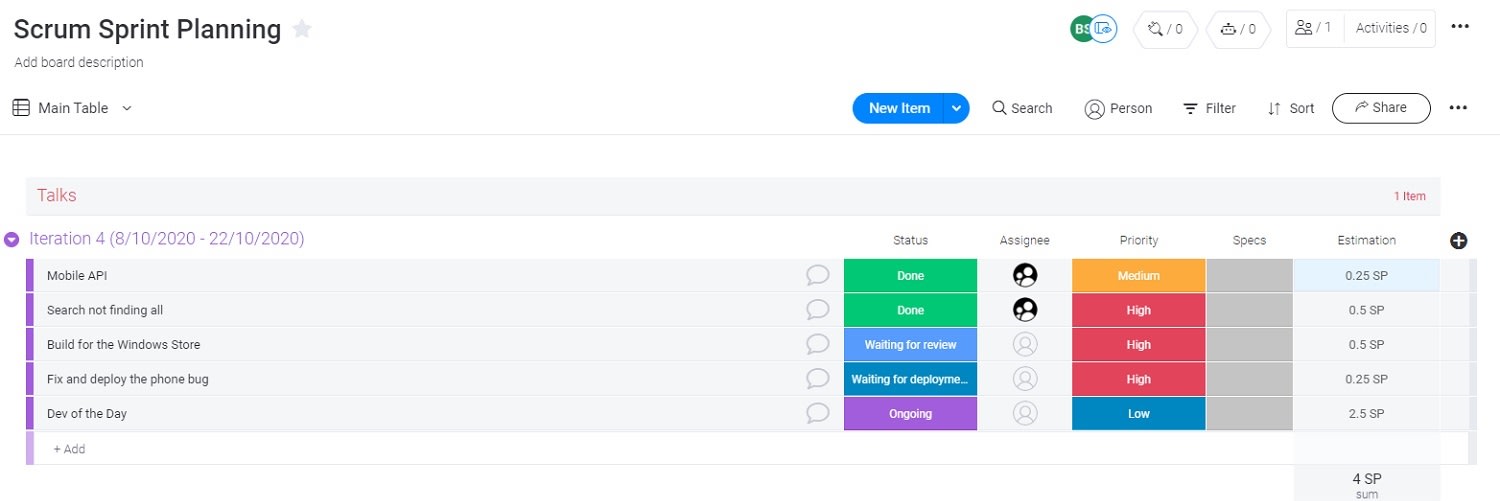
Tasks shouldn’t require more than one resource
When you break down deliverables into individual tasks, time isn’t the only consideration. The best approach is to make sure the person (or resource) who’s assigned the task can complete it from start to finish.
For example, a graphic designer could create a wireframe for an app, but wouldn’t be able to create a working prototype.
So you should split the larger deliverable of a working feature prototype into wireframe/design and development (at the very least).
For larger companies, a resource could be an entire team that includes designers, developers, and software testers. In which case, you don’t have to get as granular when planning and assigning tasks.
Accurately estimating task durations
The best way to predict the duration of tasks is to involve the actual resources who will handle the task in the planning process.
You don’t need to switch to Agile or Scrum to make this happen. You just need to involve the actual project implementers in the planning process, not just management.
Not only can they help with task durations, but they can also help with dependencies and expecting potential bottlenecks.
What is the best way to organize project tasks?
There are hundreds of different frameworks and methods for managing projects and breaking them down into tasks.
A few stand out because of their efficiency and ease of adoption and have become popular as a result.
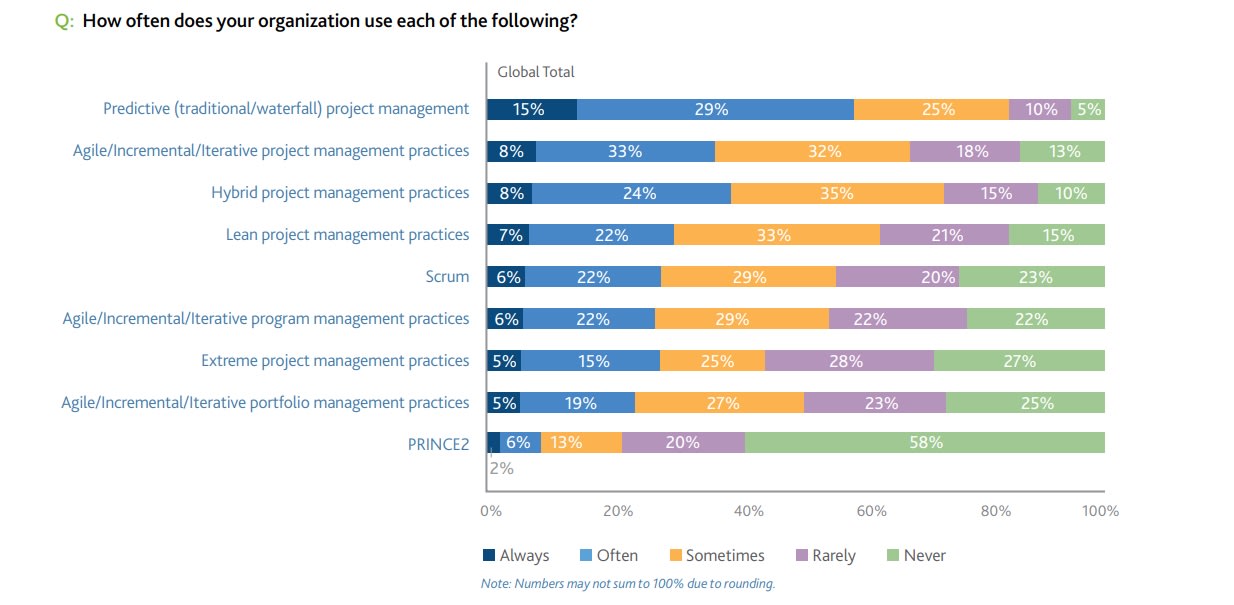
Let’s take a closer look at these industry-leading options.
Waterfall refers to the traditional “predictive” project management approach. It’s called predictive because you plan every phase of the project from start to finish before even getting started.
The reason it’s called waterfall is that the projects are planned to follow a sequential order.
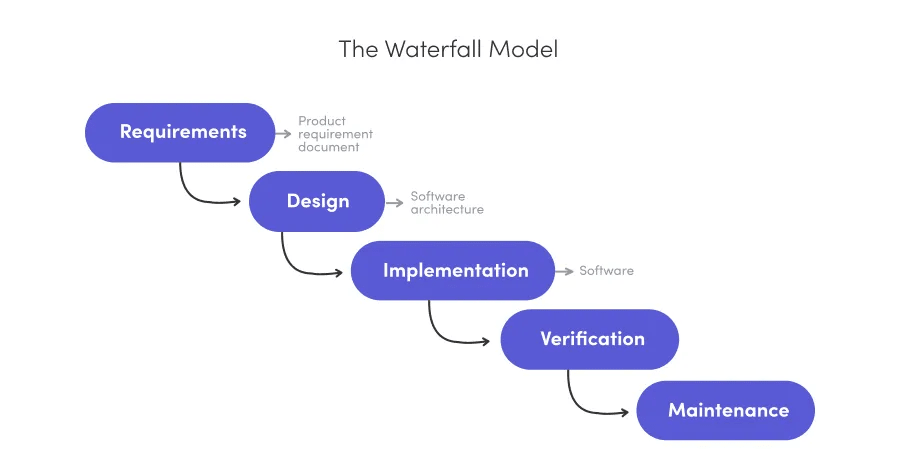
First, you start out by figuring out the requirements of the project. What deliverables do you need to deliver a finished product?
Then you move on to designing and creating (implementing) it. Finally, you verify that the product works as intended, and launch it. The last stage includes the long-term maintenance of the product.
While berating waterfall is a popular pastime among younger management professionals, it has its place.
For physical products with a lot of dependencies and high costs associated with actual production time, mapping out the entire project in detail can be the best approach.
Instead of a specific methodology, Agile outlines a core set of values and principles to apply to your projects. As a result, Agile is an umbrella term that covers many different methodologies and frameworks .
The most famous principle is to deliver working iterations of your project frequently. That’s in contrast to planning out an entire product from start to finish like with waterfall.
Lean, like Agile, is not a specific framework that details a project management approach. Instead, it refers to a management philosophy with a core set of principles.
The focus of Lean is eliminating waste in processes throughout each stage of production. The execution is what controls the outcome, after all.
Fixing bottlenecks between departments to speed up the final assembly is a good example.
Not to be confused with Agile, which is more about high-level concepts and principles, Scrum is an actual framework for project management.
It outlines clear rules, meetings (ceremonies), and deliverables (artifacts), not just values.
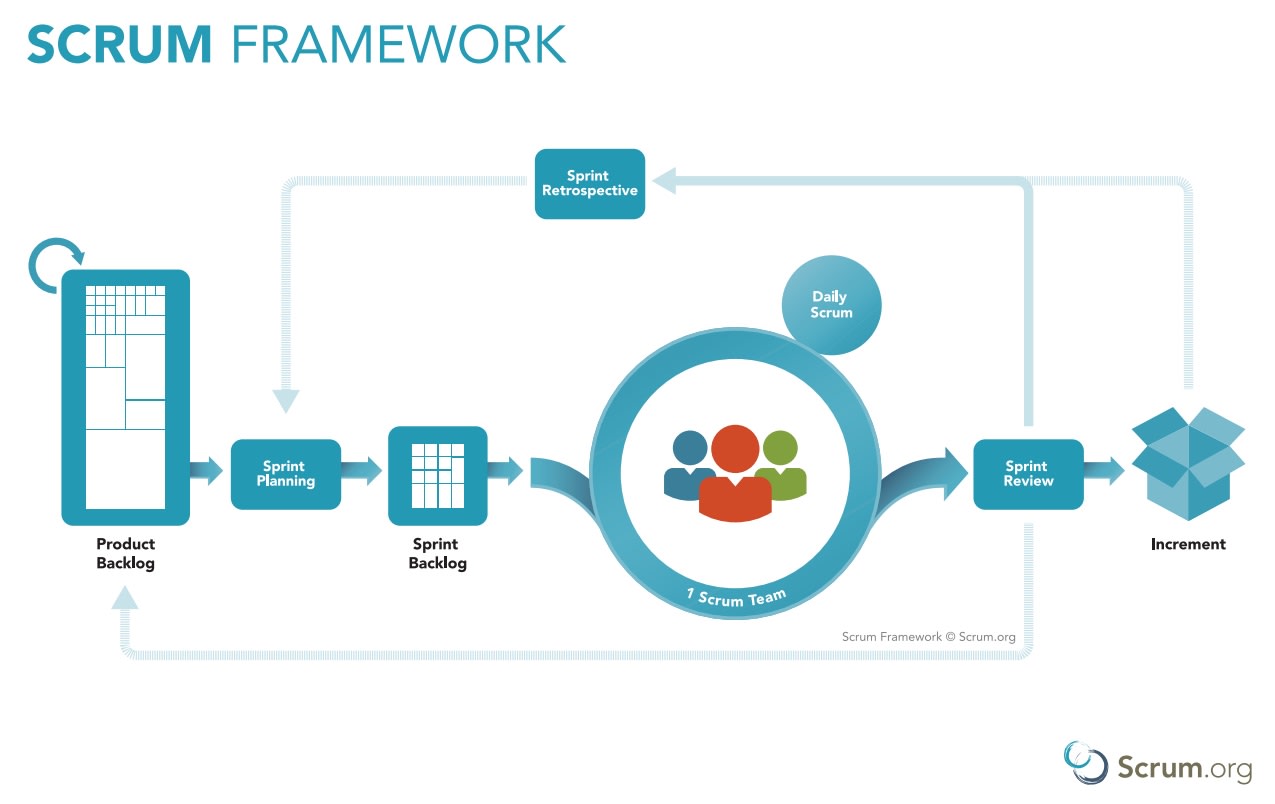
For example, Scrum teams should only include a maximum of 9 regular team members. Daily Scrum meetings should only last 15 minutes.
The entire process of designing and completing a sprint is laid out in detail. That’s what makes the Scrum framework so useful for teams that want to implement more Agile principles into practice.
How to use a project management platform for effective task management
Instead of slowing down your managers and teams with an inefficient process, take advantage of the latest task management software .
monday.com is a digital workspace with all the functionality a project manager could ever want, wrapped in a package that’s actually easy to learn and use.
Pick the framework or methodology you want to work with
If you want to reach a completely new target level of productivity, basic task management won’t cut it. You need to introduce a project management framework that goes beyond daily tasks.
Luckily, monday.com makes it easy to make the switch. We offer dedicated templates for everything from WBS to Scrum.
Develop the high-level project roadmap
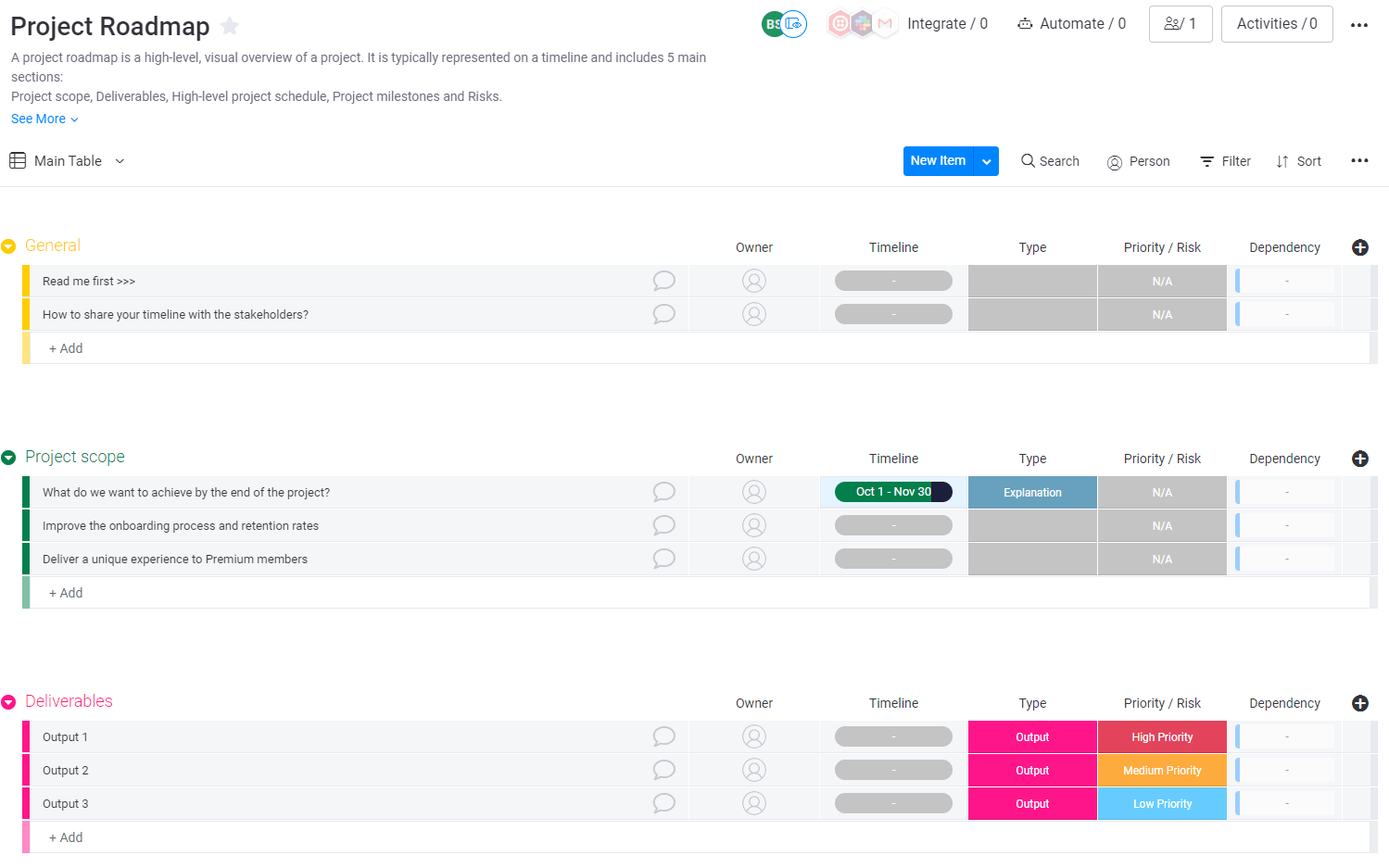
For consistent results, you should develop a high-level project roadmap. It will help guide all decisions and priorities as the project progresses.
Get more granular with a WBS and other task boards
This is where you break the larger goals into smaller deliverables and start to establish the workload for each team or department that’s involved.
It should outline the overall process but may not specify every activity or task, depending on the scale of the project.
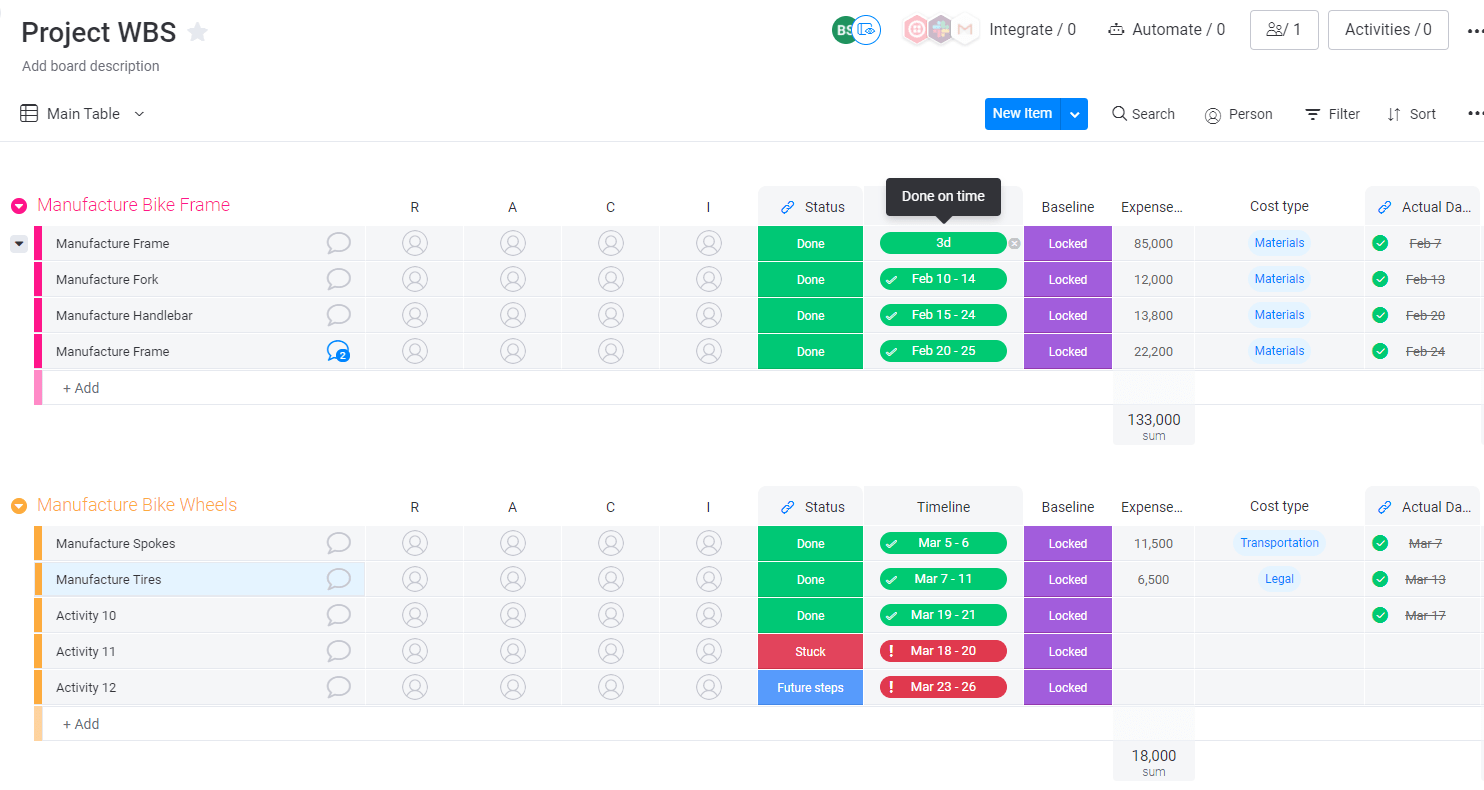
But it’s not the best for planning individual tasks within the involved teams or departments.
Which is why monday.com also offers more basic task boards that these teams can use to manage the day-to-day.
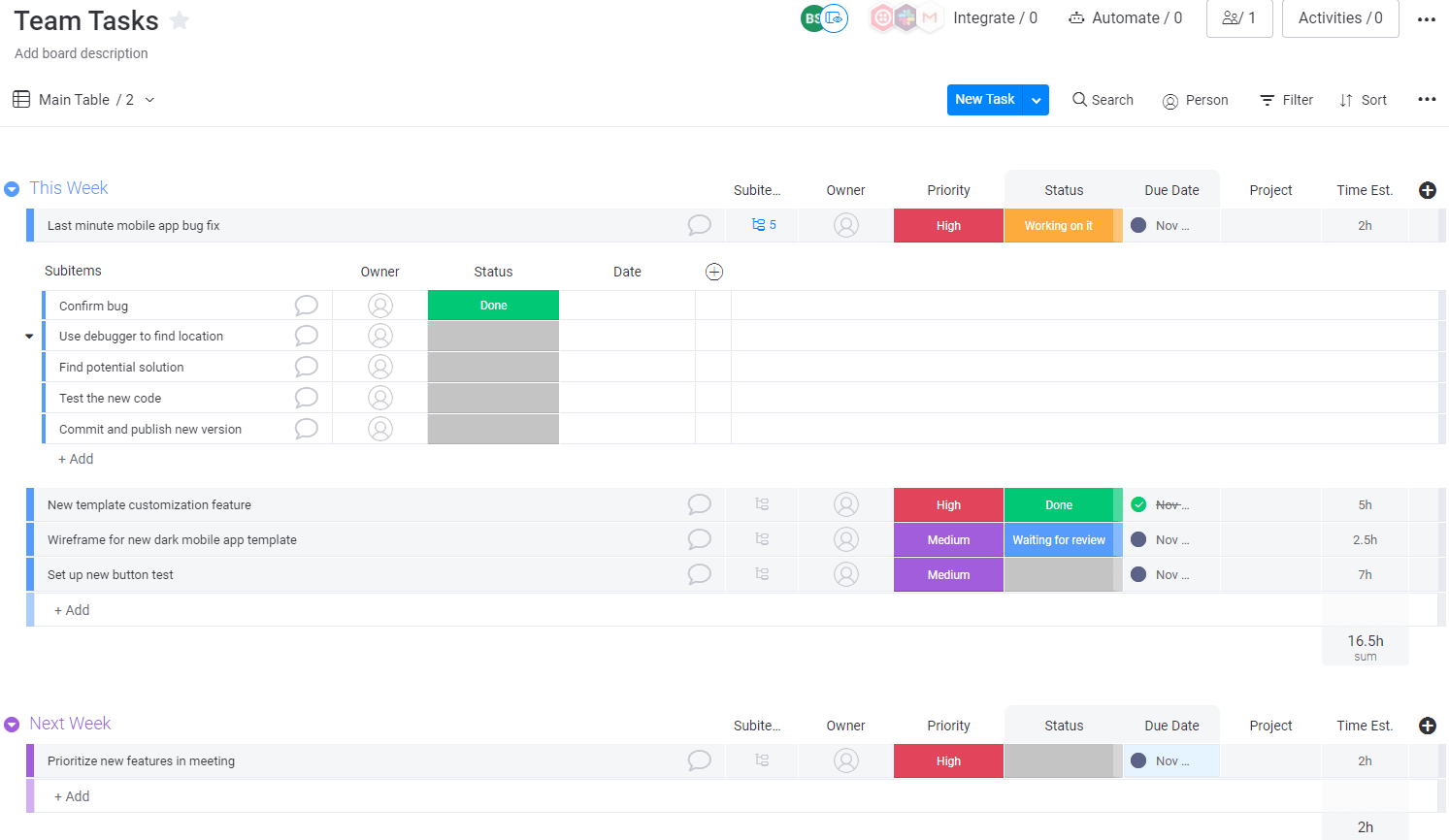
You can easily divide larger items into smaller subtasks and assign them as well.
Use integrations and automations to automate menial tasks
If you want to perfect your workflow , it’s not enough to create some new task boards. You also need to eliminate repetitive menial tasks.
For example, with our smart integrations, you can automatically update a card or create a new task when you receive an email or message.
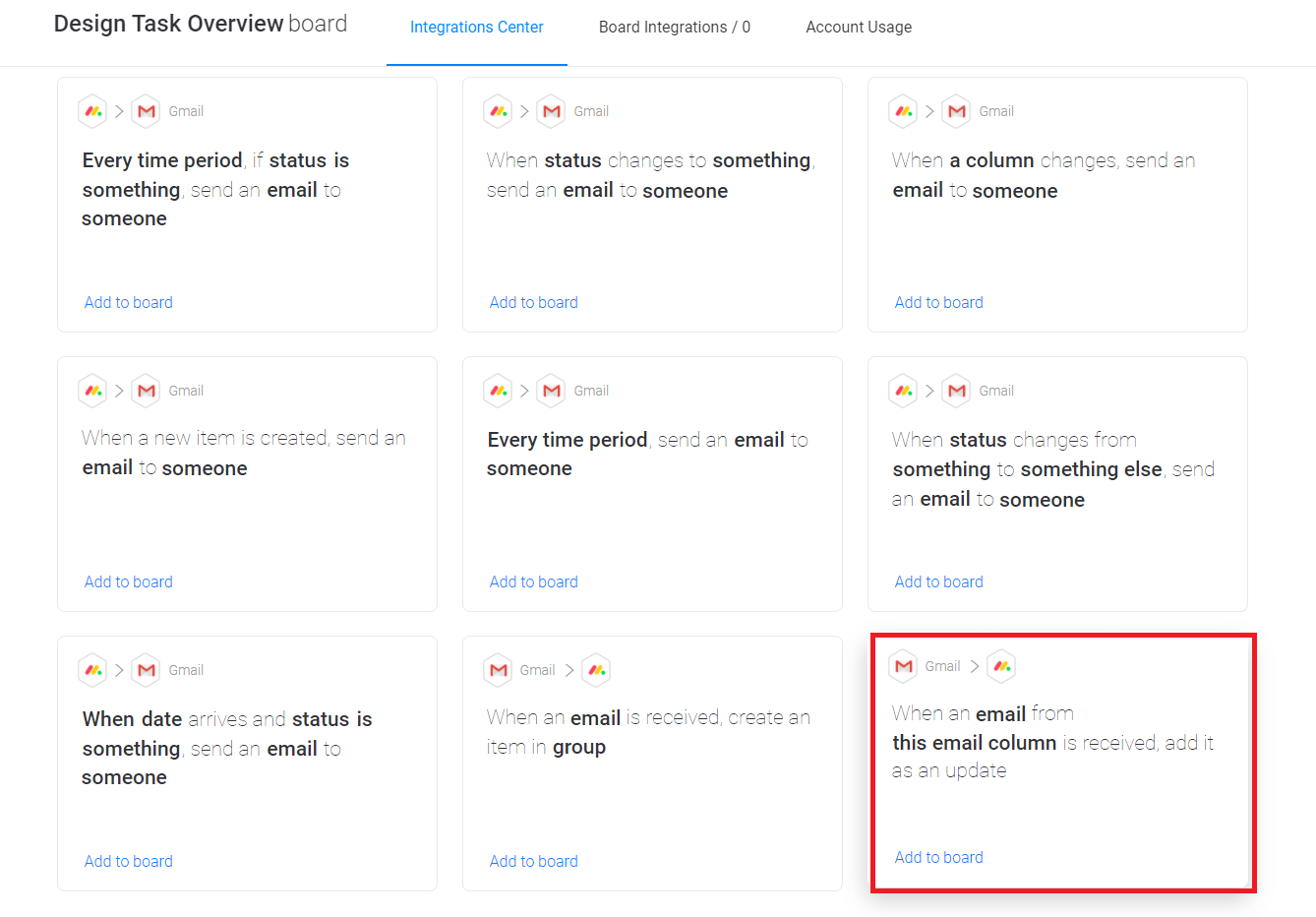
It’s a useful feature for a wide variety of teams and use-cases. For example, your software team could get a new task with every bug report.
By automating menial tasks, you give your managers and team the time and space to focus on crucial high-level decisions.
Keep managers up to speed with dashboards and reports
Want to see at a glance if tasks are being completed on schedule, or which people (or teams) are available for last-minute work?
You can easily create and customize a dashboard that will give your managers instant access to all the information they need.
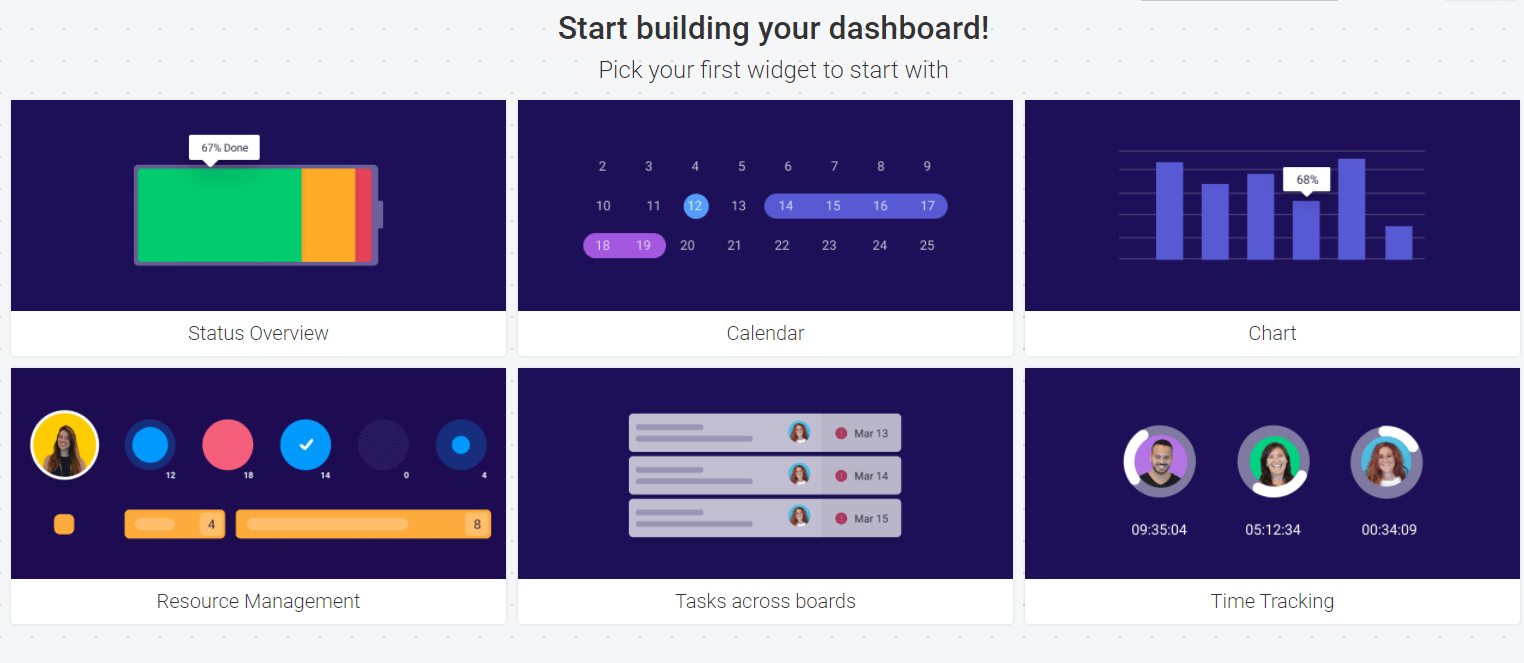
Master your tasks
Breaking down a project into tasks and assigning them effectively requires a bit of balance.
Finding the framework that works best for your industry and internal workflows and pairing them with the tips above can help you find the happy medium of management and autonomy that will allow your teams to thrive.
Whichever you choose, monday.com has the right templates and tools to help your projects succeed.
How to Assign Tasks and Responsibilities to Team Members
As a manager or team leader, it’s important to effectively assign tasks and responsibilities to team members in order to ensure that work is completed efficiently and effectively.
This can be a challenging task, especially if you have a large team, are working on a complex project, or are leading a team with no experience .
In this blog post, we will provide tips and best practices for assigning tasks and responsibilities to team members in a way that helps your team succeed.
We’ll cover topics such as setting clear expectations, delegating tasks appropriately, and providing support to team members as they complete their work.
By following these guidelines, you can create a productive and collaborative work environment that helps your team achieve its goals.
Setting Clear Expectations
One of the key elements of effective task assignments is setting clear expectations for team members.
This includes outlining the specific tasks that need to be completed, as well as any deadlines or goals that need to be met. It’s also important to communicate the purpose of the tasks and how they fit into the overall goals of the project or organization.
This helps team members understand the context of their work and why it’s important.
To set clear expectations, it’s a good idea to create a written document or task list that outlines the specific responsibilities of each team member.
This can be a simple spreadsheet or project management tool, or a more detailed project plan. Make sure to include details such as the task description, any necessary resources or tools, and any deadlines or milestones.
It’s also a good idea to discuss the task assignments with team members individually, to ensure that they understand their responsibilities and have any questions answered.
By setting clear expectations, you can help team members stay organized and focused as they complete their work.
Delegating Tasks Appropriately
Effective task assignment also involves delegating tasks to the right team members.
This means considering the skills, experience, and workload of each team member, and assigning tasks that are appropriate for their abilities and capacity. Delegating tasks appropriately helps to ensure that work is completed efficiently and effectively, and helps to avoid overloading any one team member or causing delays due to a lack of resources.
To delegate tasks appropriately, it’s important to have a good understanding of the strengths and weaknesses of each team member. This may involve reviewing their previous work or having candid conversations about their interests and capabilities.
It’s also important to consider the workload of each team member and ensure that they are not taking on more work than they can handle.
Another key aspect of effective task assignments is empowering team members to take ownership of their work . This means giving them the autonomy to complete tasks in their own way, within the parameters set by the project plan or task list.
Empowering team members to take ownership of their work can help to foster a sense of ownership and responsibility, and can lead to higher quality work and greater job satisfaction.
Providing Support to Team Members
Effective task assignment also involves providing support to team members as they complete their work.
This includes making sure that team members have the necessary resources and tools to complete their tasks, as well as offering guidance and assistance when needed. Providing support helps to ensure that team members are able to complete their work efficiently and effectively, and can also help to foster a sense of teamwork and collaboration within the team.
There are several ways that you can provide support to team members as they complete their work. This may include offering training or development opportunities, providing access to necessary resources or tools, and offering feedback and guidance as needed.
It’s also important to be available to team members if they have questions or need assistance with their tasks. By providing support and assistance, you can help team members to feel more confident and capable as they complete their work.
In conclusion, effective task assignment is an important element of managing a team or project. By setting clear expectations, delegating tasks appropriately, and providing support to team members, you can create a productive and collaborative work environment that helps your team succeed.
Communicating Task Assignments and Updates
Effective task assignment also involves effective communication with team members.
This includes not only clearly outlining the tasks and responsibilities that need to be completed, but also keeping team members informed of any updates or changes to the tasks or project plan. This can help to ensure that team members are aware of their responsibilities and are able to stay on track with their work.
There are several ways that you can communicate task assignments and updates to team members. This may include using a project management tool or task list to keep track of assignments and deadlines, as well as regularly holding meetings or check-ins to discuss progress and address any issues that may arise.
It’s also important to be available to team members if they have questions or need clarification on their tasks.
Effective communication is key to ensuring that team members are able to complete their work efficiently and effectively.
By keeping team members informed and providing clear guidance, you can help to ensure that work is completed on time and to the required standards.
Assessing and Adjusting Task Assignments
Effective task assignment also involves ongoing assessment and adjustment of task assignments as needed. This means regularly reviewing the progress of team members and the overall project, and making adjustments to tasks or responsibilities as needed to ensure that work is completed efficiently and effectively.
To assess and adjust task assignments, it’s important to regularly check in with team members and review their progress.
This may involve holding meetings or check-ins, as well as reviewing any project management tools or task lists that you are using to track progress. If you notice that a team member is struggling with their tasks or is unable to complete them on time, it may be necessary to adjust their assignments or provide additional support.
Similarly, if you notice that a team member has extra capacity or is particularly skilled in a certain area, you may want to consider reassigning tasks or increasing their responsibilities.
By regularly assessing and adjusting task assignments, you can ensure that work is completed efficiently and effectively, and that team members are able to make the most of their skills and abilities.
Encouraging Team Input and Feedback
Effective task assignment also involves encouraging team input and feedback.
This means soliciting ideas and suggestions from team members and actively listening to their concerns or issues related to their tasks or the project as a whole. Encouraging team input and feedback can help to foster a sense of ownership and engagement among team members, and can also lead to better decision-making and problem-solving.
There are several ways that you can encourage team input and feedback. This may include holding regular team meetings or check-ins, as well as setting aside time for open discussion and brainstorming sessions.
It’s also a good idea to create a culture of open and honest communication within your team, where team members feel comfortable speaking up and sharing their ideas or concerns.
By encouraging team input and feedback, you can create a more collaborative and inclusive work environment that helps your team succeed.
Providing Recognition and Rewards
Effective task assignment also involves providing recognition and rewards to team members who excel in their work. This can help to motivate team members and encourage them to continue performing at a high level, as well as foster a positive work culture.
There are many ways that you can provide recognition and rewards to team members. This may include offering verbal praise or written feedback, as well as more tangible rewards such as gift cards, paid time off, or additional responsibilities.
It’s important to consider the preferences and motivations of individual team members when deciding on recognition and rewards, as different people may respond differently to different forms of recognition.
By providing recognition and rewards to team members who excel in their work, you can show appreciation for their efforts and help to motivate and inspire them to continue performing at a high level.
Wrapping Up
Effective task assignment is an important element of managing a team or project.
It involves setting clear expectations for team members, delegating tasks appropriately, and providing support and assistance as needed.
Effective task assignment also involves ongoing communication and assessment, as well as encouraging team input and feedback and providing recognition and rewards for excellent performance.
By following these guidelines, you can create a productive and collaborative work environment that helps your team succeed.
Are you a visionary leader? Find out with our self-assessment!
Disclaimers
All the information on this website - https://melbado.com/ - is published in good faith and for general information purpose only. Melbado does not make any warranties about the completeness, reliability and accuracy of this information. Any action you take upon the information you find on this website (Melbado), is strictly at your own risk. Melbado will not be liable for any losses and/or damages in connection with the use of our website.
From our website, you can visit other websites by following hyperlinks to such external sites. While we strive to provide only quality links to useful and ethical websites, we have no control over the content and nature of these sites. These links to other websites do not imply a recommendation for all the content found on these sites. Site owners and content may change without notice and may occur before we have the opportunity to remove a link which may have gone 'bad'.
Please be also aware that when you leave our website, other sites may have different privacy policies and terms which are beyond our control. Please be sure to check the Privacy Policies of these sites as well as their "Terms of Service" before engaging in any business or uploading any information.
By using our website, you hereby consent to our disclaimer and agree to its terms.
how to effectively assign tasks to team members to increase productivity?

Picture this: It's Monday morning, and your team is buzzing with excitement, ready to take on the week. But wait! Who's doing what? Does everyone know their roles and responsibilities? Ah, the perennial challenge of assigning tasks . If this rings a bell, worry not. We've all been there. Have you ever felt the sting of mismatched roles? Like trying to fit a square peg into a round hole? Assigned tasks play a pivotal role in the smooth functioning of any team. And guess what? There are methods and tools that make this process easier. Let’s dive in.
As a leader in the workplace, it is essential to ensure that everyone in the team gets the appropriate amount of work. Sometimes, it's tempting to give an employee more tasks than others, especially if he/she finishes the tasks faster. But keep in mind that as managers, you must be fair. You must learn how to effectively assign tasks to your team members .
Although it may seem like a simple management function, assigning tasks to your team is actually challenging. As said by Liane Davey, cofounder of 3COze Inc. and author of You First: Inspire Your Team to Grow Up, Get Along, and Get Stuff Done , You are “juggling multiple interests” in the pursuit of optimal team performance.
Task distribution among various departments might vary from person to person. For efficient delegation, it is vital to consider guidelines while distributing duties to team members.
Tasks that are delegated effectively move your people, projects, and the entire business forward. It increases management and staff trust and accountability, helps in refining and teaching new abilities, enables personnel to become acquainted with various groups and areas of employment, and is an excellent foundation for performance reviews, etc.
How do you assign tasks to your employees?
Assigning tasks is typically perceived as a time-consuming activity that focuses on removing items from task lists in order to keep the project moving forward. Task assignment, nevertheless, ought to be a more employee-focused procedure that calls for extra commitment and work, which produces excellent outcomes.
Here are some tips to effectively assign tasks to your employees:
1. Delegate Positively
Don't just throw work at someone and expect them to deliver when they might not be qualified for that particular assignment. Maintain a mindset of doubting every assignment you gave and go over your personnel roster to see whether anyone else is capable of completing it as effectively as you can. They will be more likely to believe that they can do the assignment in the manner that the leader desires if they have a positive outlook. Employees won't feel inspired to start their assignment if you adversely assign them or have doubts about their competence. A little encouragement will make their day happier and encourage them to confidently do the tasks given to them.
2. Set Clear Goals and Objectives
To understand how your team performs, you should set clear goals and objectives before entrusting them with any responsibilities. When goals and objectives are not defined, it'll be harder for your team to see the big picture and perform tasks in a particular manner.
3. Assign the Right Task to the Right Employee
This is the key to productivity. Who has the most expertise and experience should be given priority, but don't give that individual too much work. You should also think about who needs to develop their sense of responsibility. Also, take into account the passage of time and their eagerness to seize the opportunity. To do this, the manager should create a delegation plan that considers the various skill sets of each employee and assign tasks that are properly suited to each individual. On the other hand, when a task requires an extraordinary employee and there is a talent shortage, the leaders themselves should do the assignment in an emergency or without a workforce.
4. Obtain Inputs from Your Team and Set Up Meetings if Possible
Get suggestions from your team on what should be modified, who you could include, and how outcomes should be defined. Engage with the specific managers of the sub-teams if you are in charge of a large team or organization. A meeting with the entire team is necessary before assigning tasks to team members. You may obtain a clear picture of who is responsible for what and how purposefully they can do the assignment. Getting suggestions from your team members ensures that each of them will contribute to the task's accomplishment.
5. Conduct Training and Supervision
A project's completion necessitates the blending of various delegation techniques, a high degree of team member commitment, and effective planning and execution. It is essential to teach the team members and meet with the team every day in order to produce a skilled workforce. The training includes free access to resources for developing skills, such as courses from Upskillist , Udemy , or Coursera . Following the training phase, the work must be supervised by a professional to ensure that the team learned from the training provided. Before and throughout the task assignment and execution among several team members, training and supervision are equally crucial.
6. Communicate Constantly
It doesn't mean that when you're done delegating the tasks, everything's good. No, it doesn't work that way. Constant communication is also the key to unlocking productivity. You need to collaborate with your team . Professionals at work must keep a close watch on their team members to learn about any challenges or issues they may be having. For the task to be completed and the status of each team member to be tracked, communication is essential. Following up on tasks you assign to your employees helps them manage pressure and boost job productivity since problems like stress and pressure may tangle them and slow them down. Employee burnout is a result of micromanagement, which is not a good concept. It is best to let staff go free by following up casually.
7. Know who to Handover Authorization and Control
Decentralized power relieves employers of job management. Make sure to provide your staff some authority when you delegate tasks to them using management apps such as Trello , Asana , Edworking , Slack , and the like. Employees become empowered and responsible for completing tasks as a result of the control transfer. Giving them too little authority can cause issues because they lose interest in their work while giving them too much control might overwhelm them and cause them to forget basic responsibilities. The key to the team's success is giving each member the authority they rightfully deserve while also soliciting input.
8. After the project, assess the results
Ask yourself how you as the manager could support the success of your team members more effectively. Give constructive criticism and accept it in return.
The most vital phase in job completion is assigning tasks to team members. Due to the frequent mistakes made while delegating duties, it is imperative to use management tools when giving your team responsibilities. Project management solutions provide better work allocations by incorporating features like marketing automation. Employee development and time tracking are made easier by the task assignment guidelines, which also help keep workers interested.
Allocating Vs. Delegating Tasks
Now that you've learned about some tips to properly assign tasks, you may also have questions like, "what's the difference between allocating and delegating tasks?"
As stated by Abhinav in a published article on LinkedIn, "The imbalance of responsibility and accountability is the main difference between Delegation and Allocation." What does it mean? Delegation gives a real opportunity for your team to upskill, grow, and develop. Allocating tasks is merely assigning tasks without the goal of helping your team grow.
Although assigning tasks has its merits, delegating tasks offers significant advantages in terms of employee growth and engagement. Because delegation when done well delivers diversity and other intrinsic motivational incentives that make work so much more meaningful, it will be even more rewarding for the manager and team members.
Task Tips and Best Practices
In order to accomplish our objectives and SMART goals, we define a particular number of tasks that we must do each day. We frequently take on more than we can handle in the fight to remain at the top of our game and maintain our competitive edge.
Even while everything appears to be of the utmost importance, something is off in your struggle to finish everything while maintaining your composure. Some of us have a lengthy list of things we want to get done before a given age or period. Others devote so much effort to honing a particular skill that by the time it shines, it is no longer relevant.
Time management and balancing workload are not just skills of project managers or superiors. In reality, these abilities should be embraced at every level, particularly when working in a team. Research by Cornerstone found that when workers believe they don't have enough time in the day to do their jobs, work overload reduces productivity by 68%. What tips and best practices should you do so you don't only allocate tasks but delegate them effectively?
1. Prioritize. Make a to-do list according to the order of priority
Even if to-do lists are classic, they are still more efficient and effective than ever. People used to keep handwritten notes for ideas and tasks back in the day. There are smart to-do lists apps and software that provide notifications and reminders prior to the task's due date.
2. Maximize productivity and minimize procrastination
To start, delegate the tasks to the right people. Don't do it tomorrow or the next day. Do it today. Having a lot to accomplish may be stressful, which is sometimes worse than the actual task. If you struggle with procrastination, it's possible that you haven't come up with a good task management strategy. You might express your lack of starting knowledge by procrastinating. It could not be laziness, but rather a matter of setting priorities.
3. Be motivated
Procrastination and a lack of motivation are closely correlated. When you lack motivation, you tend to get distracted. If you want to meet milestones and deadlines, be motivated.
4. Delegate and be involved
The reality of being overburdened can have a negative impact on productivity if it is not properly managed. At the end of the day, we're still just humans. When it comes to having patience, resilience, working under pressure, or finishing a task quickly, each one of us possesses a certain set of skills. So, delegate the right tasks to the right person in your team, and don't just stop there. Be involved. Leaving the stadium just because you're done delegating is a big no. Keep in touch with them and follow up on the progress of the tasks assigned.
Task Vs. Subtask
Tasks and subtasks are quite similar. The only difference is that a subtask should be completed as an element of completing a larger and more complex task.
For example, the task is to increase your company's social media presence. So, what should you do to accomplish those tasks? That's when you have subtasks such as creating optimized posts and content on various social media platforms, scheduling them, interacting with your audience in the comment section, etc.
The additional stages that make up a task are called subtasks. They are essential while working on large projects with a wide range of tasks. In some task management tools, You may create as many subtasks as you need in the task view, but you must first choose the parent task before you can create a subtask.
Why You Should Assign Tasks Effectively to Team Members
Enhance team productivity.
Efficient task assignment can work wonders for your team's productivity. When each team member knows their role and is well-suited for their tasks, they can focus on delivering high-quality results. Imagine a well-oiled machine, with each cog spinning smoothly and in harmony - that's your team at peak productivity!
Consider these points:
- Match tasks to individual skills : Ensure tasks align with your team members' unique abilities and expertise.
- Set clear expectations : Be transparent about deadlines, deliverables, and objectives.
- Foster collaboration : Encourage communication and collaboration among team members.
Nurture a Sense of Ownership
Assigning tasks effectively helps to in still a sense of ownership and responsibility within your team. When individuals understand their role in a project, they are more likely to take pride in their work and strive for excellence. It's like planting a seed - with proper care and attention, it'll grow into a strong, thriving tree.
Key elements to foster ownership:
- Encourage autonomy : Allow team members to make decisions and take charge of their tasks.
- Provide feedback : Offer constructive feedback and celebrate successes.
- Support development : Invest in your team members' growth through training and development opportunities.

Reduce Work Overload and Burnout
Nobody wants to be buried under an avalanche of tasks. By allocating work effectively, you can prevent team members from feeling overwhelmed and burned out. Just as we can't run on empty, neither can our team members - so, let's ensure they have a manageable workload.
Strategies to avoid overload:
- Balance workloads : Distribute tasks evenly and consider individual capacities.
- Encourage breaks : Promote a healthy work-life balance and remind your team to take breaks.
- Monitor progress : Regularly check in with your team members to assess their workloads and stress levels.
Boost Employee Engagement
An engaged employee is a happy and productive one. When you assign tasks effectively, you're laying the groundwork for increased engagement. Think of it as a dance - with the right choreography, everyone knows their steps and performs in harmony.
Steps to enhance engagement:
- Align tasks with goals : Ensure tasks contribute to the overall goals of your team and organization.
- Offer variety : Mix up tasks to keep things interesting and provide opportunities for growth.
- Recognize achievements : Acknowledge hard work and accomplishments.
Improve Overall Team Morale
Finally, effective task assignment can lead to a happier, more cohesive team. When everyone feels valued and supported, team morale soars. Imagine a choir, each voice blending harmoniously to create a beautiful symphony - that's a team with high morale.
Ways to uplift team morale:
- Empower decision-making : Encourage team members to contribute their ideas and be part of the decision-making process.
- Foster a positive atmosphere : Cultivate an environment of open communication, trust, and support.
- Celebrate successes : Acknowledge both individual and team achievements, and celebrate them together.
Tools to Simplify Task Assignments in Teams
Microsoft outlook: not just for emails.
Yes, you heard that right. Beyond sending emails, Outlook has task features that allow managers to assign work to team members. You can set deadlines, prioritize, and even track progress. Think of it as your digital task manager. How cool is that?
Google Docs: Collaboration Made Easy
A favorite for many, Google Docs allows real-time collaboration. Need to distribute tasks ? Create a shared document, list down the tasks, and voila! Everyone can view, edit, or comment. Ever thought of using a simple shared document as a task distribution board?
Trello: Visual Task Management
For those of us who are visual creatures, Trello is a game-changer. Create boards, list assigned duties , and move them across columns as they progress. Remember playing with building blocks as a kid? It’s pretty much that, but digital and for grown-ups!
Common Mistakes to Avoid
Assigning tasks effectively is a skill that every leader must master to ensure team productivity and employee satisfaction. While the tips provided earlier can help you get there, being aware of common mistakes in task assignment is equally crucial. Avoiding these pitfalls can save you from derailing your projects and hampering your team's morale.
1. Overburdening Skilled Employees
It's tempting to give the bulk of the work to your most skilled team members, but this can lead to burnout and decreased productivity in the long term.
2. Lack of Clarity in Instructions
Vague or unclear instructions can result in misunderstandings, leading to poor quality of work or project delays. Always be specific and clear about what is expected.
3. Micromanaging
While it’s essential to oversee the progress of tasks, hovering over your team members can undermine their confidence and create a stressful work environment.
4. Failing to Prioritize Tasks
Not all tasks are created equal. Failing to prioritize can lead to poor allocation of resources, with less important tasks taking away time and energy from critical objectives.
5. Ignoring Team Input
Ignoring suggestions or feedback from your team can result in missed opportunities for more effective delegation and stronger team cohesion.
6. One-Size-Fits-All Approach
Remember that each team member has unique skills and limitations. Assigning tasks without considering these factors can lead to ineffective results and frustrated employees.
7. Neglecting Follow-Up
Assigning a task is not the end but part of an ongoing process. Failing to follow up can result in delays and could indicate to your team that the task wasn’t that important to begin with.
8. Fear of Delegating
Sometimes managers avoid delegating tasks because they feel that no one else can do the job as well as they can. This not only increases your workload but also deprives team members of growth opportunities.
A significant aspect of a leader's duties is delegating assignments to team members effectively. The secret to a manager's team functioning like an efficient machine is wise delegation.
Because of delegation, you won't have to spend hours on work that someone else can complete more quickly. Trying to handle everything on your own can quickly wear you out, regardless of your knowledge or expertise. Effectively delegating tasks enables you to keep on top of your own work while assisting team members in acquiring new abilities and developing a sense of comfort with taking ownership of tasks.
Proper delegation of tasks also provides managers and team members with a learning opportunity since it enables everyone to build trust and become accustomed to exchanging comments and showing each other respect and appreciation.
Less is more when attempting to boost your team's output. Your team may become burned out if you try to increase their production too rapidly. In contrast, if you're too aggressive, your team can lose interest in their work and productivity might drop. Keep in mind that everyone will be more productive if they are part of the decision-making and execution process.
If you want to delegate tasks with ease and convenience, go for Edworking . This management tool lets you assign tasks and oversee your team's progress in a specific task. You can also conduct meetings to meet your team.`
Know that productivity greatly matters. With the right knowledge of assigning tasks to your team members, you can maximize productivity. Thus, achieving the goals and objectives of your organization.
What is the best way to assign tasks to team members?
Recognizing and understanding each member's unique strengths and expertise is paramount. Instead of assigning tasks randomly, it's always better to match each job with the individual’s skill set. Consider open dialogue, seek feedback, and ensure the assigned tasks align with both team and individual goals. It's a bit like giving everyone their favorite role in a play; wouldn't they shine brighter?
How do you assign tasks to a team in Teamwork?
In Teamwork, tasks can be assigned effortlessly. Start by creating a task list, then add individual tasks. Within each task, there's an option to 'Assign To.' Simply choose the team member you wish to assign the task to. Think of it as passing the baton in a relay race – each person knows when to run and when to pass it on!
Why is it important to assign tasks to your team members?
Assigning specific tasks helps in streamlining the workflow, ensuring accountability, and reducing overlaps or gaps in responsibilities. It also empowers team members by giving them ownership of their work. Have you ever seen a football team where everyone runs after the ball? Without clear roles, it's chaos!
How do you politely assign a task?
Start by acknowledging the individual's capabilities and expressing confidence in their ability to handle the task. Then, clearly explain the job's scope, expectations, and its importance in the overall project. Think of it as offering a piece of cake, not dumping a plate on their lap!
How do short term goals differ from long term goals?
Short-term goals act as stepping stones towards achieving long-term goals. While short-term goals focus on immediate challenges and tasks (think weeks or months), long-term goals look at the bigger picture and can span years. It's like comparing a sprint to a marathon. One's quick and intense, the other's about endurance and the long haul.

Evenly distribute your team's workload with Round Robin ticket assignment. Learn More
- Performance
Assigning Tasks: How to Delegate Effectively
There are certain projects that could never be completed if they weren’t broken down into individual tasks, especially those of a certain size and complexity. As soon as your team grows bigger than one or two people, you need to make use of the ability to assign tasks to achieve your goals.
Last updated: December 21, 2022
8 mins read
There are some customer service superheroes out there who seem to be able to complete all the tasks themselves. But the reality is that most of us need to learn the skill of assigning tasks to others, especially if we are in positions of responsibility in busy customer service teams. This is to ensure that no single person is burdened with the workload, or high-performers are being unfairly assigned a larger proportion of the work available.
Assigning tasks is essential for high-performing customer service teams that must juggle multiple priorities.
Anyone who has any experience working in a customer service team understands task assignments, which helps you to get projects completed, customer queries solved and objectives fulfilled. It’s naturally much quicker and more efficient to have multiple employees working on different tasks that make up a project, utilizing their unique skills and experiences to come up with creative solutions.
Without assigned tasks, projects would never get completed because teams are not working to their full capacity. Some customer problems could never be resolved because they require the contributions of different customer service representatives . Assigning tasks needs to be deliberate since it requires the coordination of multiple members of a team.
What is task assigning?
Task assigning means allocating and delegating tasks to members of your team for effective project management. The task assigner is aware of the various strengths and weaknesses, skills and experience of individuals and can assign them tasks in pursuit of greater productivity.
You need to be able to break down projects into component parts so that each individual may contribute to the greater whole. Usually, you will use task tracking or project management tools that can help your team manage their assigned task, and can even offer customer service automations that make assigning tasks easier.
When assigning tasks is implemented effectively, each team member knows who is responsible for what and when tasks are due. This helps prevent conflicting priorities. Each task must come full circle, with each assignee receiving constructive feedback on how well they have completed the task.
Even if you assign a task to another team member, they are still reporting into the task owner for approval.
The importance of efficient task assignments
Efficient task assignment means that customer service teams can work to their full productivity, since each team member understands what they are responsible for. Your task description can break each task down so service reps fully understand the steps they need to take to complete the task, and have access to the resources they might need to be successful. Employees perform better when they are trusted with tasks that help them stretch and grow.
The entire purpose of a team is to enable different employees to work together effectively and create outcomes that are greater than the individual contributions. Customer service teams that have a plurality of perspectives from multiple people are more creative. A diversity of perspectives contributes to more creative solutions as people with different backgrounds collaborate together.
Projects are completed much more quickly when you have multiple team members handling all your employee tasks, instead of one person trying to do everything on their own. Task assignment means team members who have both the time and experience necessary to complete the task can all have a role to play.
Effectively assigning tasks to individual team members gives them a chance to stretch themselves and engage in more professional development. New tasks give more junior customer service reps the opportunity to step outside of their comfort zone, and complete different types of work that may otherwise not come across their path.
There are many benefits to task assignment, not least because it allows the entire team to share the workload.
The difference between assignment and delegation
While they might at first glance seem to be similar, there is a big difference between task assignment and delegation. Assignment means you assign tasks to a team member and explain exactly how you want things to be done, with clear-cut instructions. Delegation means you are transferring responsibility for the task to your assignee and giving them more autonomy for how that task gets completed.
Assigning tasks is often repetitive but it nevertheless contributes to the overall completion of the project. A delegated task is more free and gives your team members the opportunity to grow as they figure out how to produce the desired results. Task delegations are based more on outcomes than specific instructions, with the employee figuring out how to complete the task on their own.
Although task delegation is more autonomous, it nevertheless still requires support from the manager to ensure that the employee has adequate direction. Delegating a task doesn’t mean the manager no longer has anything to do with it, but simply that they are trusting their assignee to take ownership.
Choosing whether or not to assign or delegate a task means understanding the complexity of the task to be assigned.
How to assign tasks to team members
Try to remove yourself from the approval process.
When a supervisor assigns tasks to employees, they themselves can become a bottleneck as service reps turn to them for approval during every stage of completing the task. When multiple team members are waiting for sign-off from the same customer service manager, you find that you haven’t actually reduced your workload and you end up micromanaging your assignees.
When managers are too involved, projects lose momentum as the individual contributors end up waiting around for approval when they could be spending their time on more productive tasks. Customers are kept waiting as individual queries can’t progress without the authority of a manager.
In order to avoid this problem, you can select a group of dependable people who are responsible for the approval process. Delegating responsibility means that you can be more hands-off in the task completion process, while being assured that the work is being completed to a high standard. Schedule regular team meetings to go over the progress of each task and keep your eye on the ball.
Effective teamwork only happens when customer service supervisors feel secure enough to let the task go.
Make your expectations explicit
Unfortunately, we can all fall into the trap of assuming that other people are mind-readers. In reality though, if you don’t give clear instructions to your team members then you’re unlikely to get the result you want. You need to look at your task titles and outlines from the perspective of an outsider in order to formulate clear instructions.
If you want to better formulate tasks for your team members, break the task down into steps and give time estimates for each step. The more information the better, if you want to empower employees to complete tasks on their own. When employees are informed, they don’t have to waste time referring back to you for more clarity.
There’s a fine line between clarity and micromanaging. Once you have assigned the task, don’t keep pestering your service rep to check whether they are doing it right. If you’ve given clear instructions, they should be able to complete the task to the best of their ability.
At the same time, ensure that your employee knows they can always turn to you for help during the task, to guard against failure.
Set an objective time frame for completion
When employees are assigned tasks, they need to be made aware of the deadline for completion or the task could run on forever. It’s not enough to vaguely say “As soon as you get to it” because some critical customer issue is bound to come along.
It’s best to actively involve your customer service reps in their time frame for completion, since they are the ones who know best how long it will take them to finish certain tasks. When employees are involved in setting their own deadlines, they are more accountable and more likely to make an effort to meet it.
If an employee is aware of a deadline, they can let you know if competing priorities have materialized and whether the deadline may need to be reevaluated. It’s best to flag these issues as soon as possible, before they affect the overall progress of the project.
Without hard deadlines, projects will never get finished as every step gets continually put off until tomorrow.
Hold your employees accountable
When assigning tasks to employees, make sure that they can account for their working hours somewhere that is publicly accessible to the team. You can use time tracking software that will help other team members understand exactly how someone is progressing with their task and hold that individual accountable.
If employees are held responsible for their tasks, the project is much less likely to get derailed since you as the customer service manager can become aware if someone is falling behind. If your employee’s current progress looks like they might not meet their deadline, then you can ask them if they need extra help or support.
Tracking your team’s performance can also help you identify the high-performers and who might be available for extra work. You might also see when team members are spending time on unnecessary tasks that don’t contribute to the progress of the project. Teams will be more efficient when they know exactly where time is being spent.
If you don’t track your team’s hours, you won’t have visibility into your projects and their rate of completion.
Assign tasks to the right person
There are several reasons why you might choose a particular person to assign a task to, starting with their relevant skills and experience. When assigning tasks to someone, you want to know that they have the right capabilities to complete the task without too much support from the manager.
Secondly, you want to know that the person you assign the task to has enough time to complete the task. It’s no good assigning tasks to someone who is already overburdened with customer tickets and won’t be able to give your task the due care and attention.
Thirdly, you might consider assigning tasks to someone who is in need of development opportunities. Perhaps there might be someone more skilled for the task out there, but you want to give this service rep a chance to learn new skills. In this case, you can assign the task while offering extra support for their professional development.
Multiple factors come into play when it comes to deciding which person to assign a task to, so make sure you give each one enough consideration.
Relate each task to a wider perspective
When an employee is assigned a task, it might seem insignificant and menial which will cause them to lose motivation. In order to keep employees excited about completing tasks, relate it to the wider perspective and explain how it helps to meet overall objectives. No task is too small or you wouldn’t be including it in your project in the first place.
Showing employees how their work has an impact influences them to become more committed to the task. Employees are more engaged and happier at work when they understand how their contribution has a place, and that they are improving the lives of others in their team or of their customers.
If you can’t see how each task fits into the bigger picture, then perhaps it shouldn’t be included at all. Every task should advance your goals and contribute to the progress of the project.
If it’s not clear how a task fits into the broader picture, try to imagine what would happen if that task was left incomplete.
Offer feedback on tasks
Every customer service rep needs to understand their performance, whether the feedback is positive or negative. If an employee has no feedback, they have no idea how their work has impacted the team or whether their task has been successful. Without feedback, employees can’t improve and become more productive members of the team.
Providing your service reps with feedback means they can move onto progressively harder tasks that help them with their development. Even negative feedback can provide motivation to improve as the employee understands exactly what they did wrong with the task.
While providing feedback does take some time on the part of the customer service manager, it’s the only way that your team members can become more effective, able to take on more complex tasks that would normally go to more senior members of the team.
Be sure to phrase your feedback constructively to avoid demoralizing the team.
Wrapping up
Customer service teams that master the art of effective task assignment are more productive, more creative, and have better solutions than their counterparts who can’t assign tasks. In an efficient customer service team, everyone should know what is expected of them and how their work contributes to the whole.
Task assignments should be clear, detailed and accountable, with hard deadlines for completion.
Effective teamwork means you can accomplish more than you could as individuals, and assigning tasks is a big part of working together. With transparency and accountability, managers can monitor how everyone is adding to the project.
Catherine is a content writer and community builder for creative and ethical companies. She often writes case studies, help documentation and articles about customer support. Her writing has helped businesses to attract curious audiences and transform them into loyal advocates. You can find more of her work at https://awaywithwords.co.
Join 150+ teams that are sharing inboxes with us
The easiest way to upgrade your shared Gmail account. There’s no credit card is required.
The Missing Shared Inbox for Google Workspace
Continue reading.
11 Tips to Manage Email Overload at Work
Customer Response Time: The Ultimate Guide
Gmail Templates: Supercharge Your Email

Task vs Assignment - What's the difference?
In computing terms the difference between task and assignment, as nouns the difference between task and assignment, as a verb task, usage notes, derived terms.

Task management in Microsoft 365
Easily manage tasks across Microsoft 365
Access and update your tasks as you work, no matter which app you’re using.
See your tasks where you work
Stay focused and productive wherever you go. See your tasks across your lists as you move between apps and devices.
Manage tasks and work with Microsoft 365
Stay on top of all your tasks
View all your tasks from Microsoft To Do and Microsoft Planner with Tasks in Microsoft Teams. Plus, create tasks from Teams messages and publish tasks from corporate to frontline workers.
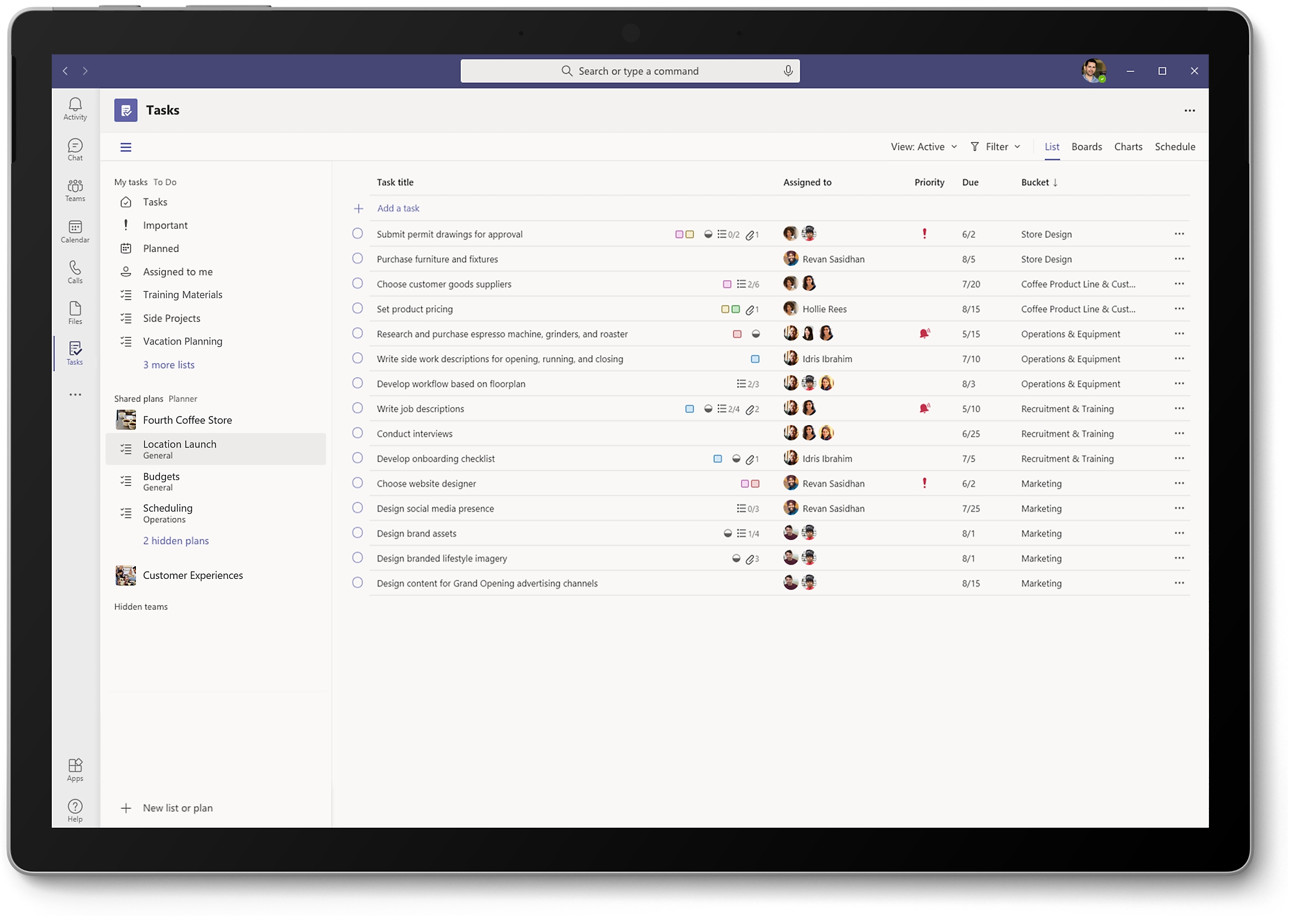
Convert emails to tasks
Flag emails or drag them into the Microsoft To Do pane to create and manage tasks directly in Outlook for the web.
Focus on what matters
Keep track of individual tasks in Microsoft To Do using intelligent features to collect, prioritize, and accomplish what’s most important.
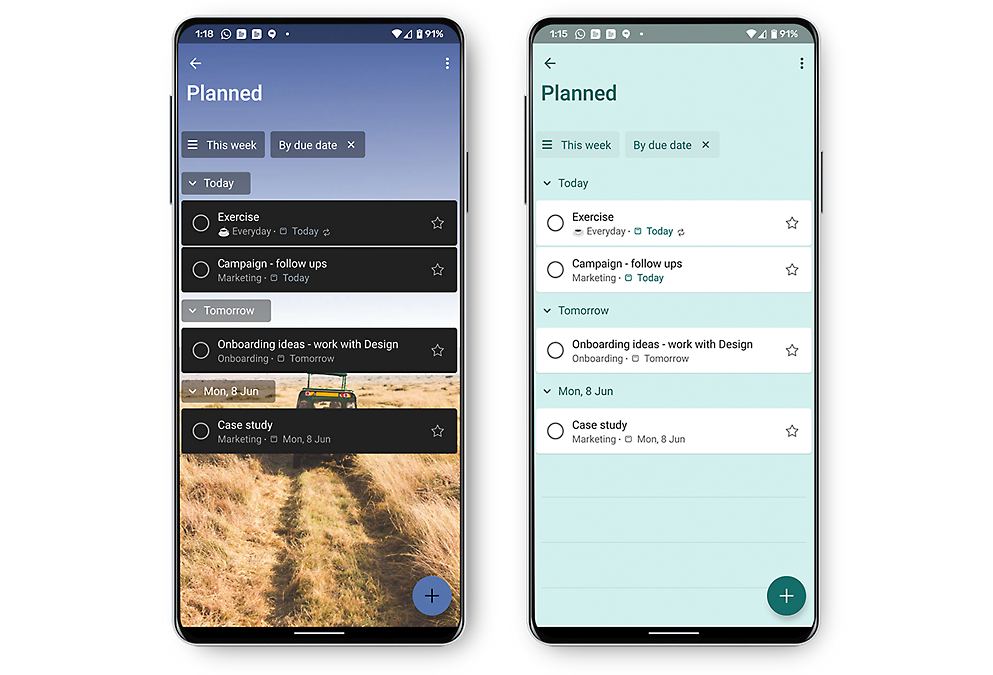
Get more work done as a team
Manage team tasks with Planner. Build Kanban boards, add content-rich tasks, get visual status, and collaborate within Planner or Tasks in Microsoft Teams.

Collaborate on shared Microsoft 365 documents
Use @mentions within comments in Word, Excel, and PowerPoint to create and assign tasks. 1 Receive an email notification when you’re assigned a task, see a preview of the document, and reply directly from Outlook.
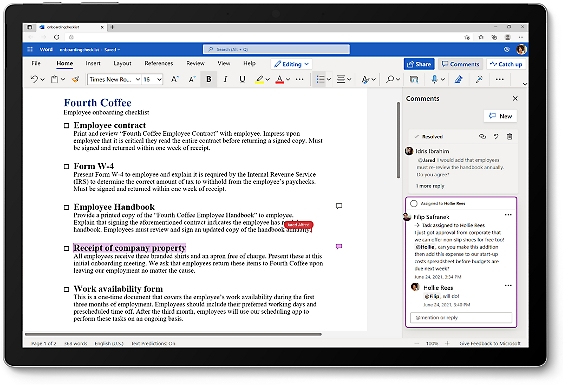
Get the most out of task management in Microsoft 365

Manage all your tasks in Microsoft Teams
Bring together your individual tasks from Microsoft To Do and team tasks from Planner and manage them all in one place with Tasks in Microsoft Teams.

Align tasks from corporate to the frontline
Plan centrally, manage regionally, and execute locally—all with one task management tool that provides real-time visibility across all your frontline locations.

Choose the right tool for managing work
Determine the best tool for managing your work—Microsoft To Do, Planner, Tasks in Microsoft Teams, Microsoft Lists, or Microsoft Project—with our when-to-use guides.

Create tasks from flagged emails
Flag emails in Outlook for the web to add them as tasks in Microsoft To Do and manage them alongside your other tasks using features such as due dates, reminders, and My Day.

See tasks from Planner in Microsoft To Do
Automatically sync your Planner assignments to the dedicated "Assigned to you" list in To Do to manage all your individual tasks in one app.
Read more about task management
Organize your day from start to finish with task management, digital productivity tools to maximize your executive function skills, how task management software can help your teams transition to a hybrid workplace, using task management software to reduce wasted time.
Get best-in-class productivity and task management apps with intelligent cloud services that transform the way you work with Microsoft 365.
Talk with sales
Speak with a sales specialist to learn more. Available M-F 6 AM to 6 PM PT.
1-855-270-0615
- Chat with sales
A sales specialist can help answer your questions. Available M-F 6 AM to 6 PM PT.
Follow Microsoft 365
- Contact sales
Available M-F 6 AM to 6 PM PT.

- Share on Twitter
- Share on LinkedIn
- Share on Facebook
- Share on Pinterest
- Share through Email
Task Management: Importance, Best Practices, & Tools
Mandy Schmitz is a consultant and project management expert with 10+ years of experience working internationally for big brands in fintech, consumer goods, and more.
Sarah is a project manager and strategy consultant with 15 years of experience leading cross-functional teams to execute complex multi-million dollar projects. She excels at diagnosing, prioritizing, and solving organizational challenges and cultivating strong relationships to improve how teams do business. Sarah is passionate about productivity, leadership, building community, and her home state of New Jersey.
Struggling to understand how your project tasks contribute to larger project goals? This comprehensive guide will help you understand how to plan, prioritize, and manage tasks. Plus, how to track progress and keep the project team in the loop.

Task management bridges the gap between the goals you documented in your project charter and what work needs to happen for your fledgling project to get off the ground.
It tends to be a glossed-over capability in project management because, while it sounds simple in theory, it can be trickier to execute in practice (although it’s made much simpler through the use of task management software rather than Excel spreadsheets).
What Is Task Management In Project Management?
Task management is a critical aspect of project management that involves:
- Identifying the tasks necessary to fulfill project goals : Break down project objectives into smaller, more manageable activities that can be assigned to individual team members. Ensure each task is clear, specific, and achievable, with a well-defined purpose and deadline. Unclear guidance may compromise timely, quality task completion.
- Assigning those tasks to team members : Consider the relative priority of each task or deliverable and assign it to the appropriate team member based on their skills and availability.
- Monitoring and tracking progress towards completion : This involves identifying potential roadblocks, removing impediments to execution, and making adjustments to the project timeline, as necessary.
The ultimate goal of task management is to ensure that each task is completed on time, to the required standard, and within budget.
Task Management vs Project Management
While task management and project management are related, they are not the same thing. Project management involves overseeing the entire project from inception to completion with a focus on key milestones, while task management focuses on the individual tasks and activities that make up the project.
Task management breaks down high-level project goals into smaller, more manageable tasks. Creating a project plan that outlines each task and its associated deadline (and inputting that information into your task management platform) makes it easier to track task progress and identify any potential roadblocks that may arise.
Task management can be simplified when teams apply successful project management techniques to stay organized and efficient.
Why Is Task Management Important?
Task management offers several benefits, including:
- Increased efficiency and productivity. By having a clear understanding of what needs to be done and when, your team members can focus their efforts on completing their tasks rather than wasting time trying to figure out what they should be doing. This means faster turnaround times, increased output, and, ultimately, greater profitability.
- Improved communication and team collaboration. Through the process of breaking down projects into smaller, more manageable tasks, team members share ideas and insights with one another about their work. Gathering cross-functional perspectives leads to better decision-making and more innovative solutions to problems.
- Clearer understanding of project goals and objectives . When team members know what is expected of them and understand how their work impacts project and organizational goals, they are more likely to stay motivated and focused.
- Greater visibility into project progress. By tracking team tasks and monitoring progress, project managers can quickly identify potential issues and take corrective action before they become major problems. This can help to reduce the risk of missed deadlines and scope creep , which can be costly and damaging to a project's success.

Sign up to get weekly insights, tips, and other helpful content from digital project management experts.
- Your email *
- Yes, I want to sign up to receive regular emails filled with tips, expert insights, and more to build my PM practice.
- By submitting you agree to receive occasional emails and acknowledge our Privacy Policy . You can unsubscribe at any time. Protected by reCAPTCHA; Google Privacy Policy and Terms of Service apply.
- Phone This field is for validation purposes and should be left unchanged.
How To Manage Tasks
Here’s a closer look at each step in the task management process:
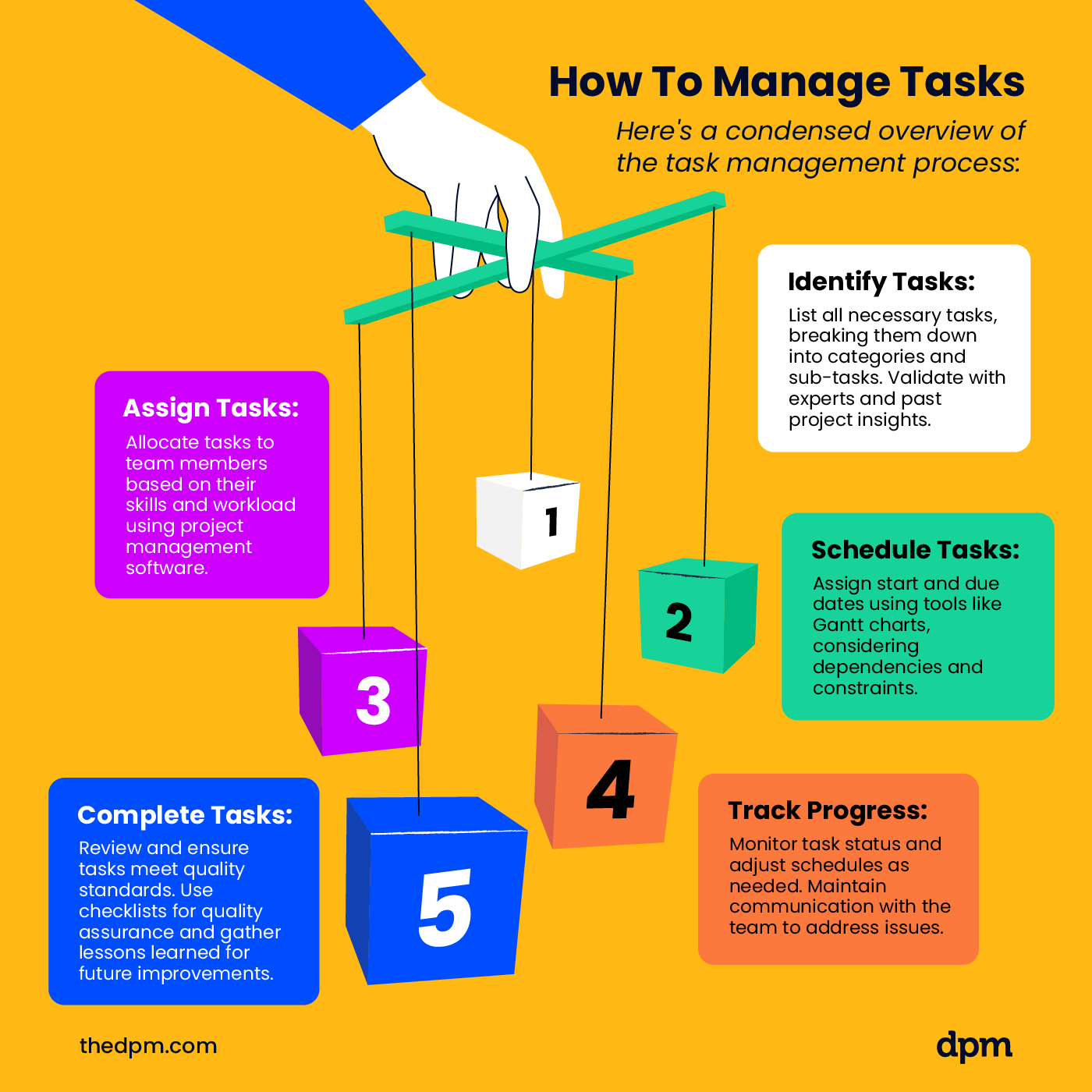
Step 1: Identify Tasks
The first step in task management is to identify the set of tasks that need to be completed to achieve project goals.
To generate this list, brainstorm what steps you would need to take to execute against project goals and organize those tasks into categories. Consult the project plan, statement of work, project charter , and other foundational project documents to help you.
For example, if you’re building a website, you would probably include steps for design, development, and QA. You can categorize tasks based on priority, complexity, or the team or individual responsible for completing them.
Validate the task list with subject matter experts and other project team members and compare against prior projects that you or your organization has completed to be sure you don’t miss anything.
Once you have a list of tasks, you can further break them down into sub-tasks to make them more manageable. This will help you to identify any dependencies between tasks and ensure that you have a clear understanding of the work that must be accomplished.
Step 2: Schedule Tasks
Scheduling involves determining the start and due dates for each task and creating a timeline for the project. To do this, you can use a project management tool that allows you to create a Gantt chart or provides a timeline view.
When you are scheduling and prioritizing tasks, consider any task dependencies or recurring tasks. For example, if Task A needs to be completed before Task B can start, you need to ensure that Task A is scheduled before Task B. You also need to consider any constraints, such as internal or external deadlines, resource availability , or budget limitations.
Step 3: Assign Tasks
Effectively managing resources and assigning the project tasks to team members involves understanding each assignee’s skills and abilities and allocating tasks based on team workload and availability.
You can use a project management tool to assign tasks and track their progress. This will make it more interactive and help you to ensure that each team member knows what they need to do and when they need to do it. It will also help flag any potential bottlenecks or issues that may arise during the project.
Step 4: Track Progress
This involves monitoring the status of each task and making any necessary adjustments to the schedule. Task management software can help streamline how you monitor and report progress.
Effective task tracking requires regular communication with your team members. Building trusted relationships with your team gives you insights into any issues or challenges they may be facing when it comes to their project tasks. You can use this knowledge to help remove any blockers they may be facing and ensure tasks are accomplished more efficiently.
Step 5: Complete Tasks
The final step in task management is to ensure that each task is completed successfully. This involves reviewing the work to ensure that it meets the required quality standards and approving the task for completion.
To do this, you can use a checklist or a quality assurance process to ensure that each task meets the project requirements.
At the end of the project, don’t skip the opportunity to collect lessons learned . You can implement these findings to improve your task management process on future projects.
Task Management Best Practices
Best practices for task management include:
- Don’t work in a vacuum! Consult subject matter experts, your project sponsor, and other project managers to validate the activities that you’ve identified, what the work entails, their duration, and how you’ve allocated workload across the team. The better your planning, the smoother things will go in execution.
- Verify that completion of the tasks you’ve identified will help further your project objectives . If a task doesn’t help you do that, be wary of adding it to your project plan, as it may be a sign of scope creep.
- Schedule tasks realistically based on project constraints , like budget, timeline, and resource availability. If your stakeholders want a task completed by a certain date, but there’s just no way, don’t create a schedule that promises delivery by that deadline. Instead, meet with the team to formulate a workaround—whether that’s adjusting the deadline, adding resources, or reducing scope.
- Align team member motivations, capabilities, and availability with assigned tasks , where possible. This reduces the risk that you’ll fail to meet deadlines and/or quality thresholds.
- Document and communicate progress . Make sure you keep your stakeholders apprised of project progress and potential issues along the way, so you can course correct, as needed.
Common Pitfalls Of Task Management
While task management can lead to success, there are also common pitfalls that you should try to avoid:
- Micromanagement , which can lead to decreased motivation among team members. Instead, give team members the information they need to complete tasks but don’t be overly prescriptive about how they execute the work. Set up regular check-ins that you both agree upon at task outset to monitor interim progress
- Failure to prioritize tasks , which can result in missed deadlines
- Failure to provide sufficient detail when assigning tasks, which can lead to confusion and mistakes
- Overloading team members with too many tasks , which can result in burnout and decreased productivity. Instead, consider resource availability and workload when assigning tasks
- Failure to track progress , which can lead to missed deadlines and scope creep.
Benefits of Task Management Software
Task management software is an essential tool for large and small businesses, teams, or individuals that are looking to organize their tasks and projects efficiently. Benefits of task management systems include:
- Easier schedule management with calendar views
- Intuitive designs and templates that align with agile methodologies and sprint schedules
- User-friendly drag-and-drop functionality to reprioritize tasks on the fly
- Customizable task management features based on organizational needs and desired pricing (whether paid plans or free plans)
- Ability to adjust user permissions
- Integration with customer relationship management (CRM) systems.
Here’s a list of the 15 best task management software tools available on the market right now.
- 1. monday.com — Best for visual project planning
- 2. Confluence — Best for team knowledge sharing and collaboration
- 3. ClickUp — Best free task management software for teams
- 4. Connecteam — Best for mobile usage and non-tech savvy employees
- 5. Productive — Best for agency task management
- 6. Quickbase — Best for customizability
- 7. Bonsai Agency Software — Best for integrated task management, time tracking, and invoicing
- 8. Zoho Projects — Best for resource management
- 9. Miro — Best for visual collaboration
- 10. Nifty — Best for milestone tracking
Different Types Of Task Management Tools
Task management tools can help you stay organized when it comes to work management, increase productivity, and foster teamwork. Examples include:
- To do lists. To do lists are an essential tool for managing tasks and keeping yourself organized. Ranging from sophisticated mobile apps like Todoist to analog lists, there are a variety of ways to keep track of tasks, master your workload, and improve efficiency.
- Kanban boards. Kanban boards are a type of task management tool that provides teams with a visual system to manage projects, workflows, and communication. They consist of columns representing different stages of a team’s workflow and cards representing individual tasks. As cards move through the workflow, teams use the board to spot inefficiencies in task progress, limit work in progress, and enhance collaboration.
- Project management software. Project management software (which is slightly different from task management software ) helps plan, organize, and manage projects. Tools typically include features such as task lists, calendars, and project timelines. Some popular project management software includes Asana , Wrike , monday.com , Clickup , and Trello .
- Task management software. Task management solutions help manage individual tasks and to-do lists. It typically includes features such as task lists, notifications, reminders, and progress tracking. Some popular task management apps include Todoist, Wunderlist, and Any.do, which are available for iOS and Android devices.
- Collaboration tools. Collaboration tools are designed to help teams work together more effectively. These tools typically include features such as task lists, project timelines, and communication tools , and are particularly useful for geographically dispersed or remote teams. Project managers can use Trello , Asana, Slack, and other tools for collaboration.
- Time tracking software and integrations. Time tracking software tracks how much time you spend on different tasks, and is useful for individuals or teams who need to invoice clients based on hours logged or automate their tracking of project expenses. It can also help you identify areas where you may be spending too much time (read: budget) and make adjustments to your workflow.
What’s Next?
Looking for more task management tips and best practices? Sign up for DPM membership and join the conversation in Slack with 100s of other digital project managers.
Asana Status Updates: How To Effectively Keep Your Team Updated
How To Help Team Members With Burnout: 6 Ways

How To Leverage Neuroleadership For Effective Project Management
- Contact sales
- Start free trial
The Ultimate Guide to…
Task Management
Brought to you by projectmanager, the online task management tool used to plan over 2 million projects..
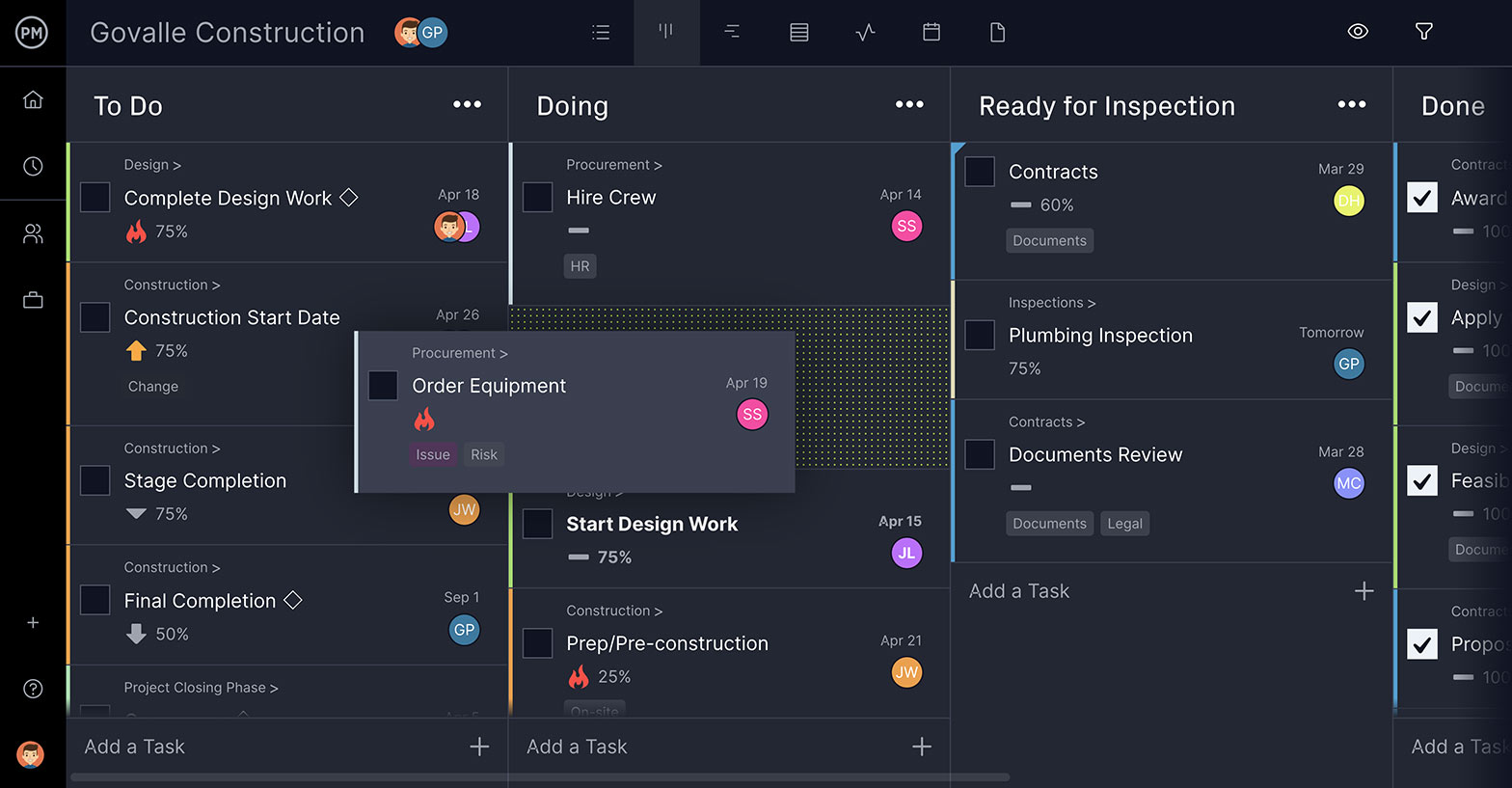
What Is Task Management?
- Why Manage Tasks?
Common Task Management Tools
What is task management software, benefits of task management software, how to manage tasks in projectmanager, how to manage your team’s tasks.
- What You See On a Task Management System
- How To Track Task Progress
How Often Should You Update Your To-Do List?
Should you share task lists, how to save time with task management tools, next steps for task management.
Projects are made up of tasks, and knowing how to manage your tasks and team members is the secret to getting your projects completed on time. At its simplest, task management is having a to-do list, but you’ll soon find that to-do lists aren’t going to cut it for managing project workloads.
Task management is a process where a project manager identifies, monitors and progresses the work that needs to be done during the day. In terms of project management, task management is how the workflow is efficiently organized. It’s task-oriented, detailed and part of the larger scheduling of a project.
Tasks come in all shapes and sizes, and so should task management software. ProjectManager is online project management software that helps teams manage their tasks in real time. Assign and prioritize tasks, set up recurring tasks and give teams a collaborative platform to share files and comments. More than a mere to-do list, our tool also helps track your tasks in real time to keep you on track. Get started for free today.
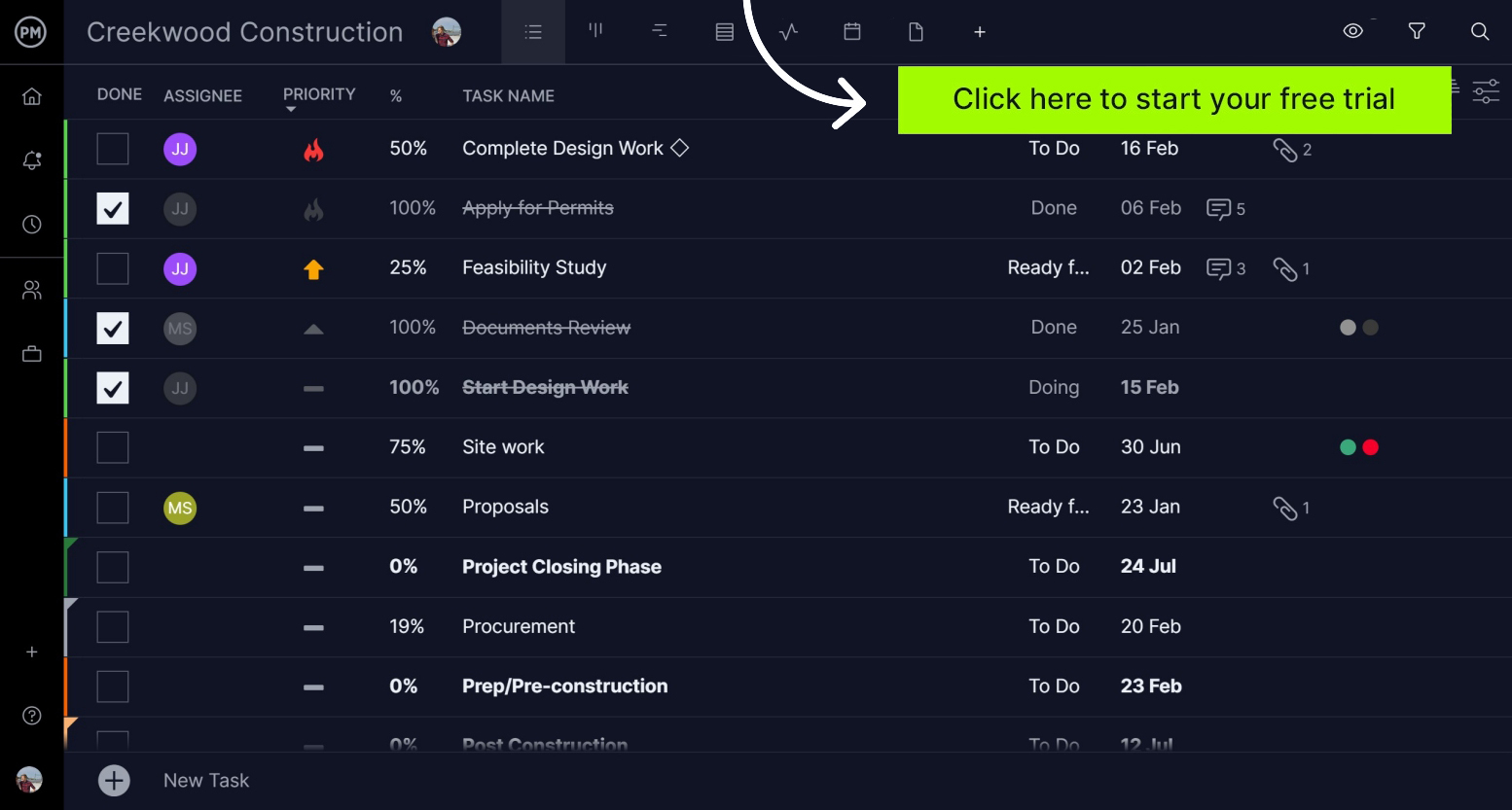
A task, just like a project, has a life cycle. It starts when the task is ready, then it’s assigned, started, finished and verified. It can also be terminated, expired, paused or failed. Some tasks can be dependent on others to start or finish. The process of monitoring them is known as task tracking and it’s an important aspect of project management.
Task management is a complicated discipline, one that requires great attention to detail, flexibility and the right project management tools.
Why Should You Use Task Management Tools?
You can’t be efficient if all you do is react to whoever shouts the loudest at work. You can’t be efficient purely by answering the next email in your inbox. And data from the Pew Research Center points to another reason that you might not be as good at managing your tasks as you think: 70% of Facebook users spend time on the app every day.
You have to manage your tasks as a group because what comes in next might not be the most important. You have to manage your time to spend the right amount of time working on the priority tasks.
To keep things organized you’ll need a task management tool to help you prioritize tasks, track progress and collaborate with your team. Our free Related: task tracking template is a great place to start monitoring your project tasks.
Task management tools let you stay on top of all your work and help your team hit their deadlines too. The benefits of task management are:
- You can see everything you are working on at once
- You know what your priorities are
- You know how much time you’ve got to do those tasks
- You can group tasks together to work on similar things at the same time
Some project management tools also offer resource management, time tracking, and team collaboration features so that you can manage your projects.
Above all, you can keep a balanced workload so that you can adjust or delegate tasks and deadlines—preventing you from being overworked.
There are lots of project management tools for managing your tasks. We’ll outline a few of the more common tools below.
To-Do Lists
At the simplest, you’ve got a notebook and pen and you can write down your to-do list. The downside of this simple approach is that it’s hard to move tasks around to group them and prioritize them. Today most task management apps come with a to-do list feature that helps you better track, prioritize and assign tasks.
Online Task Lists
The online task list is a step up from a to-do list. Since it’s online, it can be accessed from anywhere, and it can be updated and edited easily.
ProjectManager’s online task list lets you have complete control over your tasks. Add due dates, priority levels, attachments, notes and even tags for easy sorting. Plus, you can set recurring tasks so you don’t have to keep adding them to the project. If you’re working on a team, you can assign tasks to other team members to help carry the workload.

Online Kanban Boards
If task lists just don’t do it for you, try using kanban boards to manage tasks. Kanban boards are a popular project management tool that provides a visual means to manage your project tasks. Tasks are created using kanban cards, which are then placed in relevant columns.
Kanban board columns are typically labeled as “to do, doing, done,” but with ProjectManager you can customize your columns to say whatever you want. Plus, just like with the task list feature, you can add files, comments, priority levels and more to your tasks. The user-friendly interface allows you to quickly track progress levels for tasks, and where a bottleneck or overdue task might be lurking.

Task management software streamlines the process of managing tasks. It gives project managers more control over project tasks and teams the means to work better together to complete those tasks.
Comprehensive task management software , like ProjectManager, lets you use all of the most common task management tools in one software. Task management is more than just making a to-do list and crossing out those tasks once they’re complete. It’s controlling your work, prioritizing tasks, collaborating with team members and tracking progress.
Watch the video below to learn more about task management, and how a well-organized task list can set you up for success.
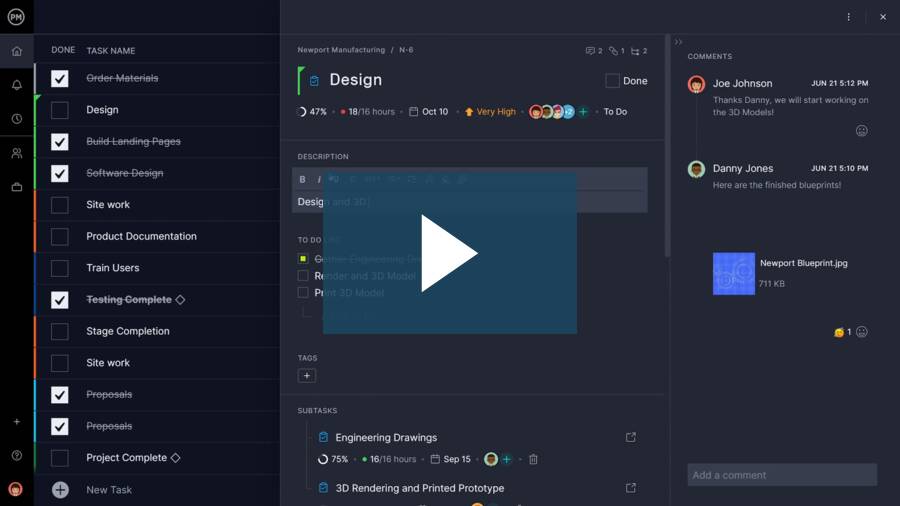
Powerful task management software can offer a path for your teams to work more productively. A task management tool that is integrated with other project management features is even better and can help you better manage tasks and projects.
Here are some key benefits to look out for when choosing the best task management software to manage your work.
- Track time spent on work
- Collaborate with teams
- Organize, prioritize and assign tasks
- Monitor progress in real-time
- Update status of tasks online
- Attach notes, files, links and make comments to tasks
- Share tasks with the team
- Create personal to-do lists within tasks
Must-Have Task Management Software Features
Prioritize Work & Set Recurring Tasks
More than a to-do list, you need project management software equipped with a task list where you can assign tasks, track progress, set priorities, attach files, share comments and list due dates. Set recurring tasks for repeated work to save time. You want the ability to create your own private task lists and migrate them to Gantt charts too, so you can organize your work.

Visualize & Customize Workflow
Kanban boards visualize workflow and should be easy to use with drag and drop cards. Your kanban board columns need to be customizable so you can align the tool to your project’s production cycle. They can be great to organize tasks, collect product backlog items and plan sprints.
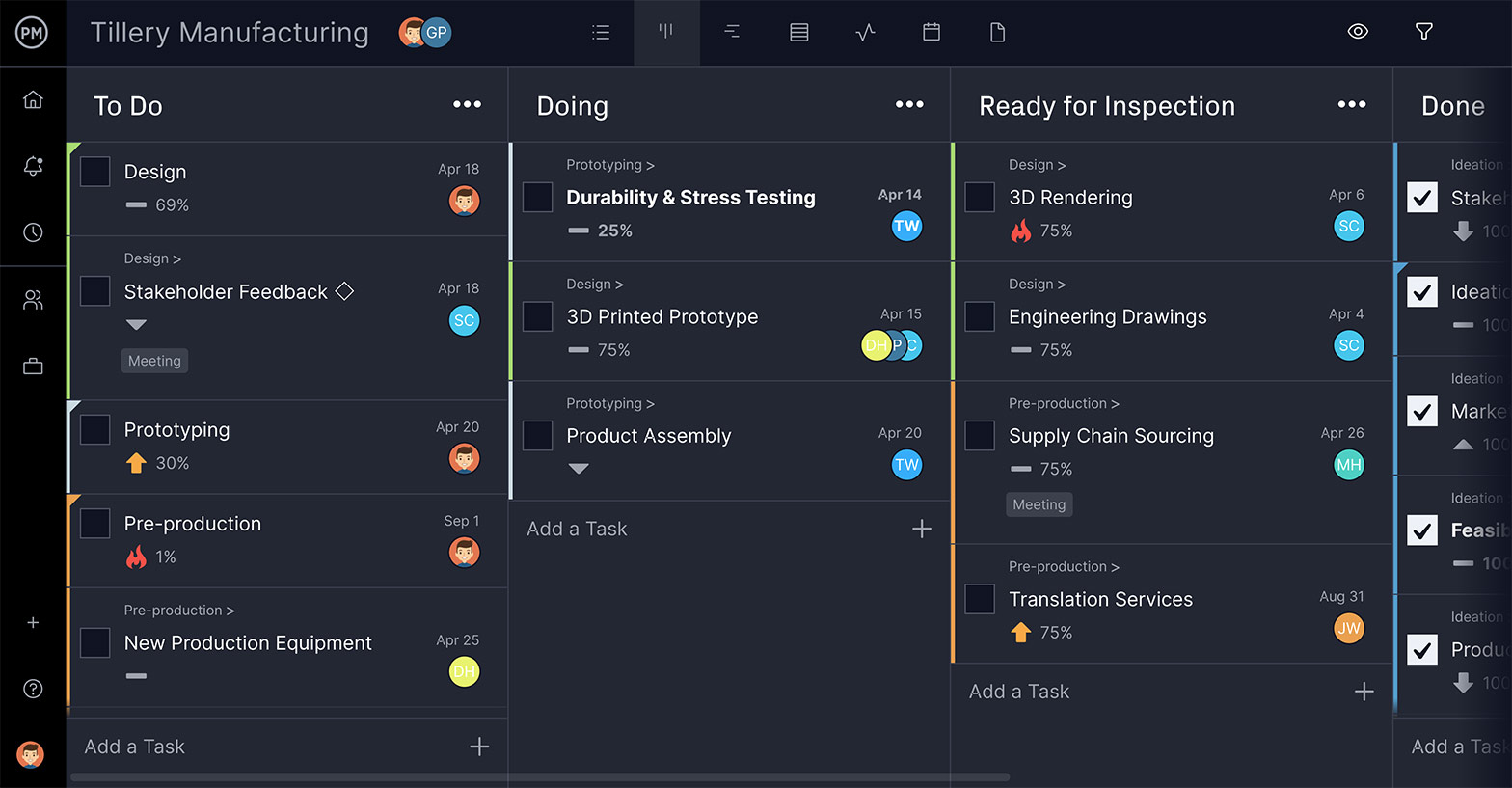
Stay Updated on All Changes
Staying updated with everyone’s work facilitates team collaboration and gives project managers real-time data to make better decisions. Changes to tasks can trigger email alerts to keep everyone on the same page. In-app notification is even better.
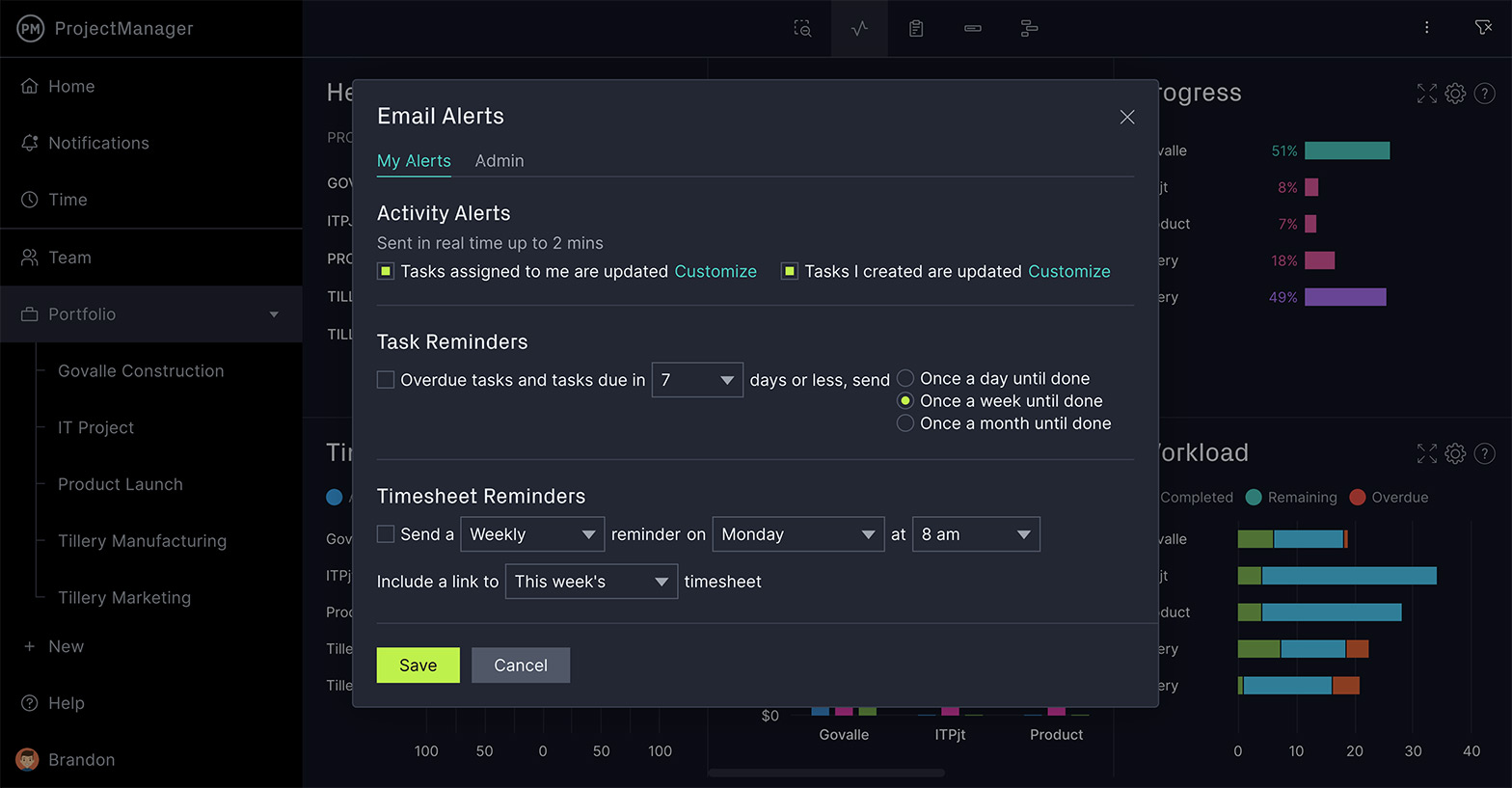
Work Better Together
Give your team a collaborative project management platform and they’ll be more productive. Online task management software connects teams anywhere and at any time, to let them comment on their tasks and attach relevant files to foster teamwork.

Get Real-Time Data on Task Progress
To stay on schedule you need to keep an accurate time tracking record of your team’s logged hours on tasks. There are also the costs associated with resources, which must be tracked to stay on budget. An online task management tool can monitor progress and track performance.

Find Tasks Quickly & Easily
Projects have many tasks and you want to be able to find the one you need when you need it. That’s where tags come in. By tagging tasks by priority, department or deliverable, you can quickly filter your work and see just what you want when you want it.
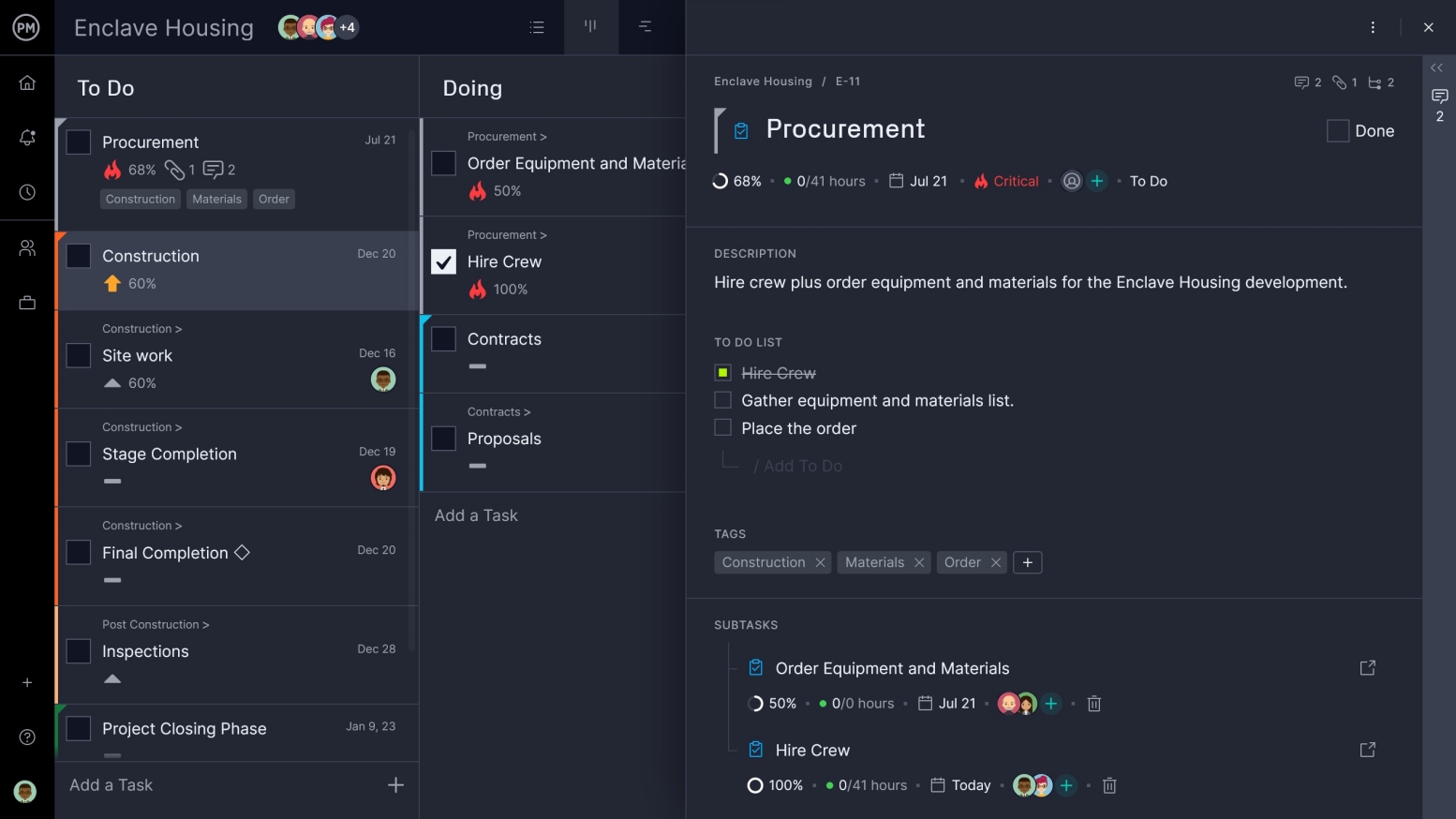
ProjectManager gives you all the task management tools you need to collect, assign and track tasks through every phase of their life cycle.
Here’s a step-by-step list of how to manage your tasks in ProjectManager. Sign up for a free trial and follow along to take control of your project tasks.
1. Import Task List or Start a New One
Tasks are the small jobs that lead to the final deliverable. You break down the larger project into these more manageable tasks, which is called a task list.
In ProjectManager, you can easily import your task list from any spreadsheet or even from another project management software, once it’s been exported. Or you can open a new project and start your task list in the software.
ProjectManager allows you to visualize your task list using multiple project views such as Gantt charts, kanban boards, project calendars or the task list view.
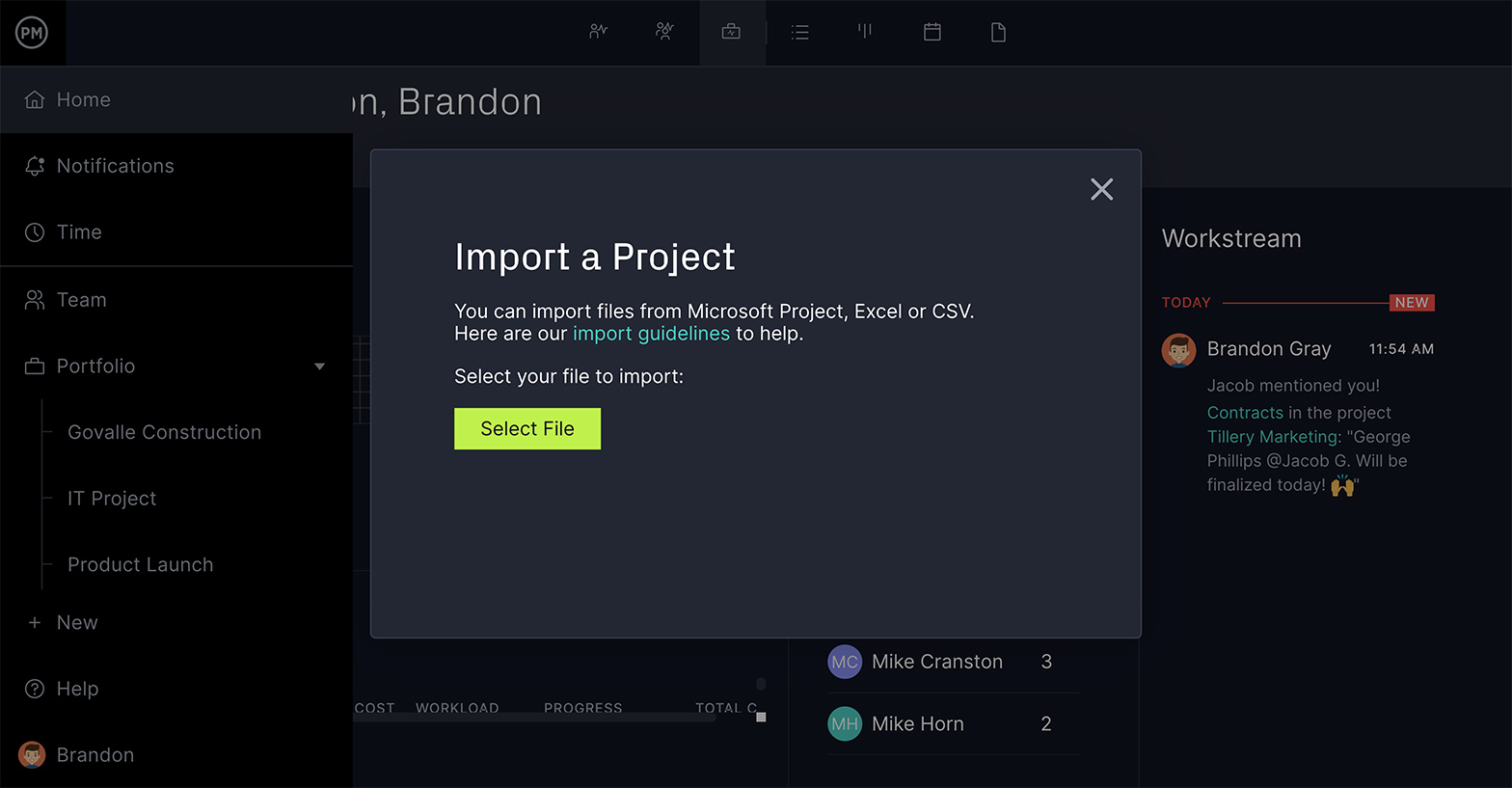
2. Prioritize Tasks
Tasks can be overwhelming unless you first determine what must be done, what’s important and what can be ignored if there’s no time. That’s called prioritization.
ProjectManager has a pulldown menu that can indicate priority. There are preset priorities with symbols and color codes. Now you can filter your task list to see what to work on next.
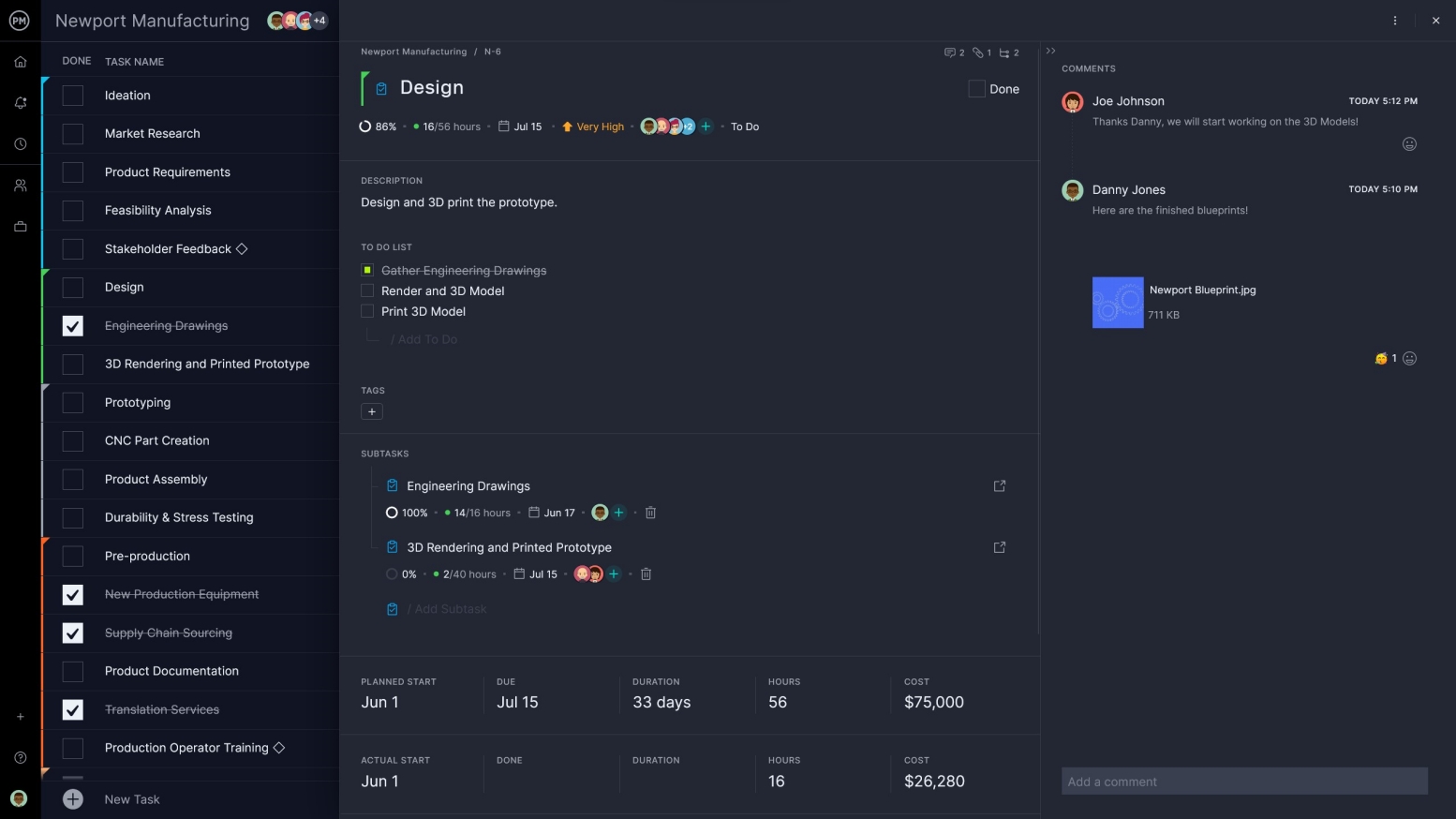
3. Add Task Descriptions
Tasks should come with directions. Teams shouldn’t be micromanaged, but there is usually project management documentation that clarifies expectations. That frees up both the manager and the team member.
Our project management software has unlimited file storage, so managers and team members alike can attach as many documents and images that they need to the task. Team members can even manage their own tasks by adding to-do lists or comments.

4. Assign Work
No task gets done unless there’s someone assigned to it. Assigning work is what triggers that task’s execution. No amount of direction or organization is going to overcome a lack of accountability.
ProjectManager’s task management tools make assigning tasks easy. Once you’ve invited the team into the project, they’re all collected in the dropdown menu on the task. Simply select one or more team members and they’ll be alerted by email.

5. Switch to Kanban View
Not all team members are going to work the same way. Managers and stakeholders tend to respond to the timeline view of a Gantt chart. Team members, however, want a project view that helps them track tasks and manage their work. Kanban boards are a great task management tool to visualize production cycles and automate workflows .
ProjectManager has a kanban board view that’s fully customizable. Team members can organize their tasks into columns, such as to do, doing and done. Then they can just drag and drop their task card to the appropriate kanban board column. This helps them stay focused on what’s high priority, while providing transparency into what everyone is working on.

6. Set Up Filters
On big projects, tasks are going to need more identifiers than just priority levels, or else they’ll fall through the cracks. Plus project managers will want their team to update their statuses with notes and progress levels.
With ProjectManager’s task tracking features, team members can indicate their status on a progress bar, noting how much work they’ve done. Managers can filter by progress to see what work has been started. You can set custom tags for better categorization, too.
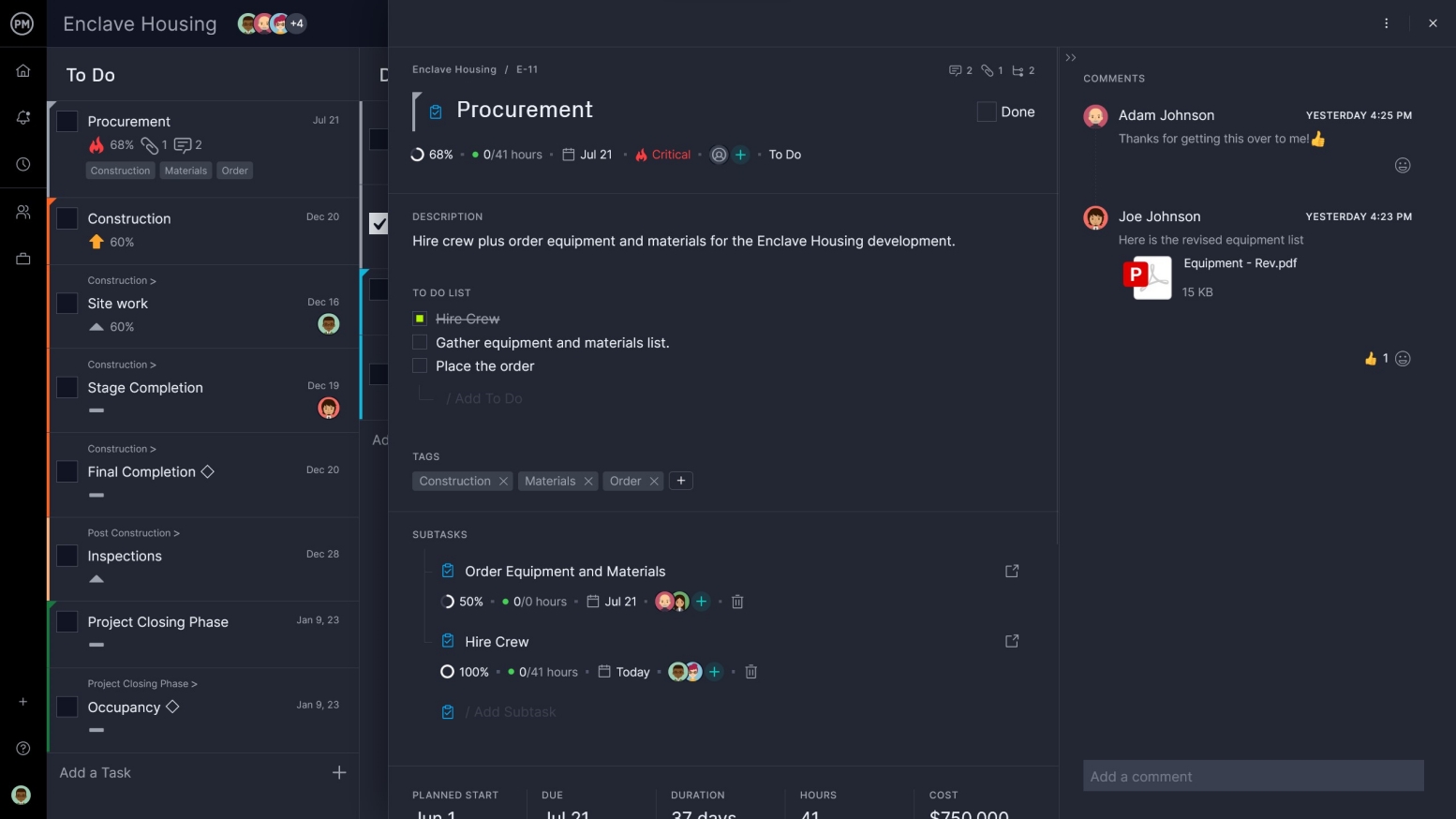
7. Stay Productive with Collaboration Features & Email Alerts
Team collaboration is what makes projects more productive. Getting team members to work better together leads to greater efficiencies and quality deliverables. Being able to give teams collaborative tools is essential to any successful task management.
ProjectManager’s task management tools facilitate collaboration at the task level by giving teams a project management platform to communicate. When a comment is added to the task, an email notifies the other person. If that person isn’t assigned to the task, you can still bring them into the conversation by tagging them in the task list, kanban board, Gantt chart or project calendar view. While it can be difficult to search out these dialogues on email, they’re all tethered to your task and easy to find on ProjectManager.

8. Track with Dashboard
Managing tasks means tracking progress. If your tasks aren’t performing as planned, then your project is in trouble. A task tracking dashboard collects project metrics to give you a high-level view of the project.
ProjectManager has a real-time project management dashboard, so the data collected isn’t from yesterday, but as current as the most recent status update. It then takes all that information and crunches the numbers, displaying the results in user-friendly graphs and charts that can be shared with stakeholders.

9. Get Detailed Reports
Dashboards are good for broad strokes, but managing tasks means getting into the weeds sometimes.
ProjectManager has easy reporting features that can be filtered to show just the data you want. Get reports on tasks, seeing due dates, milestones summary and more. There are also project management reports on variance, workload, availability and others.

ProjectManager gives you much greater flexibility than paper to-do lists and task management apps, and it’s not only about making sure everyone has access to the ‘master’ list of tasks. You can:
- Use kanban boards, Gantt charts, task lists and project calendars.
- Turn task lists into projects
- Export and import lists from Excel or MSP
- Define custom kanban board views
- Filter lists by day/week/month
- Drill down into the details of a task from the task list
- Manage dozens (and even hundreds) of tasks from multiple projects easily with only a few clicks.
If you need a task management software that lets you manage tasks in multiple ways, and roll those tasks up into full-blown projects with resource management, task tracking and reporting tools, then sign up for a free trial of ProjectManager .
One of the big challenges for project managers is making sure that tasks are done by others. When it’s your responsibility, you know that you will get around to it, but when you need to delegate tasks—let’s face it, they probably need a little chase every now and then, even if it is an action that has been recorded in the minutes of a meeting.
When other people take an action in a meeting, make a note of it and add it to your task management app. Assign it to the right person and it will show up in their personal to-do list. Then they won’t forget!
With a project management software like ProjectManager, you’ll be able to monitor progress and see how your team members are doing. Filter the project’s task list by resource to see what work everyone has got on: this gives you an at-a-glance view of the workload for each person. You can then remind them from time to time about what they agreed to do, making sure it is completed before the deadline.
The cool thing here is that it means your simple to-do list is linked to resource management reporting. You can pull up details of who has too much to do and who has some capacity to take on more work, using the information in your task list, Gantt chart or kanban board. It saves a lot of time and duplication of effort.
ProjectManager lets you see your team’s workload at a glance with our resource management tools. Our colorful resource chart indicates if any team member is over or under allocated, and then lets you reassign tasks with just a few clicks to balance the workload.

How to Use a Task Management Software
The main things you’ll see in your task management tool are – obviously! – the tasks. Make the Tasks page of your project management tool the first place you go every day.
You’ll see the work you have assigned to you that day, their percent complete , and the upcoming tasks so you can check that the priorities align to what you feel you need to work on and make any changes to your task list as necessary.
Click any task and you will see the details about that piece of work. In ProjectManager you can go even further, sequencing tasks , sharing status updates, adding links, uploading files and audio messages to your task. It’s a great way of keeping everything to do with that activity in one place.
Tasks that are overdue will be highlighted automatically by the task management app. This is helpful to see what you should have completed by now but haven’t. You can either agree with your team that the due dates for completion needs to be changed or get cracking on making sure that work is finished off. It’s a very visual reminder of what needs to be done!
Pro Tip: Don’t let a long task list overwhelm you. Stay focused and avoid multitasking .
How To Use Task Tracking Features
On your task management tool you’ll see a column for ‘Progress’. This is an indication of how far through you are with the work. Anything that is greater than 0% means the task has started and when it gets to 100% the task life cycle will be considered complete.
In ProjectManager, your team members can update their tasks’ life cycle manually by expanding the task and updating the progress timeline. The task tracking data flows through to the timesheets and updates your project schedules to reflect how the team is getting on with the tasks allocated to them.
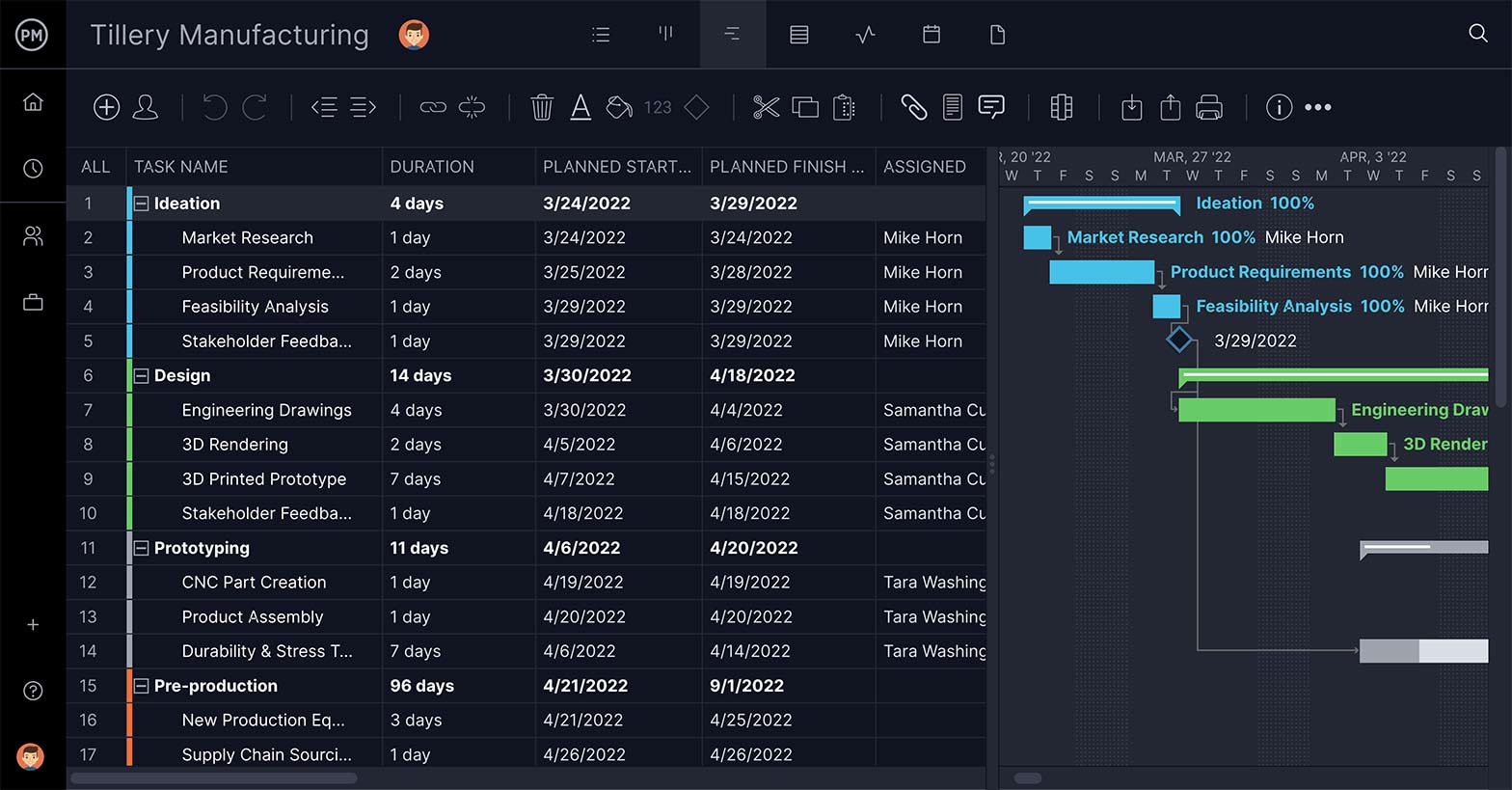
The easiest way to stay on top of your deadlines and tasks, and those of your team, is to update your to-do list once any individual item on it is completed. If that sounds like too much to remember, check your to-do list at the end of every day and mark the tasks you finished that day as complete. Mark anything that you started as ‘in progress’.
It will take you a minute or two and it means that tomorrow you’ll be starting work with a clear idea of what you are in the middle of and what should be your next priority.
Pro Tip: Book a 15 minute slot in your calendar at the end of every day to update your task list. If you are using timesheets (and you should be) then you can fill them in at the same time.
Yes! Task management works best when everyone can see what needs to be done. Online task management software makes this easy because your project task list can be shared with the team. Don’t worry about people getting confused about what they personally need to do: each task will be allocated to an individual so you get the whole picture for the project while still knowing what you are personally responsible for.
The exception to this rule is that you will probably want to keep your personal tasks separate from project tasks. Items like completing your expenses, that meeting with HR you’ve been meaning to organize or providing a reference for someone who has just left are tasks that you don’t need to share with your team.
Managing your tasks, and those of your team, takes up valuable time in the day. You may be wondering if it’s worth it. When time is money, are you really going to get a return from spending so much time on managing your workload?
The answer is easy: Yes! Not managing tasks is a recipe for missing deadlines and feeling overwhelmed. You’ll spend more time working out your priorities every week and dealing with the fact you’ve spent time on the less important tasks while ignoring a looming deadline. Ultimately that will cost you money, time and stress.
You can still cut down the amount of time it takes to manage your tasks by using the right project management tools. Here are 5 tips for saving time on task management activities.
- Tip #1: Use Your Project Calendar What gets scheduled gets done. Use your project calendar or project schedule to add deadlines for your tasks. Then you can forecast when you might be busy and when you’ve got extra capacity.
- Tip #2: Stick With One Method Forget sticky notes on your monitor, a list on your tablet, scribbled notes on a piece of paper… you need one to-do list. Using online task management software or an app is the best way because you’ll probably always have your phone or laptop with you. You can quickly open the task management app on your smartphone or tablet and record the task.
- Tip #3: Prioritize your tasks We mentioned this earlier but it’s worth mentioning again. Creating one central list of tasks for you and the project team is a big help, but then you need to think about the right way to tackle that long work management list. Prioritize your tasks. There are two ways to do this: what’s urgent and what’s important. Of course, a task can be urgent and important at the same time and the priority of tasks can change from day to day!
- Tip #4: Track your time Using timesheets for time tracking is a great way to manage tasks. Why? Because it helps you see exactly where you are spending your time during the day and this information lets you prioritize effectively.
- Tip #5: Delegate Finally, look at what you can delegate. You don’t have to do everything on the project yourself. Projects are a great development and learning opportunity for your team members too, so think about what you can delegate to others. Not only can you pat yourself on the back for helping develop their skills, it is also work off your to-do list that you don’t have to do!
If you haven’t already found the task management app that works for you, now is the time to test drive a few products and find one that suits your style.
ProjectManager is easy to use, quick to set up and lets you manage task lists with your team from wherever you are.
Start your free 30-day trial
Task management resources.
- How to Estimate Tasks and Dependencies
- 5 Ways to Improve Time Tracking
- 10 Tips for Better Task Management
- How to Link Tasks on a Project
- Project Management Trends (2022)
- How to Prioritize With Personal Kanban
- How to Schedule Different Project Tasks
- How You Can Manage Task Dependencies
- 5 Tips for Task Estimating
- What Is Batching and How Can I Use It to Get More Done?
- How to Make & Maintain a Project List
Deliver faster, collaborate better, innovate more effectively — without the high prices and months-long implementation and extensive training required by other products.
Filter by Keywords
11 Free Task List Templates in Excel & ClickUp
Praburam Srinivasan
Growth Marketing Manager
July 18, 2024
Start using ClickUp today
- Manage all your work in one place
- Collaborate with your team
- Use ClickUp for FREE—forever
If you often struggle to stay on top of work tasks , personal responsibilities, and the never-ending to-do lists life keeps throwing at you, don’t worry—you’re not alone. While excelling at work while maintaining a fulfilling personal life is a major puzzle for many professionals, it can be pieced together if you equip yourself with the right tools.
The humble task list is a simple yet remarkably useful tool to boost productivity and regain control of your personal and professional commitments. It provides a clear roadmap of what and when needs to be accomplished, helping you manage time wisely and prioritize tasks effectively. 📑
To be practical, a task list needs a well-structured format, but making one from scratch can be yet another responsibility.
Fortunately, there’s a wealth of outstanding blueprints available for free. In this article, we’ll introduce you to 11 of the finest task list templates to revolutionize how you manage your daily responsibilities.
What Is a Task List Template?
What makes a good task list template, 1. clickup daily task list template, 2. clickup calendar to do list template, 3. clickup work to do template, 4. clickup task management template, 5. clickup simple to-dos template, 6. clickup simple task management template, 7. clickup activity list template, 8. excel prioritized to do list template by vertex42, 9. excel task list template by teamgantt, 10. excel daily task tracker template, 11. google sheets task list template by goodocs, task list templates: overview, checkmate your tasks with the best task and to do list templates.
A task list template is a pre-designed framework for efficiently listing, prioritizing, organizing, and tracking tasks or activities. It comes in various forms, from simple to complex, and can be used for professional and personal purposes.
These templates typically include essential components such as task names, descriptions, due dates, and status indicators. Some may offer additional attributes like priority levels , task dependencies, and categories to further improve task management and prioritization.
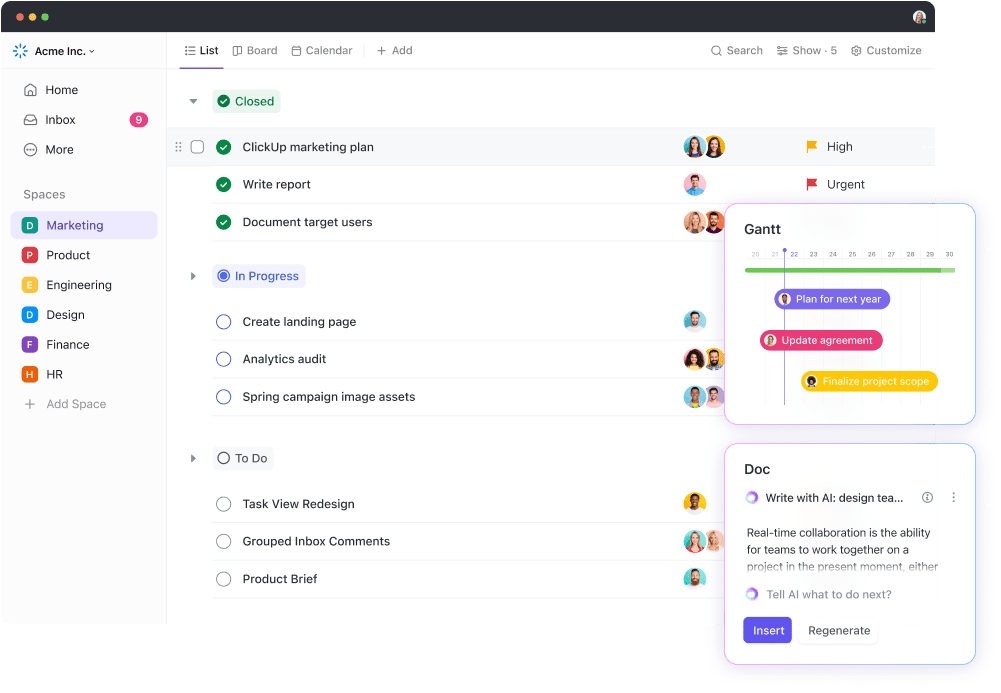
Task list templates provide a systematic approach to managing your daily schedule , coordinating complex projects, or organizing team assignments. They help you track responsibilities and ensure crucial tasks are completed on time, promoting accountability and transparency.
What makes them even more valuable is their flexibility —they can be tailored to fit your specific requirements, whether you’re managing a client project or throwing a birthday party. ⏳
When it comes to task organization, there is no one-size-fits-all solution. However, you should ensure that your task list template has the following qualities:
- Clarity : Task names and descriptions should be concise and unambiguous, ensuring that users can quickly understand what needs to be done
- Organization : The template provides a logical structure for listing tasks, often in a sequential or prioritized manner
- Flexibility : Users should be able to customize it to suit their specific personal or professional requirements
- Due date management : It allows for setting due dates or deadlines, helping users track time-sensitive responsibilities and prioritize work accordingly
- Status tracking : Good templates include status indicators or checkboxes that allow users to mark tasks as incomplete, in progress, or completed
- Reminders and notifications : To help users stay on top of upcoming tasks or overdue items
11 Free Task List Templates to Track Assignments in 2024
In this curated collection, we’ve handpicked the top 11 task and to-do list templates in Excel and ClickUp .
Each is expertly designed to address specific needs and elevate your task management experience. They’re also easy to use, customizable, and completely free. 🆓
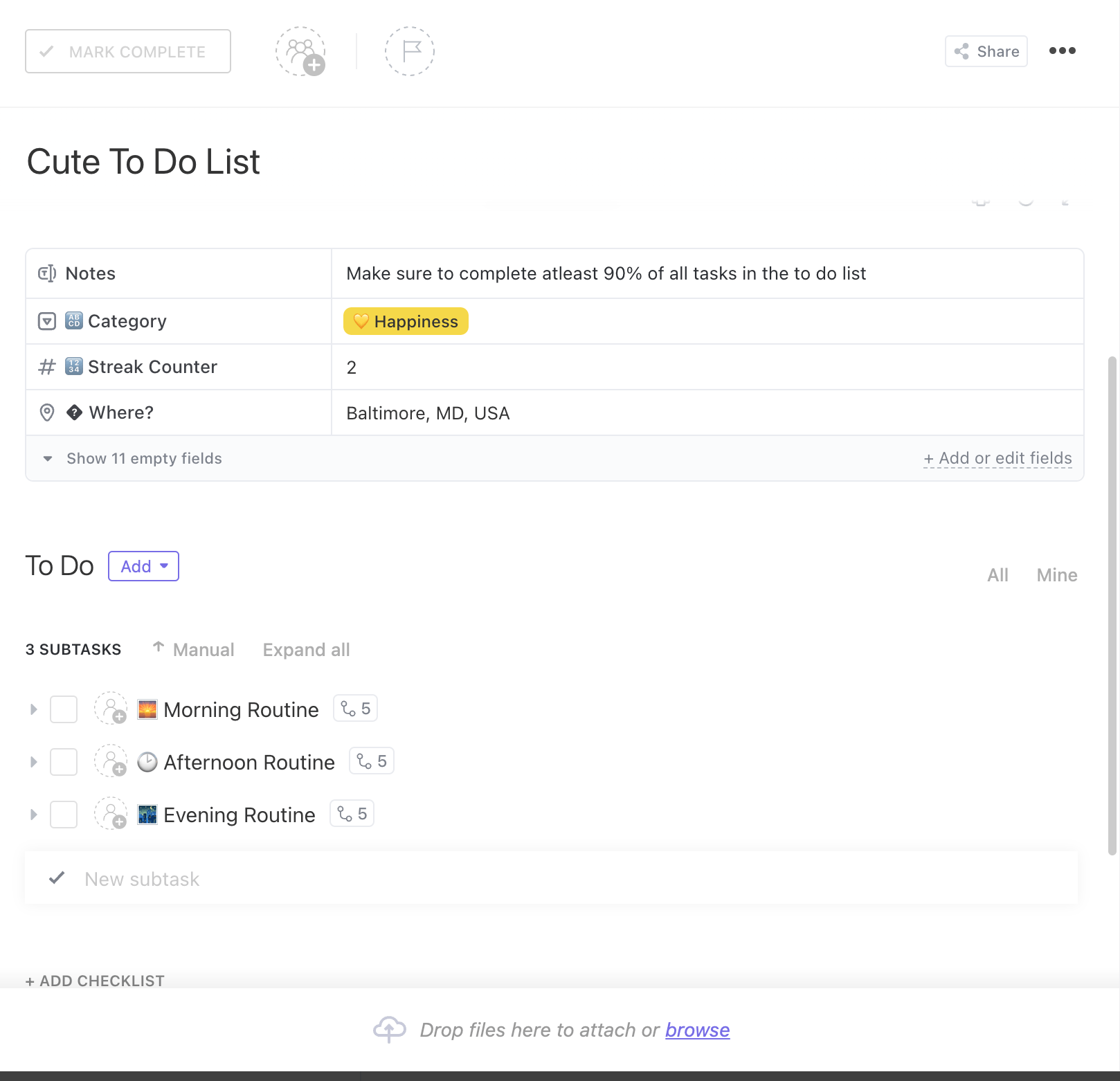
The ClickUp Daily Task List Template is your partner in organizing everyday tasks , from the most routine to critical. It empowers you to take charge of your day by setting goals, assigning deadlines, categorizing tasks, setting up reminders, and prioritizing work.
The best part? It’s highly customizable , allowing you to tailor it to your needs and preferences.
With this template, you have the power to take your task organization to the next level through Custom Fields. You can organize tasks according to particular categories such as type, location, or any other relevant criteria, which makes it simpler to visualize and arrange your workload.
Easily track and maintain streaks with customizable attributes for effective daily task management. ✅
Use the template’s List view for a detailed display of your to-do items, switch to the Kanban view to easily manage task statuses, or pick the Table view if you prefer a spreadsheet-like format. You can also integrate this template with your existing task management tools , ensuring it harmonizes effortlessly with your daily workflow.

If you’re looking to master your work hours, expectations, and goals with precision, the ClickUp Calendar To Do List Template has your back. It’s not just a calendar; it’s a powerful organizational tool offering a holistic view of your weekly, bi-weekly, or monthly duties.
Use it as a clear roadmap to plan and prioritize all your tasks based on your role and responsibilities or as your go-to weekly task list template for multiple projects. 🗓️
What makes this template extra convenient and functional are its custom views. Imagine having an entire week ahead filled with meetings. The Meeting Request view gives you a quick overview of all your upcoming appointments, the associated tasks, and their deadlines. This ensures you’re always well-prepared and firmly in control of your commitments.
Now, picture working in a team where tasks are assigned based on roles. The By Role view helps you sort tasks according to who’s responsible for them. It makes task delegation a breeze and promotes accountability by ensuring everyone knows what they need to do and when.
Lastly, there’s the Schedules view . It’s like a visual map of your day or week, laying out tasks chronologically. This helps you plan your time effectively by allocating slots for tasks, meetings, and even short breaks. It’s all about staying on top of things and making the most of your precious time.
You can also track task progress with Custom Statuses like Open and Complete and categorize tasks using Custom Fields such as Category, Resources, Productivity Level, and Role.
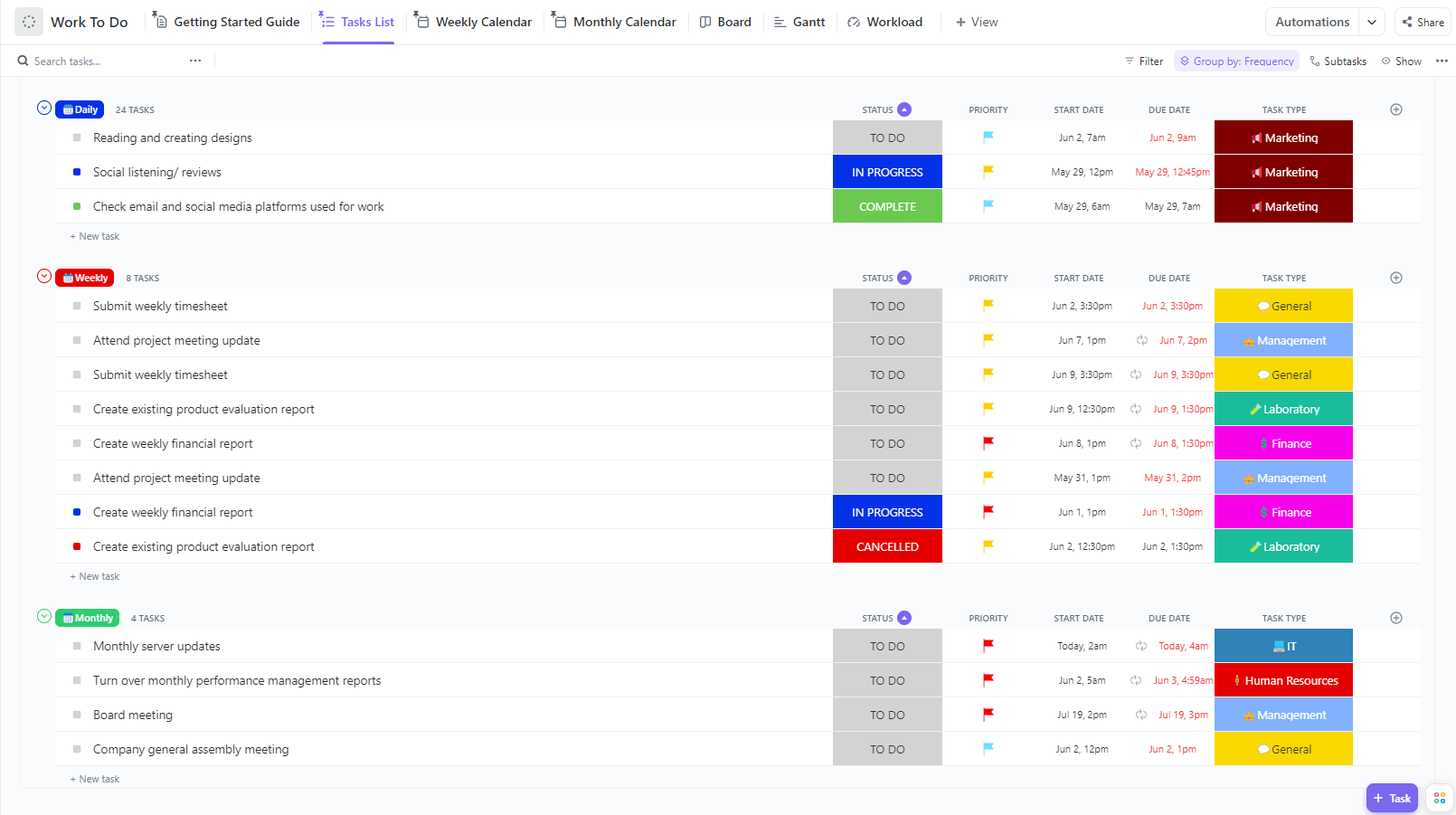
With the ClickUp Work To Do Template , you can effortlessly prioritize tasks by importance, effort, or urgency, ensuring you stay focused on what matters most. Organize projects into lists, complete with their related tasks, subtasks, and associated due dates, so you’re always on top of deadlines. Plus, you can visually track your progress through intuitive Kanban boards or Gantt charts.
This template offers three distinct views tailored to your needs:
- Weekly To Do List Calendar
- Monthly Calendar
In the Task List view, you’ll find a comprehensive list of activities organized by their completion status, be it daily, weekly, or monthly. You can track additional details on the right side of the template, such as task status, due dates, and priority. Plus, the Task Type field allows you to specify the department responsible, adding a touch of accountability to your task management. 💼
The Calendar views are where the magic happens. Use the simple drag-and-drop editor to schedule or reschedule tasks , creating a visual roadmap for your work.

The ClickUp Task Management Template is your ultimate solution for staying organized and efficiently tackling tasks, no matter the project’s goals. This template takes the information you enter and automatically groups it by priority, department, or task status. With pre-built Custom Fields , you’ll have a quick snapshot of task ownership and expected completion dates, ensuring transparency and clarity. 🌞
Your team can use the template’s List view to meticulously organize task details, such as ownership and deadlines, akin to an advanced to-do list . Project tasks are sorted into three main Lists — Action Items , Ideas, and Backlog—allowing you to find the information you need effortlessly.
Meanwhile, the Board view empowers you to plan and prioritize the most important tasks by arranging sticky notes on a Kanban board. The Box view offers insights into work distribution, aiding intelligent task assignment, while the Calendar view simplifies scheduling with a user-friendly drag-and-drop interface.
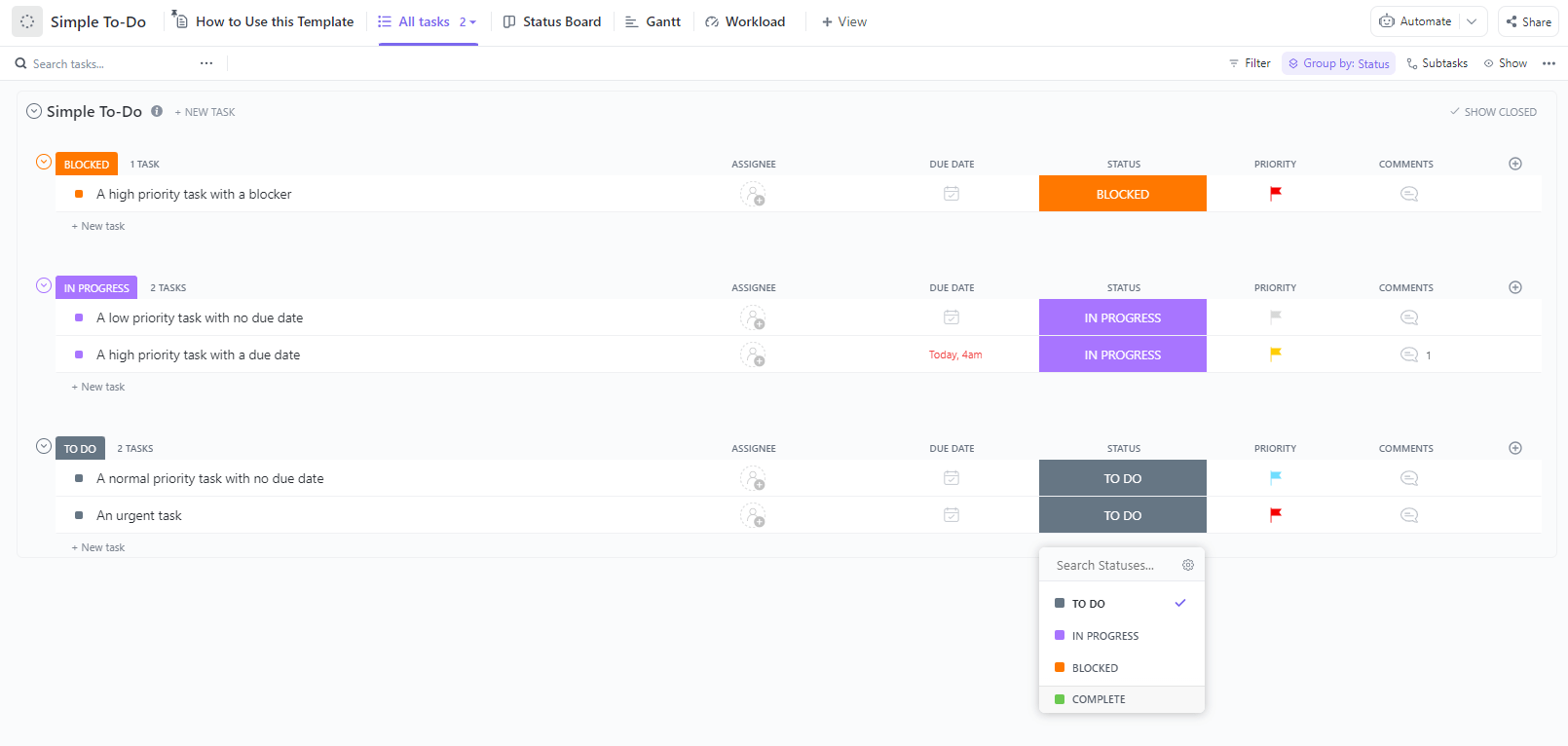
Introducing the ClickUp Simple To-Dos Template , where effectiveness meets simplicity. This template offers a straightforward approach to task management without unnecessary complications or distractions. 🎯
Start with the List view as your master task list, where columns display essential details like assignees, due dates, priority tags, and comments. The status column provides a dropdown menu with customizable categories, such as Blocked, Complete, In Progress, and To Do.
Want an overview of all your tasks? Turn to the All Tasks view.
Need to prioritize? The Prioritized Tasks view has you covered.
Make your tasks more informative by including subtasks, checklists, and attachments. Experiment with various views like Board and Gantt, and refine your task display using filters to find the best fit for your workflow.

Tired of struggling to remember your daily tasks and appointments? The ClickUp Simple Task Management Template is designed to simplify not only work-related activities but also everyday responsibilities like cleaning, vacuuming, or going to the gym.
The to-do list template includes a basic list format for visualizing personal or professional tasks categorized as To Do or Complete.
This task management template provides a clear structure for adding your daily tasks , complete with labels for due dates, priorities, and task statuses. It’s your key to structuring your day and staying on top of tasks, no matter their size or significance.
You’ll find a range of views, including List , Board, and Doc , allowing you to approach your tasks in a way that best suits your workflow. Its powerful customization options set this template apart—add fields, prioritize tasks, and easily set up reminders .
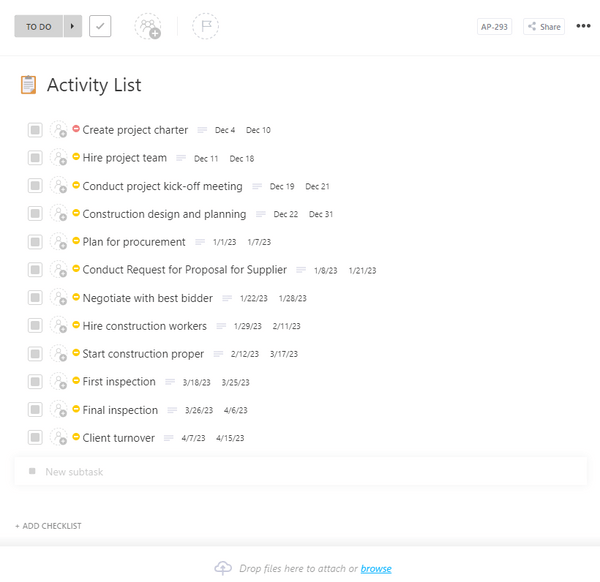
The ClickUp Activity List Template can transform the chaos of your to-dos into a well-organized and efficient system. It’s a versatile template that covers everything from creating to-do lists and checklists to managing project timelines and sprints. With this template, you can organize all your activities in one place, making it easy to prioritize and plan them with precision. 🙌
Use the template’s Custom Fields to:
- Specify project name
- Assign tasks to a project manager
- Track completion progress
What’s even more convenient is that this template structures activities and secondary tasks as subtasks , allowing you to provide in-depth details for each one, including dependencies between activities. It’s a comprehensive solution for effective activity management and project planning , simplifying complex tasks and ensuring your projects run smoothly.

Excel enthusiasts, here’s a handy tool for your task management needs: the Excel Prioritized To Do List Template by Vertex42. This template simplifies the collection, evaluation, and tracking of your day-to-day tasks. It features a printable , hand-fillable design with a dedicated space for your top three priorities. 🖨️
In the first column, list your tasks or projects. Use the subsequent columns to set due dates, update statuses, specify priorities, and add notes. You have the flexibility to prioritize tasks using various methods, like symbols, numbers, or formatting.
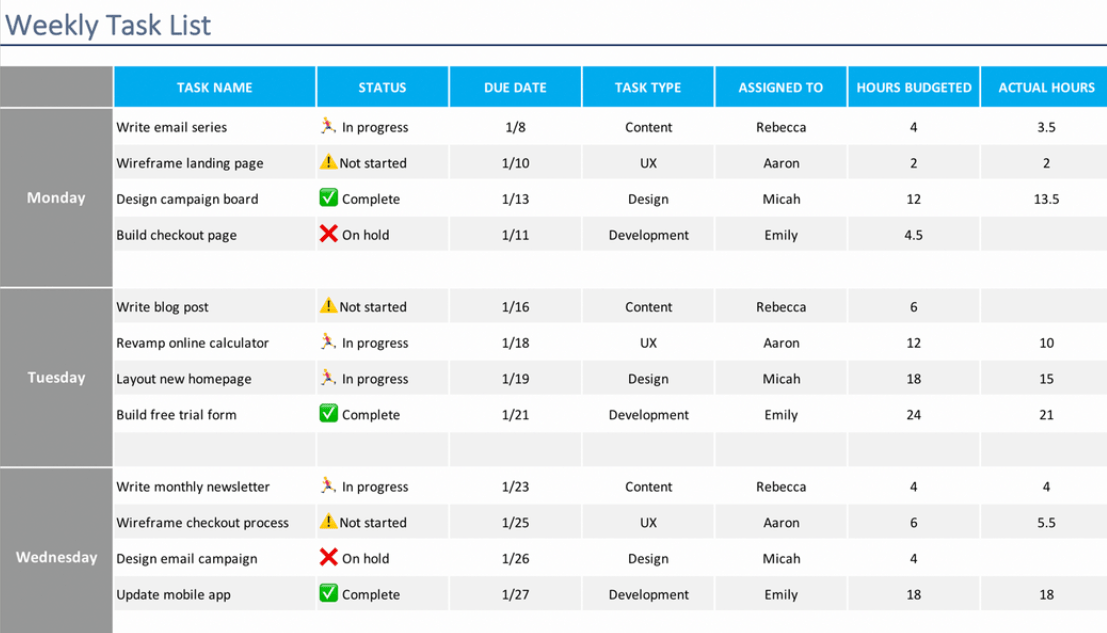
The Excel Task List Template by TeamGantt is your ticket to task management success. This template simplifies scheduling, assignment, and tracking of tasks for various projects, making it a valuable addition to your task list template Excel collection. It offers adaptability, whether you’re handling critical work tasks or personal projects.
The template simplifies task management by allowing you to create a comprehensive to-do list . You can easily add tasks, assign owners, set due dates, and track task status. Its clear status options make progress monitoring a visual breeze, and you can prioritize tasks effortlessly by assigning due dates.
You can track your progress on work assignments, ensuring you never miss a deadline or manage your household projects more efficiently, keeping costs in check and tasks on schedule.
The Excel Daily Task Tracker Template is a versatile tool for efficiently managing multiple tasks . Its user-friendly, visually attractive design incorporates built-in filtering controls , allowing you to sort and filter projects based on their due dates, priority, and status. Whether you prefer a digital or hard copy, this template suits both options.
With complete customization options , you have the freedom to adjust text, images, and other elements to suit your unique requirements. You can tap into a world of creativity with access to a diverse range of photos, graphics, fonts, and dynamic features like animations, transitions, and videos. 🎨
This template offers a straightforward and efficient solution for task tracking, helping you prevent oversights and boosting your productivity.

Ideal for tracking weekly tasks, the Google Sheets Task List Template presents an accessible and organized approach to task supervision.
This checklist template lets you manage your weekly tasks in a simple and visually shared workspace that can be accessed and coordinated seamlessly across different platforms. It’s specially designed to help you lay a robust foundation for your tasks while ensuring all crucial details are visualized and easily accessible.
With the Google Sheets Task List Template, you can encompass your tasks in a neatly planned sheet layout featuring essential task parameters such as task names, completion status, due dates, assigned roles, priority levels, and accompanying notes. 🗓️
You can manage your task flow in a glanceable format with color coding to highlight pending tasks, accomplished tasks, and tasks in progress. Its drag-and-drop feature allows you to reorganize tasks as per priorities, making it simpler to focus on urgent tasks first.
Here’s a brief overview of what you can expect from each template:
| ClickUp Daily Task List Template | Managing daily tasks and prioritizing them to achieve maximum productivity |
| ClickUp Calendar To Do List Template | Take full advantage of the calendar to manage work hours, expectations, and objectives |
| ClickUp Work To Do Template | Prioritizing tasks, organizing them into lists, and visualizing progress with ease |
| ClickUp Task Management Template | Customizing and streamlining task management with multiple views, including lists, boards, and calendar |
| ClickUp Simple To-Dos Template | Maintaining a clear structure for daily tasks, including due dates, priority, and status |
| ClickUp Simple Task Management Template | Easily with customizable statuses and fields, prioritization options, and various views |
| ClickUp Activity List Template | Organizing, prioritizing, and collaborating on various project activities in one centralized location |
| Excel Prioritizes To Do List Template by Vertex42 | Collecting, evaluating, and tracking tasks with flexibility, using a spreadsheet-style approach |
| Excel Task List Template by TeamGantt | Utilizing its user-friendly interface to list, prioritize, and track tasks while having the flexibility to customize task details and statuses |
| Excel Daily Task Tracker Template | Easily adding, assigning, and monitoring tasks, complete with due dates, priorities, and status updates |
If tasks were your soldiers, task list templates would be the strategies and tactics you apply to take control of them and lead them to victory. So, don’t just try to manage tasks—command them with the right template! 💂
From simple to-do lists to detailed project tracking tools, these 11 templates combine simplicity, flexibility, and effectiveness to match your specific needs. If you need more ready-made frameworks to streamline all kinds of professional and personal activities, we encourage you to check out ClickUp’s extensive library of templates and supercharge your productivity.
Questions? Comments? Visit our Help Center for support.
Receive the latest WriteClick Newsletter updates.
Thanks for subscribing to our blog!
Please enter a valid email
- Free training & 24-hour support
- Serious about security & privacy
- 99.99% uptime the last 12 months
WTO / Business / Tracking / Free Task List Templates for Employees (Excel | Word)
Free Task List Templates for Employees (Excel | Word)
Project managers and leaders must assign tasks to the right team members to ensure their teams are organised and productive. It is a comprehensive checklist that helps individuals or teams stay organised, track progress, and manage their workload effectively. It is a tool that outlines all of the tasks required for a project from start to finish.
By using a task list, project managers can identify, categorise, and assign tasks to employees or team members in a systematic way. Its contents vary depending on the nature of the project. It typically includes details such as the name of the tasks, descriptions, due dates, assigned individuals or teams, and status updates, provides a clear overview of the work that needs to be accomplished, and helps ensure that nothing is overlooked or forgotten.
This article highlights the significance of task lists in ensuring efficient project management and provides practical guidance on customising an Excel template to create a tailored list that meets specific project needs.
What is a Template for a Task List?
A template for a task list serves as a versatile document that enables efficient organisation, tracking, and management of project activities.
It provides a structured format with various categories of information essential for effective project management . These categories typically include activity descriptions, assigned employees, status updates, priorities, and deadlines. However, the template can be tailored to meet specific task specifications and project requirements by adding or removing relevant entries.
Using a template is useful as it provides a standardised format for organising and managing the activities of the project. This ensures that consistent information is recorded for each assignment. It also allows managers to formulate their own convenient system of listing activities, assigning duties to team members, setting deadlines, and tracking progress.
A popular tool for creating templates in Microsoft Excel. It is a convenient program because of its user-friendly interface, which makes it simple to use. You can easily navigate through its features and commands. This allows for easy and quick customization.
Also, it has features to simplify various uses of the template, such as calculating task completion times to track progress . It is also easily accessible and compatible with multiple devices. This allows easy collaboration with team members when utilising the template.
Free Templates
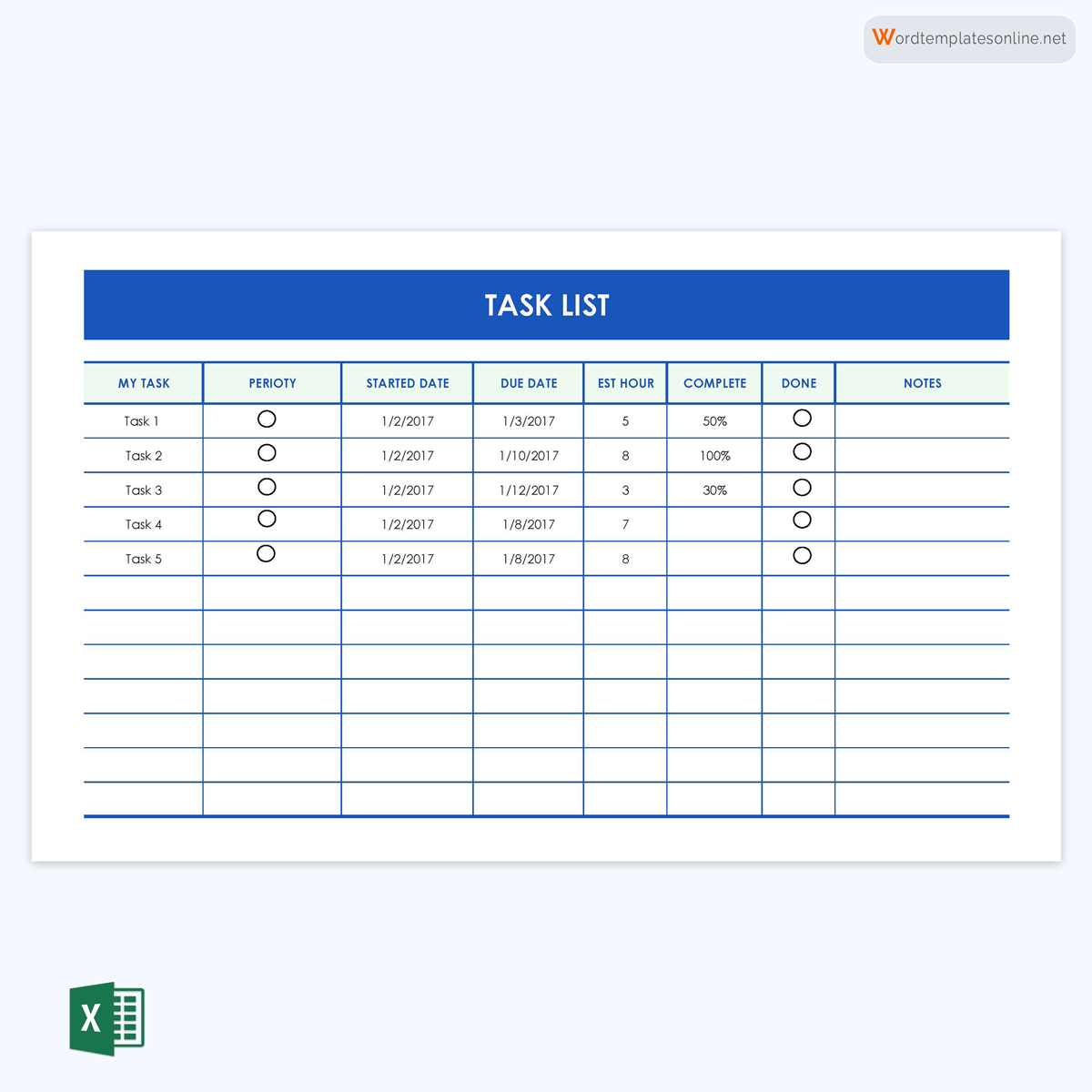
Benefits of Using a Task List
Project managers can benefit in many ways when using a task list to manage their teams. This is because they are an effective way to launch projects quickly and ensure activities are identified, prioritised, and assigned to the most suitable employees under each step.
Here are different ways team leaders can benefit from one:
Increase productivity and efficiency
With this list, employee responsibilities can be clearly defined, ensuring the team remains focused as everyone knows what is expected. This increases productivity. Also, duties can be delegated so that capable members or teams can work on different tasks simultaneously. This ensures goals and deadlines are met due to reduced downtime. This results in faster delivery and the optimization of time and resources, thus completing projects efficiently.
Prioritise tasks
Tasks can be listed in order of importance, priority, or urgency. Additionally, by displaying the dependencies between tasks in this order, the team is better able to prioritise its efforts and avoid bottlenecks.
Tracks progress and recurring tasks
The document lists the activity’s status, which can be either completed, ongoing, or pending. This information is needed to track the team’s progress over time. It can also be shared with team members, stakeholders, and clients to ensure they are updated on the project’s progress.
A list of repeating activities can be duplicated and reused for the corresponding period, whether daily, weekly, or monthly, using a premade template.
Allows delegation
Listing activities simplifies the delegation of work among the team members. You can identify the strengths of each member and assign them to duties they are suitable for. Additionally, you can more effectively and fairly distribute the workload and responsibilities among the employees to prevent overworking some of them at the expense of others.
Better time management
You can divide large tasks into smaller, manageable activities with a list. Listing activities allows you to manage them effectively and allocate realistic deadlines.
Reduced stress
Task lists offer a valuable solution to alleviate the mental burden of remembering every task. By providing a clear structure and a sense of control, they effectively reduce stress and create more mental space for focusing on the current task.
Improved communication
A task list informs team members, stakeholders, and clients about activities, the assigned employee, and the completion timeline . This promotes alignment and fosters collaboration among all stakeholders, ensuring that everyone shares a common understanding and can work together efficiently to successfully meet project deadlines.
Greater accountability
Task lists establish accountability by clearly assigning tasks to specific team members. Each individual knows their responsibilities and can track their progress against the tasks assigned to them.
How to Make a Task List for Your Team
Understanding how to create a functional and effective activity list for your project is important. This is because a well-prepared document is easy to use and eliminates the risk of any errors due to missed or forgotten tasks or steps.
Below is the detailed process for making such lists for a project:
Consider the scope of the project
It is important to consider the scope of the project , which is determined by its size and nature. Define the specific deliverables, the number of tasks involved, and the expected final product. This information will guide you in identifying the necessary activities that need to be completed. Subsequently, based on that, you can determine the appropriate format and layout for your document, ensuring its effectiveness and organisation.
Determine the priority of each task based on its importance, urgency, and dependencies. Identify critical tasks that need to be completed first or those that may impact the overall project timeline .
Determine the project’s timeline
Then, determine the timeline by identifying when different activities should be completed and the order in which they should be prioritised. Use this information to set realistic and achievable deadlines for each activity.
Divide the project into sections
The project should be divided into smaller, manageable tasks. Begin by identifying the significant milestones or phases and subsequently dividing them into more specific action items.
Assign responsibilities
Next, assign the activities to the appropriate employees. Assign tasks to specific team members or stakeholders responsible for their completion. Clearly communicate the assignments and ensure everyone understands their roles and responsibilities.
Organise and structure
Determine the most suitable format for your list. It could be a simple checklist, a spreadsheet , project management software, or any other tool that works best for you and your team.
Regularly review and update
Continuously review and update the list as the project progresses. Add new tasks, modify deadlines if needed, and ensure that completed tasks are checked off or marked as complete.
Communicate and collaborate
Share the list with the relevant team members and stakeholders. Encourage open communication and collaboration to address any questions, provide support, and ensure everyone is aligned.This infographic is about tips for using task list templates.
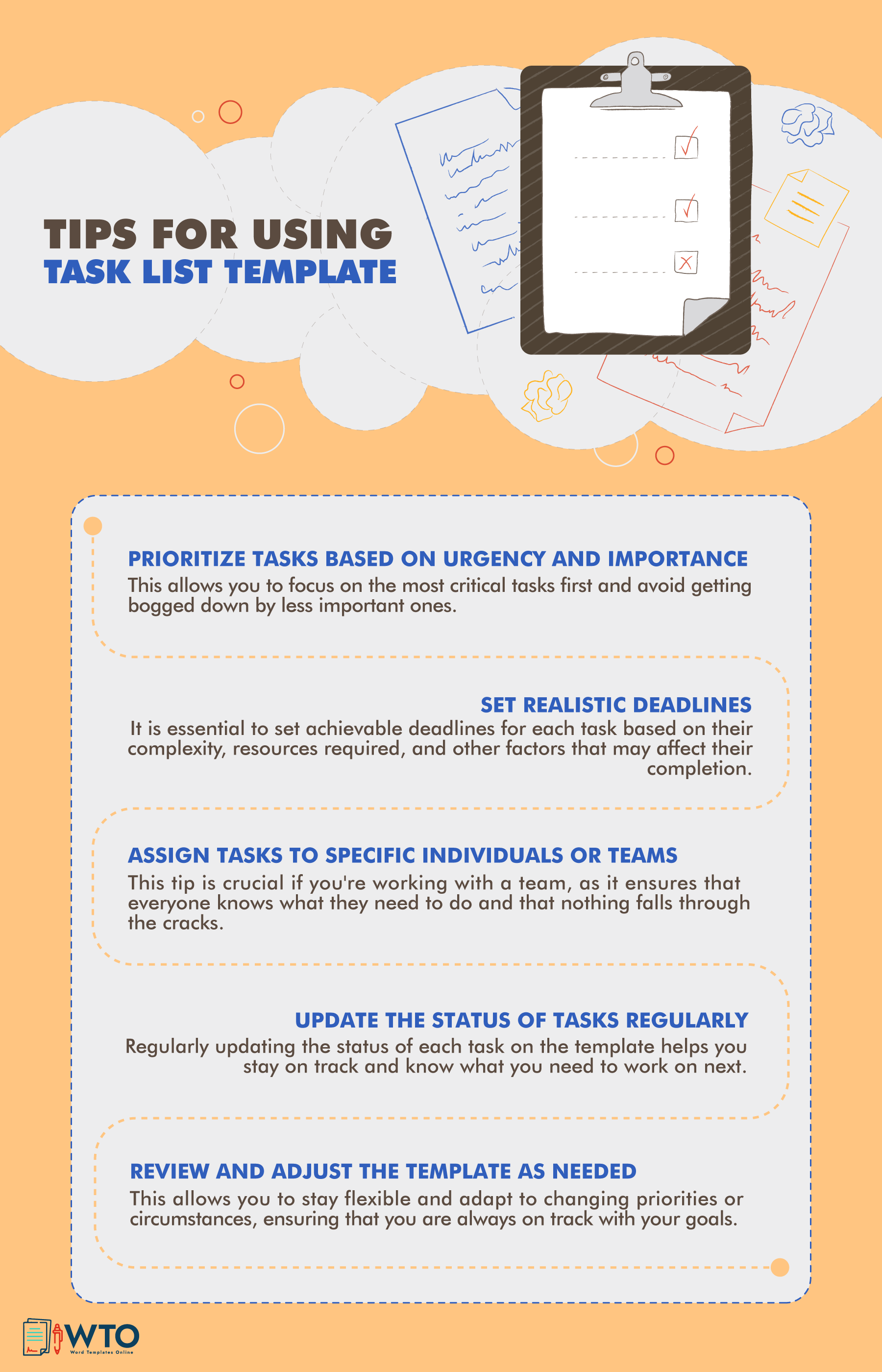
How to Customise a Task List Template in Excel
A template is simply a pre-made outline to guide you on what information to include in your list and the appropriate format and layout to use. Therefore, templates will normally offer you a customization option that allows you to create a document that is specific to your project and fulfils your requirements.
Below is a complete procedure on how to create one using Excel:
Launch excel
Launch Microsoft Excel on your computer by clicking on the Excel icon or finding it in your applications folder. Once Excel is open, you will see a blank workbook. This is where you will create your list. If you have a specific project file, you can open it instead.
Select a task list template
Choose a pre-designed task list template from the available options. You can find templates by selecting “File” > “New” and searching for “task list” in the template search bar. Alternatively, you can also browse online for templates compatible with Excel and download them.
Review the template structure
Take a moment to review the structure and layout of the template. Familiarise yourself with the columns, headers, and data fields already included.
Create column headers
Then, modify the headers and sections of the template in Excel to match the project steps or workflow. Determine the categories or information you want to have. Common column headers may include task name, description, assigned to, status, deadline, priority, and notes. Enter these column headers in the first row of your worksheet.
Enter details of the tasks
Starting from the second row, enter the relevant details for each task in the corresponding columns. For example, under “Task Name,” enter the name or title of the task. Add appropriate information for each activity in the other columns, such as descriptions, assigned individuals, due dates, status updates, and any additional notes.
Add or remove columns
Add or remove columns based on the information you want to track for your tasks. Right-click on the column header and select “Insert” or “Delete” to add or remove columns, respectively.
Adjust column widths
Resize the column widths to accommodate the content in each column. Hover your cursor between the column letters, click, and drag to expand or shrink the width as needed.
Format the cells
Apply formatting options such as font style, size, and colour to enhance the visual appeal and readability of the list. You can also add borders, shading, or cell highlighting to draw attention to important information.
Customise data validation
If your list template includes data validation, customise it to fit your specific needs. Data validation can help ensure that entered data meets certain criteria, such as selecting options from a drop-down list for task status or priority.
Add formulas or conditional formatting
Utilize Excel’s formulas and conditional formatting features to automate calculations and visually highlight specific data based on certain conditions. For example, you can create a formula to calculate task completion percentages or use conditional formatting to highlight overdue tasks.
Save and use the customized template
Once you have made the desired changes and customizations, save the file as a template for future use. Select “File” > “Save As” and choose the file format “.xltx” or “.xlsx” to save it as an Excel template.
By following these steps, you can effectively customise a task list template in Excel to align with your project or personal task management requirements. This flexibility allows you to create a task list that suits your specific needs and enhances your productivity and organisation.
Types of Task List Templates
You can access different types of templates for listing your project tasks. Below are examples of common types of such templates. They vary in complexity and application:
Simple task list
This blank template outlines tasks in a straightforward format. It has sections for recording a brief task description, due date, and status. It is meant for small projects with a few team members that do not require extensive planning. This template is simple in design and easy to use when creating lists and managing employees .
Project task list
It is a generic template designed to organise, track, and manage activities in different projects. The template has sections to indicate the project tasks, deadlines, assignees, priority, and deliverables. It is more detailed and can be used for personal and business projects. This template can also outline potential issues and risks that ought to be mitigated throughout the project.
Daily task list
The tasks that must be accomplished each day in order to advance the project toward its objectives are recorded on a daily task list. It indicates the starting time for each day and task interval and, as such, can be segmented into hours. It should be flexible to accommodate changes or unforeseen circumstances that may arise during the project. Regularly update and communicate the list with relevant team members to ensure everyone is aligned and working towards the project’s objectives.
Weekly task list
It helps individuals or teams plan and organise their tasks for the entire week. It typically includes tasks that need to be accomplished within that specific week. It has sections for the day, date, task description, due date, status, and keynotes. It can be synced with the calendar to optimise scheduling. This document is an effective time management instrument that helps plan and prioritise weekly activities to ensure they are completed before the deadline at the end of the week.
In conclusion, task lists are indispensable tools for effective task management and productivity. Individuals and teams can stay organised, prioritise their work, and monitor progress toward their objectives by using them. To make task management even easier, there are various free templates available on this website that can be customised to fit specific needs and preferences. Thus, project managers and team leaders must use them to increase employee productivity and manage time and resources effectively. This leads to easier and faster delivery of project goals. Templates can be significantly helpful in making effective and professional task lists. They record information such as activity description, deadline, and status to organise and manage project activities accurately. Also, they are reusable and can be customised using tools like Excel to ensure they align with your management style and specific project needs.
About This Article

Was this helpful?
Great! Tell us more about your experience
Not up to par help us fix it, keep reading.

Personal , Planners
32 free weekly planner templates (schedule) – word, excel.

20 Free Goal Tracking & Setting Templates – Word, Excel

10 Free Printable Vehicle Maintenance Logs (Excel | Word)
Budget , Business , Tracking
Free expense tracking templates (weekly, monthly) + tips.

Business , Planners
10 free roadmap templates for small business (editable).

Log Sheets , Tracking
16 effective workout logs and calendar templates.

Business , Tracking
10 free daily work schedule templates for excel.

Business , Statements , Tracking
Free profit and loss statement templates (monthly & annual).

20 Balanced Scorecard Examples & Templates (BSC Overview)

10 Free Phone Tree Templates (Word, PowerPoint)
Thank you for your feedback.
Your Voice, Our Progress. Your feedback matters a lot to us.
IEEE Account
- Change Username/Password
- Update Address
Purchase Details
- Payment Options
- Order History
- View Purchased Documents
Profile Information
- Communications Preferences
- Profession and Education
- Technical Interests
- US & Canada: +1 800 678 4333
- Worldwide: +1 732 981 0060
- Contact & Support
- About IEEE Xplore
- Accessibility
- Terms of Use
- Nondiscrimination Policy
- Privacy & Opting Out of Cookies
A not-for-profit organization, IEEE is the world's largest technical professional organization dedicated to advancing technology for the benefit of humanity. © Copyright 2024 IEEE - All rights reserved. Use of this web site signifies your agreement to the terms and conditions.
Adaptive large neighborhood search algorithm with reinforcement search strategy for solving extended cooperative multi task assignment problem of UAVs
New citation alert added.
This alert has been successfully added and will be sent to:
You will be notified whenever a record that you have chosen has been cited.
To manage your alert preferences, click on the button below.
New Citation Alert!
Please log in to your account
Information & Contributors
Bibliometrics & citations, view options, index terms.
Applied computing
Computers in other domains
Computer systems organization
Dependable and fault-tolerant systems and networks
Embedded and cyber-physical systems
Robotic autonomy
Robotic control
Computing methodologies
Artificial intelligence
Control methods
Planning and scheduling
Planning for deterministic actions
Planning under uncertainty
Recommendations
Conflict-based search with optimal task assignment.
We consider a variant of the Multi-Agent Path-Finding problem that seeks both task assignments and collision-free paths for a set of agents navigating on a graph, while minimizing the sum of costs of all agents. Our approach extends Conflict-Based ...
Task assignment algorithms for unmanned aerial vehicle networks: A comprehensive survey
Unmanned aerial vehicles (UAVs) have significant prospects in a plethora of public and civic spheres. Recently, UAVs have focused primarily on applications where human presence is either impossible or hazardous. A swarm of small UAVs ...
Study on the Task Assignment for Multi-UCAV in Air-Combat
Considering the decision-making problem for UCAV cooperative attack on multiple aerial targets, this paper analyzed the air combat situation superiority, established the UCAV angel superiority model and speed superiority model. Taking into account the ...
Information
Published in.
Elsevier Science Inc.
United States
Publication History
Author tags.
- Task assignment
- Heterogeneous UAV
- Adaptive large neighborhood search
- Reinforcement search strategy
- Research-article
Contributors
Other metrics, bibliometrics, article metrics.
- 0 Total Citations
- 0 Total Downloads
- Downloads (Last 12 months) 0
- Downloads (Last 6 weeks) 0
View options
Login options.
Check if you have access through your login credentials or your institution to get full access on this article.
Full Access
Share this publication link.
Copying failed.
Share on social media
Affiliations, export citations.
- Please download or close your previous search result export first before starting a new bulk export. Preview is not available. By clicking download, a status dialog will open to start the export process. The process may take a few minutes but once it finishes a file will be downloadable from your browser. You may continue to browse the DL while the export process is in progress. Download
- Download citation
- Copy citation
We are preparing your search results for download ...
We will inform you here when the file is ready.
Your file of search results citations is now ready.
Your search export query has expired. Please try again.

COMMENTS
Make a meeting with the team leads and go through the points above. Assign tasks according to each team's availability, interest, and skill required to successfully push the project forward. As team leads - assign tasks further down the pipeline. Track task completion and make necessary changes along the way.
Open the desired task, click "Assignee", and choose the right team member (s). Keyboard shortcuts: Hover over the task and press "A" to open the Assignee picker. Press the space bar to assign yourself. This way makes assigning tasks easier and quicker!
Assignment is a task assigned as part of a job or course of study. In short, assignment = task given to you. Share. Improve this answer. Follow answered May 8, 2012 at 13:19. Fr0zenFyr Fr0zenFyr. 2,317 2 2 gold badges 18 18 silver badges 22 22 bronze badges. Add a comment | Not the answer you're looking for? ...
Understanding Task Assignment. Assigning tasks to team members, also known as task assignment, means distributing the workload for a project or goal among team members based on their expertise, availability, trust, and roles. This ensures tasks are completed efficiently and on time. Assigning tasks isn't just about checking boxes.
Task assignment. Task assignment refers to the process of designating specific responsibilities or duties to individuals or teams, ensuring that work is distributed effectively and efficiently. This practice is essential in communication strategies, as it clarifies roles and expectations, fosters accountability, and enhances collaboration among ...
Task assigning involves defining responsibilities and allocating resources for team members to complete a project effectively. While workplace leaders can assign tasks to team members in different departments, managers typically assign tasks to their department's members. Discovering each team member's strengths, potential, and expertise can ...
Here are six key practices for successful task assignment: Clear and concise instructions: Always provide clear steps on how to accomplish the task. Vague instructions may lead to misunderstandings and poor results. Assign tasks based on skills and experience: Certain tasks require special skills. Assign tasks to those who have the skills and ...
Synonyms for ASSIGNMENT: task, job, duty, project, mission, chore, responsibility, function; Antonyms of ASSIGNMENT: dismissal, discharge, firing, expulsion ...
Assign tasks on a shared list 1. Learn to let go . Many of us find it hard to delegate, since we think it's simpler for us to do it ourselves. This is a myth. Delegating helps you work on higher-level tasks and gives you more time to work on areas that interest you more. It also increases trust within your team and helps everyone to grow and ...
In project management, a task is a work item or activity with a specific purpose related to the larger goal. It's a necessary step on the road towards project completion. For example, it could be something as complex as a mobile app bug fix. Or it could be something as simple as photocopying the latest brochure for distribution.
One of the key elements of effective task assignments is setting clear expectations for team members. This includes outlining the specific tasks that need to be completed, as well as any deadlines or goals that need to be met. It's also important to communicate the purpose of the tasks and how they fit into the overall goals of the project or ...
Getting suggestions from your team members ensures that each of them will contribute to the task's accomplishment. 5. Conduct Training and Supervision. A project's completion necessitates the blending of various delegation techniques, a high degree of team member commitment, and effective planning and execution.
Assignment means you assign tasks to a team member and explain exactly how you want things to be done, with clear-cut instructions. Delegation means you are transferring responsibility for the task to your assignee and giving them more autonomy for how that task gets completed. Assigning tasks is often repetitive but it nevertheless contributes ...
In computing terms the difference between task and assignment is that task is a process or execution of a program while assignment is an operation that assigns a value to a variable. As nouns the difference between task and assignment is that task is a piece of work done as part of one's duties while assignment is the act of assigning; the allocation of a job or a set of tasks.
Manage tasks between all Microsoft 365 apps and devices to increase productivity and stay focused—transform the way you work with task management software. ... Use @mentions within comments in Word, Excel, and PowerPoint to create and assign tasks. 1 Receive an email notification when you're assigned a task, see a preview of the document, ...
To assign a task: Click the Assignee field in the task details pane. Begin typing the person's name or email address. Select the person from the autocomplete results. To unassign a task, navigate to the Assignee field and click the X. Note. Press Tab+M to assign a task to yourself.
Step 3: Assign Tasks. Effectively managing resources and assigning the project tasks to team members involves understanding each assignee's skills and abilities and allocating tasks based on team workload and availability. You can use a project management tool to assign tasks and track their progress. This will make it more interactive and ...
A task management tool that is integrated with other project management features is even better and can help you better manage tasks and projects. Here are some key benefits to look out for when choosing the best task management software to manage your work. Track time spent on work; Collaborate with teams; Organize, prioritize and assign tasks
Task list templates provide a systematic approach to managing your daily schedule, coordinating complex projects, or organizing team assignments.They help you track responsibilities and ensure crucial tasks are completed on time, promoting accountability and transparency.
Project managers and leaders must assign tasks to the right team members to ensure their teams are organised and productive. It is a comprehensive checklist that helps individuals or teams stay organised, track progress, and manage their workload effectively. It is a tool that outlines all of the tasks required for a project from start to finish.
A generic real-time task assignment (RTA) algorithm is designed based on the principle of the greedy approach, where each task is assigned to the best worker with the highest expected completion probability. To understand the fundamental performance issues, we formulate closed-form solutions for task completion probability as well as delay. ...
The former operation dismantles and reconstructs task sequences within a target, potentially resulting in suboptimal assignment of evaluation tasks, while the latter operation reassigns these tasks based on the first operation's output. Extensive experiments validate the effectiveness of the RSALNS algorithm in solving the ECMTAP, demonstrating ...
Troubleshooting assignment access. If you can't see your assignments, notify your teacher. You may not have been added to the classroom or assignment, or your role in the system may need to be updated.